Get Daily Travel Tips & Deals!
By proceeding, you agree to our Privacy Policy and Terms of Use .

Getting Around Greece: Transportation Tips
Independent Traveler
Travel Smarter! Sign up for our free newsletter.
For some people, going to Greece is all about going to the islands. For others, it’s the 2,500 years of history in Athens , on the Peloponnese Peninsula and beyond. But for most travelers, it’s a combination — islands and inland, city and countryside, culture and playground.
How you get from place to place is as varied as the destinations themselves. Whether you’re traveling for a week or a month, chances are you’ll find yourself using planes, boats, buses, trains, cars and maybe even mopeds. Here’s what you need to know.
Flying to and Around Greece
Most people fly to Athens and spend time there before continuing on to the country’s other destinations. Others connect in Athens en route to Santorini, Corfu, Thessaloniki or wherever else they’re headed. The main airport in Athens is Eleftherios Venizelos (ATH). There are also smaller airports throughout the mainland and islands.
If you are connecting to another flight traveling elsewhere in Greece, allow abundant time to make connections — two hours is generally sufficient. You have to go through immigration upon arrival, then claim and recheck your bags; at the height of the tourist season (June – August), lines can be dangerously long.
There aren’t many options to fly directly to Greece from the U.S. Delta offers nonstops from New York (JFK), and American/US Airways flies from Philadelphia, but beyond that, chances are you’ll be making a connection elsewhere in Europe. Because the direct flights can sell out, you’ll want to book early (think February or March for a summer vacation).
If Greece is just one stop on your vacation, you’ll find lots of options for flying there from other European countries — including low-cost carriers such as Ryanair, EasyJet, Vueling and Norwegian Air. One thing to be aware of with all of these airlines is that the initial fare you see — while sometimes unbelievably low — is never what you actually pay. Budget for extras such as seat assignment, checked bags and meals. Also, be aware that you book these online, and mistakes — and changes — can be costly.
Aegean Airlines, Greece’s largest airline, has flights to and from a number of European destinations as well as within the country. Another option for traveling around Greece is by seaplane. Hellenic Seaplanes is in the process of establishing routes between various island destinations and coastal ports, as well as charter flights and sightseeing tours.
Thanks to infrastructure overhauls for the 2004 Summer Olympics, there are efficient systems in place for getting where you want to go once you land in Athens. Subway and bus routes take you to central points in Athens, as well as to the ports of Piraeus, Rafina and Lavrio. Athens itself is about 20 miles away.
Resources: en.AegeanAir.com EasyJet.com Hellenic-Seaplanes.com Norwegian.com Ryanair.com Vueling.com
Greece by Boat
Considering that Greece has nearly 3,000 islands (227 inhabited) and more than 8,500 miles of coastline, it should come as no surprise that boats are one of the most common ways to get around. Indeed, Greece has an expansive network of ferries between the various islands and archipelagos, as well as ferry services to Italy and Turkey .
Within easy reach of the Athens International Airport is Piraeus, which is the main port for ferries plying the Aegean Sea. From there, there are regular routes to the major islands in the Cyclades, Crete, the Saronic Gulf Islands, the Dodecanese chain and the Northeast Aegean Islands. A smaller port in Athens is Rafina, which has ferry service to Evia, some of the northernmost Cycladic Islands and many of the Northeast Aegean Islands.
If you’re traveling to the Ionian Islands off the west coast of Greece, most ferries leaves from Patras or Kyllini on the Peloponnese or Igoumenitsa in Epirus.
You can also travel to Italy (including ports in Ancona, Bari, Venice and more) from Patras or Igoumenitsa. If you’re combining a visit to Turkey with Greece, you’ll find ferry service between six Greek islands and various ports in Turkey.
There are a number of ferry companies, with sea-going vessels that range from traditional large ferries carrying both passengers and vehicles to faster-moving catamarans and hydrofoils. You can see the various options as well as schedules and prices at Ferries.gr .
Some pointers for boat travel:
– Get tickets in advance, especially if you are taking a hydrofoil or catamaran. They fill up quickly.
– Always check the schedule online prior to heading to the dock. These can change from one day to the next, and sometimes the smaller boats cancel because of rough seas.
– Never assume the boat schedules are consistent. While they are in full tilt during the summer tourist season, service can be very limited other months of the year.
– Get to the dock at least an hour before departure. Travelers tend to line up for popular routes, claiming the best seats first.
– Leave some wiggle room for connecting to flights. For example, if you are flying out of Athens on August 15, don’t plan to take the boat from Santorini to Athens on the 14th. Instead, head up on the 12th or 13th and spend a night or two in Athens. This will protect you if the trip gets canceled due to weather.
Resources: Ferries.gr GreekFerries.gr SeaJets.gr
Greece by Bus
For getting around mainland Greece and Athens, you’ll find an extensive and efficient network of buses. All are operated by a government organization, Ktel. In general, they are clean, comfortable and reasonably priced. Information on schedules and routes is available at local tourist information centers everywhere you go.
Resources: VisitGreece.gr/en/travelling_to_greece/by_bus
Greece by Train
If you’ve taken trains throughout Western Europe, you’ll be very disappointed with the Greek rail system. Greek trains are slow and generally not very clean, and they don’t cover the whole country. That said, they are cheap and connect Athens to the major Greek cities including Thessaloniki, Patras and Volos.
You can purchase a Eurail Greece Pass for three to 10 days of unlimited first-class travel over a one-month period, as well as discounts on several ferry lines. Get it through Rail Europe or your travel agent.
Resources: www.Osenet.gr RailEurope.com
Greece by Car
Driving the mountainous roads of the mainland and the busy streets of some of the more popular islands is not for everyone. If you’re up to the challenge, over 21 years old and comfortable with a standard transmission, renting a car is definitely a great way to explore remote villages that are not reachable via public transportation.
You will need an International Driving Permit accompanied by a valid driver’s license from your home country. In the U.S., these are available through AAA (American Automobile Association) and NAC (National Automobile Club).
Your best bet is to reserve your vehicle prior to flying to Greece, especially if you want to have a Jeep or some other 4WD (which are the most fun for exploring the islands). Rental cars sell out fast, especially on the most popular islands such as Santorini and Crete.
In destinations all over Greece, you’ll find small local agencies that rent cars (as well as mopeds and ATVs). Larger, better-known companies include Europcar, Budget and Kemwel.
Resources: AAA.com/vacation/idpc.html Budget.com Europcar.com Kemwel.com
Greece by Moped and ATV
On many of the Greek Islands, you can rent motorbikes and ATVs. Not only are they the most affordable way to get around, but they’re also a great way to explore small roads and discover off-the-beaten track villages. The negatives? They are no fun in the rain and can be very uncomfortable for long stretches of bumpy roads. They’re dangerous as well, especially when sharing winding roads with cars and trucks. Always wear a helmet.
You need an International Driving Permit — while many of the rental companies won’t ask for one, you’ll regret not having it should you get in an accident. According to Greek law, you will have been driving illegally and insurance will be invalidated. A word about insurance: Read the fine print and make sure you get full coverage.
Resources: Santorini-Bikes.com
You May Also Like Where to Stay in Greece: Lodging Tips Athens Travel Guide Greek Isles Revealed
–written by Susan Farewell
We hand-pick everything we recommend and select items through testing and reviews. Some products are sent to us free of charge with no incentive to offer a favorable review. We offer our unbiased opinions and do not accept compensation to review products. All items are in stock and prices are accurate at the time of publication. If you buy something through our links, we may earn a commission.
Top Fares From

Don't see a fare you like? View all flight deals from your city.
Today's top travel deals.
Brought to you by ShermansTravel
Greece: 8-Nt, Small-Group Tour, Incl. Aegina,...

Amsterdam to Copenhagen: Luxe, 18-Night Northern...
Regent Seven Seas Cruises

Ohio: Daily Car Rentals from Cincinnati

Trending on SmarterTravel

Greece Travel Guide
Last Updated: August 27, 2024

Greece is one of Europe’s most beautiful destinations, home to picturesque islands, delicious food, thousands of years of history, and wonderful people.
It’s also one of the more affordable countries on the Euro.
You can travel around Greece for a fraction of what you’d spend in other Western Europe, which is just one of the many reasons why I absolutely love visiting Greece.
I’ve been to Greece many times and have spent months exploring this country. I cannot say enough good things about it.
Visiting Greece is always the highlight of my summer European travels. There’s just something magical about this country. There’s an energy in the air and you can’t help but think, “Maybe I should never leave?” It sucks you in.
And, while the Greek islands get the most attention, the interior of the country — with its small towns, historic ruins, and mountain hikes — is too often overlooked and underappreciated.
So, while you may have a strong desire to stick to the islands, try to get to some of the places in the interior if you can. You won’t regret it.
This Greece travel guide combines all my knowledge and experience to help you plan an epic, affordable trip!
Table of Contents
- Things to See and Do
- How to Stay Safe
- Where to Stay
- Typical Costs
- Suggested Budget
- Money-Saving Tips
- How to Get Around
- Best Places to Book Your Trip
- Related Blogs on Greece
Click Here for City Guides
Top 5 things to see and do in greece.

1. Visit the Acropolis
Located in Athens , this magnificent hilltop complex from the 5th century BCE includes ancient buildings and ruins like the temple to Athena and the famous Parthenon. A UNESCO World Heritage Site, this is an excellent place to learn about the city’s history. You’ll also get to enjoy an expansive view of the skyline and the nearby ruins. During the summer, it’s swarming with tourists so get there early. Admission is 20 EUR, or for 30 EUR you can get a 5-day combined ticket that includes many other archaeological sites in Athens. For a guided tour, Athens Walking Tours runs guided tours for around 55 EUR (including admission) that skip the line.
2. Discover historic Crete
Crete has a long, long history. It was once home to the ancient Minoan civilization (which predated Greek civilization), and you can still visit the Bronze Age ruins of Knossos, the ancient capital of the Minoan empire (also considered the oldest city in Europe). The island is the largest in all of Greece and has beautiful beaches (including a beach with pink sand), plentiful hiking, quaint towns, and delicious food and wine. It’s affordable and because of the island’s size, you can still escape the summer crowds. Don’t skip this island!
3. Hike up Mount Olympus
Mount Olympus is the legendary home of the Greek gods. Any climb to Mount Olympus starts from the town of Litochoro, 150 kilometers (93 miles) south of Thessaloniki. At 2,917 meters (9,570 feet) high, it’s the tallest mountain in Greece. The hike up is both strenuous and mystical. As you climb, it becomes abundantly clear why Greeks thought it was this mountain from which the gods ruled!
4. See Meteora’s monasteries
Meteora is famous for its monasteries that sit atop sheer rock mountains . They are a stunning sight to see and worth the steep trek up to the top. The monasteries date back to the 9th-10th centuries when Orthodox Christian hermit monks isolated themselves on the cliffs and in the many caves in the area. In the 12th century, the monastic community became more organized and in the 14th century the Great Meteoron Monastery was constructed (one of the ones that you can visit today). Although more than twenty monasteries used to perch on these sandstone cliffs, only six remain today. They are still active, with around 50 nuns and 17 monks living here. It’s a 3 EUR entrance fee per monastery.
5. Explore the islands
The Greek islands are some of the best and most popular in the world. Soak in the sun, admire the white sand and blue-roofed houses, see the windmills (an iconic feature of the Cyclades) and just relax. Some highlights are Milos, Santorini , Ios , Mykonos , Naxos , Zakynthos, Rhodes, and Kos. During the summer, the islands fill up so book early!
Other Things to See and Do in Greece
1. learn some history.
Greece is where western civilization began and everywhere you turn, you’ll find ruins that are thousands of years old. Start in Athens with the museums, the Acropolis and surrounding ruins in the Agora, and then set off to explore the ruins of Delphi, Sparta , Corinth, and Crete . There are also great archaeological museums everywhere to see artifacts up close and learn even more. This country is a history lover’s dream!
2. Explore Sparta
Sparta was the ancient rival of Athens and known for its fierce warriors (the entertaining but historically-inaccurate film 300 was based on the Spartans). The city has a long history and plenty of ruins to explore. There is no shortage of things to do , museums to visit, excursions to take, and places to eat when you visit the city. Be sure to check out the King Leonidas statue, visit the Archeological Museum, and explore the Diros Caves. I especially enjoyed the Museum of the Olive and Olive Oil, which takes you through how olives have become a staple of everyday life in Greece. It’s an often-overlooked city even though it’s only a 2.5-hour drive southwest of Athens. It’s a great place to learn some history without the crowds.
3. Attend the Athens Epidaurus Festival
Every summer, the Athens Epidaurus Festival hosts concerts and performance theater, including reenactments of famous Greek plays. There are operas, indie musicians, dance performances, lectures, and more. It’s a unique celebration of the performing arts in all their forms and worth your time if you’re in the city when it’s happening. Started in 1955, it’s one of the country’s top cultural events and runs for the whole summer (May-October). If it coincides with your visit, you’ll see just how proud the Greeks are of their past. Tickets for each performance cost as little as 5 EUR.
4. Soak up the sun in Corfu
The Cyclades Islands may get all the press but sunny Corfu on Greece’s west coast is also a good place to enjoy the beach too. It’s a popular destination for young backpackers, but once you get out of the main town, you can avoid them and their partying ways and get the island to yourself! There are plenty of quiet beaches, ancient ruins, and beautiful villages to explore. I especially recommend checking out the Achilleion a palace from 1890 as well as Nymfes Village, historic Corfu Town, and the incredible views from Angelokastro Castle. You’re just a stone’s throw away from Albania too.
5. Explore the Delphi Ruins
Delphi was a place of spiritual significance to the ancient Greeks. Located around 2.5 hours northwest of Athens, this UNESCO World Heritage Site is where the omniscient Oracle would contact the god Apollo and give his advice to those seeking good fortune. Although the eternal flame no longer burns inside the temple, a visit to the Temple of Apollo is obligatory if you’re nearby. Admission is 12 EUR and includes entry to the museum as well as the archaeological site itself (which includes far more than just the Temple of Apollo). There are a lot of day trips to Delphi from Athens starting around 48 EUR.
6. Explore Melissani Cave
This otherworldly cave grotto can be accessed by a short yet postcard-worthy boat tour. Located on the island of Kefalonia on the western side of Greece, here you can admire the seemingly magical ultramarine waters and the monumental walls that envelope you as you make your way through this hidden underground landscape. I love how you can see the lush forest and trees just above the cave walls. It’s totally surreal and the water is so clear that it looks like the boats are floating on glass. Admission is 7 EUR and includes the boat ride.
7. Hike the Samaria Gorge
Samaria Gorge in beautiful Crete is one of Greece’s National Parks and a UNESCO World Biosphere Reserve. For outdoor enthusiasts, this is considered one of the best hikes in Greece. While it isn’t the shortest or easiest trek (it’s 16 kilometers/10 miles), the gorge does promise beautiful landscapes, fantastic photo opportunities, and a great workout. Along the way, you’ll see the White Mountains and the trek ends at the lovely beach town of Agia Roumeli. The whole trek takes 5-7 hours to complete so make sure you bring water, sunscreen, and a hat as the heat can be overwhelming. The views are worth it though!
8. Experience the Patras Carnival
Every year in mid-January, the city of Patras (located 2.5 hours west of Athens) hosts what is basically a month-and-a-half-long party that starts on January 17th and runs to the beginning of Lent. There’s a slew of events both major and minor, increasingly crazy weekends, treasure hunts, and various costume parades (which even feature floats). It’s a lively time and as the largest such festival in Greece, attracting tons of revelers. If you want to attend, it’s a good idea to make hotel reservations well in advance as things fill up.
9. Tour the Archaeological Museum of Heraklion
The number one attraction in Crete , this museum also happens to be Greece’s second-largest archaeological museum (the museum in Athens is the largest). The artifacts here cover more than 5,500 years of history. One of my favorite pieces was a game board that dates all the way back to 1600 BC. The stunning collection here highlights the Cretan civilization (dating back from Neolithic times through to the Roman empire), with ancient pottery, jewelry, sarcophagi, colorful frescoes from Knossos, and more. Its Minoan collection is the most extensive in the world. You could easily spend hours here — especially if you love history like me. Admission is 12 EUR in the summer and 6 EUR in the winter.
10. Party on Ios
Ios has the wildest nightlife out of all the Greek islands. It is the summer party island where days are spent hungover on the beach and the nights are spent eating cheap food and drinking. If you don’t want to do that but still want to see Ios, it’s best to go to the eastern part of the island where it’s quieter. Don’t let Ios’ party reputation deter you from visiting though, it’s a beautiful, rugged island (and home to the grave of Homer, who wrote The Iliad and The Odyssey). It’s only busy from June-August so you can visit in the shoulder season to escape the party crowd.
11. Visit Thessaloniki
With more than 1 million inhabitants, Thessaloniki is Greece’s second-largest city after Athens. Although it dates back to 315 BCE, a lot of the city was destroyed by fire in 1917 and then by bombing during World War II. The result is a combination of more modern European city urban planning alongside Early Christian, Roman, and Byzantine monuments. In fact, Thessaloniki has more UNESCO World Heritage Sites (15!) than any other city in Europe. Be sure to visit the White Tower, the Rotunda, the Arch of Galerius, and Galerius Palace as well as the many churches (such as the Hagia Sofia and Hagios Demetrios). There are also several great museums here, including the Archaeological Museum, the Museum of Byzantine Culture, the Jewish Museum, and the Olympic Museum.
12. Go to Zakynthos
Just south of Kefalonia in the Ionian Sea is Zakynthos , one of Greece’s most popular islands. With its soft, sandy beaches and charming villages, it’s easy to see why this island is a fan favorite. It can be busy, particularly in the summer, so head away from the main tourist area (go north, west or inland) or visit in the off-season to escape the crowds. Zakynthos is also a breeding area for loggerhead turtles and you can see them on Lagana Beach or on Turtle Island but take care to do so responsibly. Other activities include seeing the Blue Caves, Marathonisi Islet, and Shipwreck Beach (you’ll need to take a boat tour to get there). There are also tons of churches, monasteries, and ruins to check out too.
13. Visit Monemvasia
Monemvasia is a medieval castle town in Laconia on the coast of the Peloponnese, around 90 kilometers (56 miles) southeast of Sparta . It’s a spectacular island to visit as it is built into the side of a huge rock! Monemvasia was founded by the Byzantines in the 6th century and is a quiet town perfect for relaxing on the beach before dining under the stars at seaside taverns or on cobbled streets in the town. There are ruins to explore and a mosque from the 16th century now houses the towns Archaeological Museum. You can also walk out to the lighthouse for incredible sea views. If you’re into hiking, there are some trails that will take you past chapels and settlements up to hilltops to admire the views or down to secluded beaches.
14. Explore Ioannina
Next to Lake Pamvotida in northwestern Greece, Ioannina is a castle town that is bursting with museums. Don’t miss the Byzantine Museum, the Ethnographic Museum, the Archaeological Museum, and the Silversmithing Museum (the area is well-known for its beautiful jewelry). Head to the castle at sunset for a peaceful end to your day. You can use the town as a base for exploring the nearby Pindus National Park, the Tzoumerka mountain chain, the Cave of Perama, and the Byzantine town of Arta as well. You won’t need more than a couple of days here but it is well worth stopping if you are passing through.
15. Go wine tasting
While Greece isn’t as internationally renowned for wine as other European countries such as France or Spain, it should be. The Greek wine-making tradition goes back at least 6,500 years and is still going strong. Wine regions are spread across the country, but Crete has one of the oldest wine-making traditions (and over 30 wineries to visit around the island), while the wineries of Santorini make for an interesting tour due to the way that grape vines must be grown here (to protect against harsh winds). Wine tours start around 50 EUR for a full-day tour.
16. Take a cooking class
Greek food is legendary. If you’re a foodie like me and want to learn more about the cuisine and culture behind it, try a cooking class . Bring a taste of your trip home by learning how to make some traditional recipes (including favorites like tzatziki and moussaka) while learning about the importance of each dish directly from a local chef. Cooking classes generally last 3-4 hours and cost 70-100 EUR.
17. Take a boat tour
A boat tour is one of the best ways to see the islands, especially as some beaches are only accessible by water. You can find these on most of the islands and they’ll take you to incredible places you can’t get to by car. Most tours also have stops for snorkeling and lounging on the beach, and many include drinks and lunch. Half-day tours start at 20 EUR, while full-day tours are around 30 EUR. Prices can vary greatly depending on where you’re taking the tour from.
18. Go diving
Diving has become increasingly popular in the Greek Islands. On Mykonos , Paradise Reef has a large variety of marine life, including sponges, barracuda, octopus, and starfish. Ios is popular with beginners due to its crystal-clear waters and relatively calm waves. On the other hand, Santorini has less marine life but tons of shipwrecks. Shore dives start around 50 EUR, while a two-tank dive on a boat starts around 70 EUR. You can also take a beginner discovery course for around 70 EUR or a variety of PADI courses starting at 65 EUR.
19. Tour an olive oil farm
Greek olive oil is considered the best in the world and has been central to the country’s culture for tens of thousands of years (the Olive Oil Museum in Sparta has fossilized olive oil leaves from 60,000 years ago!). Dive deep into the country’s olive oil tradition by visiting a farm and taking a tour to learn more about this iconic staple. You’ll usually get to walk through the olive groves and even have a tasting at the end. Tours are generally a couple of hours and start around 30 EUR.
For more information on specific cities in Greece, check out these guides:
- Athens Travel Guide
- Corfu Travel Guide
- Crete Travel Guide
- Ios Travel Guide
- Mykonos Travel Guide
- Naxos Travel Guide
- Santorini Travel Guide
- Sparta Travel Guide
How to Stay Safe in Greece
Greece is very safe for backpacking and solo travel. Violent attacks are uncommon. Petty crime is about the worst that could happen to you, specifically pickpocketing in Athens, where it is prevalent. Fortunately, Greek police have really cracked down on perpetrators. Nevertheless, be aware of your surroundings and keep your valuables out of sight when you’re in markets, on busy streets, or when using public transportation.
Solo female travelers should generally feel safe here. However, the standard safety precautions apply (never leave your drink unattended at the bar, never walk home alone intoxicated, etc.). For specific information about a place, check out one of the many incredible solo female travel blogs on the web. They’ll give you tips and advice that I can’t.
You won’t find a lot of travel scams in the country but read this article on common travel scams to avoid so you know what to avoid.
If you go out hiking, always check the weather first. Bring sunscreen, water, and a hat. It can get incredibly hot here!
Be careful when driving as Greek drivers tend to be on the aggressive side and some of the roads aren’t very well maintained.
If you experience an emergency, dial 112 for assistance.
Always trust your gut instinct. Make copies of your personal documents, including your passport and ID.
The most important piece of advice I can offer is to purchase good travel insurance. Travel insurance protects you against illness, injury, theft, and cancellations. It’s comprehensive protection in case anything goes wrong. I never go on a trip without it as I’ve had to use it many times in the past. You can use the widget below to find the policy right for you:
Where to Stay in Greece
Greece has something for everything and you can often find small family-run operations on the islands. It’s not hard to even find budget accommodations with nice extra like pools either! The specific destination guides have more places but here are some my suggested places to stay in Greece:
- Selina (Athens)
- Athens Hawks Hostel (Athens)
- BedBox (Athens)
- Studio Eleni (Mykonos)
- Caveland (Santorini)
- Bedspot Hostel (Santorini)
- Asterolithos Hotel (Santorini)
- Rethymno Youth Hostel (Crete)
- Intra Muros (Crete)
- The Pink Palace (Corfu)
- Francesco’s (Ios)
- FarOut Beach Club (Ios)
- Castle View Camping and Bungalows (Sparta)
- Lakonia Hotel (Sparta)
Greece Travel Costs
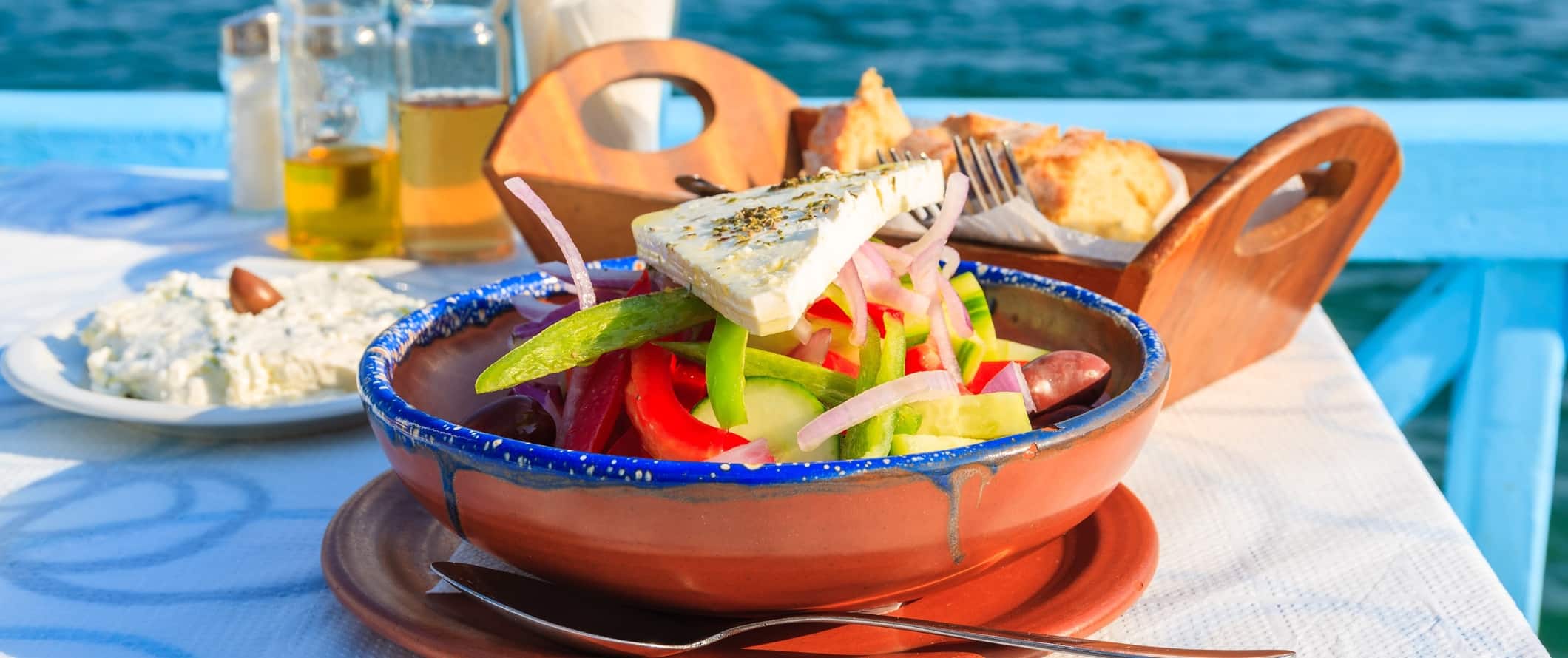
Accommodation
- Hostel Dorms – 15–20 EUR per night (20–40 EUR in summer)
- Hostel private rooms – 75–120 EUR
- Budget hotels – 40–60 EUR. (50% more in summer)
- Airbnb private rooms – 25–45 EUR
- Airbnb apartments – 50 EUR
- Street food – 3–6 EUR
- Sit-down restaurants – 12–25 EUR
- Casual take-out places – 7–12 EUR
- Fast food (think McDonald’s) – 9 EUR
- Beer – 3–5 EUR
- Glass of wine – 3–6 EUR
- Cappuccino/latte- 3–4 EUR
- Bottled water – 2 EUR
- Groceries for a week – 35–50 EUR
Greece Suggested Budgets
Backpacker – 40-60 eur per day.
This budget covers a hostel dorm, eating cheap food, cooking some of your meals, and doing only free activities like hiking and relaxing on the beach. You’ll need to limit your drinking and use local transportation to get around.
If you’re visiting during peak season, expect to spend on the higher end of the range. If you plan on drinking, add 5-15 EUR per day to your budget.
Midrange – 100-130 EUR Per Day
On a mid-range budget, you can stay in budget hotels, private hostel rooms, or an Airbnb. You’ll be able to eat out for most meals, enjoy a few drinks, take the train, visit some paid attractions like museums and ruins, take the occasional taxi, and rent a bike or scooter to get around.
If you’re staying on the more expensive islands and drinking a lot, expect to spend closer to 150–180 EUR.
Upscale – 235 EUR Per Day
You can stay in a hotel, eat out anywhere you want, drink as much as you want, do paid tours and more expensive activities (like diving), rent a car to get around, and generally enjoy the finer things in life!
This is just the ground floor for luxury though. Expect to pay upwards of 50 EUR more per day on the islands.
Greece Travel Guide: Money-Saving Tips
Greece is affordable. Sure, islands like Santorini and Mykonos are expensive but, for the most part, if you are “keeping it local” you aren’t going to spend a lot of money here. Here are my favorite ways to save money when you travel to Greece:
- Use the Greek salad/bread rule – If the bread cover is .50 EUR or a Greek salad is less than 7 EUR, the restaurant is cheap. If the cover is around 1 EUR and a salad is 7-8.50 EUR, the prices are average. Anything more than that and the place is expensive. Use this rule to figure out how to eat at cheap restaurants.
- Eat super cheap – Gyros and other street snacks only cost a few euros and can keep you full for around 15 EUR per day if you’re on a tight budget.
- Rent a moped – It’s cheaper than a car and a fun way to see the various towns and cities — especially on the islands. You can usually rent a moped for around 15 EUR per day. Just drive carefully as Greek drivers tend to be aggressive.
- Get off the beaten path – Greece is a cheap country and even cheaper when you get away from the touristy islands or popular destinations. Head off the beaten path and you usually see prices drop by 30% or more.
- Book overnight ferries – Greece’s inter-island ferries can get expensive if you are visiting a lot of islands. Taking the overnight ferries can save you up to half off the normal price. Plus, it saves you a night of accommodation. Moreover, if you book the ferries around two months in advance, you can save up to 25% off the cost of your ticket.
- Get a ferry pass – Eurail has a ferry pass that has 4- and 6-trip options. The only caveat is that you can only take Blue Star and Hellenic Seaways ferries. Those tend to be the larger, slower ferries and, depending on the islands, might require you to connect somewhere. You’ll need to research routes in advance to see if the pass is worth it. I would search routes on FerryHopper to see if it works for you.
- Take public transportation – Buses, while sometimes running on inconvenient schedules, are the best way to get around Greece. Taxis are very expensive so minimize their use whenever you can and stick with the buses.
- Visit in the off-season – July and August are the most expensive months, so skip the middle of summer if you’re on a budget. Prices will be significantly cheaper.
- Stay with a local – Couchsurfing is a great way to get a free place to stay and meet locals. There are a ton of hosts throughout the country (I stayed with one in Athens) and it’s my favorite way to get to know the “real” Greece.
- Buy wine at the store – You can buy a great bottle of wine for around 5 EUR at the store. It’s a lot cheaper than drinking at the bar.
- Have an ISIC Card – To save on the cost of admission to museums and other tourist attractions, be sure to present a valid student card. The ISIC is typically accepted in places where a foreign student ID is not.
- Go to museums on their free admission days – Most museums have some days when admission is free. Check the Odysseus Culture website for details as they vary from museum to museum.
- Get combined tickets – Historical attractions in Greece are often priced so that it’s always a better deal to buy a combined ticket. If the sites you are going to offer one, buy it. It will save you money.
- Use points for accommodations – If you have credit card points that can be used for cash, using them to book accommodation can save you a ton of money. This post has more information to help you with the basics so you can start collecting points now and use them on your trip .
- Rent a car – Car rentals can be incredibly cheap in Greece. Prices start at just 20 EUR per day when booked in advance. Drivers need to be at least 21 and have had their license for one year. An International Driving Permit is also required. Discover Cars is an excellent place to find a car for your trip.
- Bring a water bottle – The tap water here is generally safe to drink so bring a reusable water bottle to save money and reduce your plastic use. LifeStraw is my go-to brand as their bottles have built-in filters to ensure your water is always clean and safe.
How to Get Around in Greece
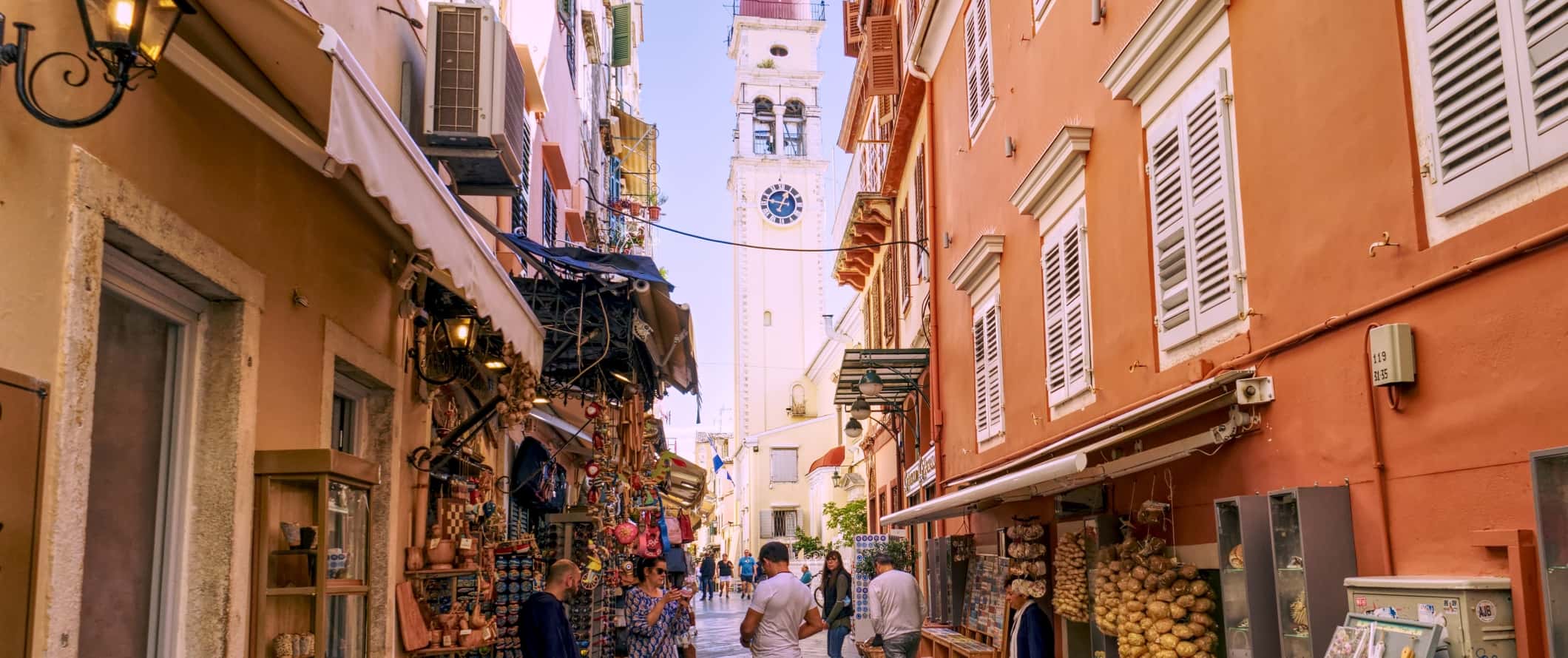
Public transportation – In the larger cities, public transportation is widely available. For example, Athens has a fantastic subway system starting at 1.20 EUR per ride. There’s also an extensive tram and bus system in Athens as well. In smaller cities, buses are the primary mode of transportation and prices vary by distance, usually starting at 1.20 EUR.
Buses – KTEL is the main bus operator in Greece. You can look up schedules and prices online, but their website is pretty outdated and you’re better off booking tickets at the actual bus station. Getting from Athens to Sparta takes around 3.5 hours and costs around 20 EUR, while Athens to Thessaloniki takes around 5.5 hours and costs around 42 EUR. Thessaloniki to Ioannina takes 3.5 hours and is 24 EUR.
Trains – Train travel in Greece isn’t great. Trains are unreliable and slow and there are only a few routes in the country between Athens and other major cities, like Thessaloniki and Patras. You’re better off driving or taking the bus. However, if you do get the train, a trip from Athens to Thessaloniki takes about 4.5 hours and costs at least 20 EUR.
Ferries – Because Greece has a lot of islands, you have to deal with taking ferries to get around. Expect to spend an average of 35 EUR per trip, though you could spend as little as 10 EUR if the islands are really close together. From Athens, most ferries to the Cyclades Islands start around 40 EUR.
Taking the overnight ferries can save you up to half off the normal price plus save you a night of accommodation so if you’re not in a rush, book those!
There are many different ferry companies, and most are created equal. High speed ferries or catamarans cost a lot more (book in advance). You can research routes and ticket prices using FerryHopper and gtp.gr .
If you’re ok traveling on the slower ferries and your routes match the available routes, the Eurail/Interrail ferry pass is worth considering as you’ll get discounts with this pass. Search routes on FerryHopper to see if it works for you.
Flying – Flying is a quick and affordable way to get around Greece and between islands (though not all islands have airports). A one-way flight from Athens to Santorini or Mykonos takes less than one hour and costs around 25-35 EUR. Flights can dip to as little as 20 EUR when booked in advance.
Scooter/Quad rentals – Renting a scooter or ATV is a really popular way to discover many parts of Greece, particularly the islands. It lets you explore at your own pace and is quite affordable. Scooter rentals cost between 15-25 EUR per day depending on the location and if it is peak season or off-season. ATVs cost around 38-50 EUR per day.
Car rental – Car rentals here are super affordable, starting at just 20 EUR per day for a multi-day rental. Expect manual transmissions. Drivers need an International Driving Permit before renting as well and need to be at least 21 years old. For the best rental car deals, use Discover Cars .
Hitchhiking – Hitchhiking is safe and common in many parts of Greece, especially on the islands. That said, it may be hard to find rides in the off-season when traffic is less busy. Check Hitchwiki for more information.
When to Go to Greece
Peak season in Greece is from June-August. Temperatures hover around 33°C (92°F) and popular destinations like Santorini and Mykonos experience a huge influx of visitors. Prices increase during this time as well. But the overall atmosphere and weather are great during this time, so it’s still worth visiting during peak season.
Personally, I think the best time to visit Greece is shoulder season (March-May and September-October). It’s still warm during these times but there aren’t as many crowds and prices are cheaper. It’s also easier to meet locals during this time. There is more rain during this time of year, so pack for that. Overall, it’s a particularly great time to hang out in the Mediterranean.
Winter is from November to February. It gets cold and tourist crowds thin out considerably. There’s quite a bit of rain and temperatures vary quite a bit from north to south, with it sometimes dropping to 11°C (52°F) in some places (Athens sometimes gets snow). Many of the islands — particularly Santorini and Mykonos — almost shut down entirely during the off-season. In short, I’d skip a winter visit unless you’re only planning to visit museums.
Greece Travel Guide: The Best Booking Resources
These are my favorite companies to use when I travel. They consistently have the best deals, offer world-class customer service and great value, and overall, are better than their competitors. They are the companies I use the most and are always the starting point in my search for travel deals.
- Skyscanner – Skyscanner is my favorite flight search engine. They search small websites and budget airlines that larger search sites tend to miss. They are hands down the number one place to start.
- Hostelworld – This is the best hostel accommodation site out there with the largest inventory, best search interface, and widest availability.
- Booking.com – The best all around booking site that constantly provides the cheapest and lowest rates. They have the widest selection of budget accommodation. In all my tests, they’ve always had the cheapest rates out of all the booking websites.
- HostelPass – This new card gives you up to 20% off hostels throughout Europe. It’s a great way to save money. They’re constantly adding new hostels too. I’ve always wanted something like this and glad it finallt exists.
- Get Your Guide – Get Your Guide is a huge online marketplace for tours and excursions. They have tons of tour options available in cities all around the world, including everything from cooking classes, walking tours, street art lessons, and more!
- The Man in Seat 61 – This website is the ultimate guide to train travel anywhere in the world. They have the most comprehensive information on routes, times, prices, and train conditions. If you are planning a long train journey or some epic train trip, consult this site.
- Rome2Rio – This website allows you to see how to get from point A to point B the best and cheapest way possible. It will give you all the bus, train, plane, or boat routes that can get you there as well as how much they cost.
- FlixBus – Flixbus has routes between 20 European countries with prices starting as low 5 EUR! Their buses include WiFi, electrical outlets, a free checked bag.
- SafetyWing – Safety Wing offers convenient and affordable plans tailored to digital nomads and long-term travelers. They have cheap monthly plans, great customer service, and an easy-to-use claims process that makes it perfect for those on the road.
- LifeStraw – My go-to company for reusable water bottles with built-in filters so you can ensure your drinking water is always clean and safe.
- Unbound Merino – They make lightweight, durable, easy-to-clean travel clothing.
- Top Travel Credit Cards – Points are the best way to cut down travel expenses. Here’s my favorite point earning credit cards so you can get free travel!
- Ferry Hopper – If you’re looking to book your ferries, this website is an easy way to search the various companies, piece together routes, and book your tickets.
- Take Walks – This walking tour company provides inside access to attractions and places you can’t get elsewhere. Their guides rock and they have some of the best and most insightful tours in all of Greece.
GO DEEPER: Nomadic Matt’s In-Depth Budget Guide to Europe!

There’s a lot of free information online but do you want to spend days searching for information? Prob not! That’s why guidebooks exist.
While I have a lot of free tips on Europe, I also wrote an entire book that goes into great detail on everything you need to plan a trip here on a budget! You’ll get suggested itineraries, budgets, even more ways to save money, my favorite restaurants, prices, practical information (i.e. phone numbers, websites, prices, safety advice, etc etc), and cultural tips.
I’ll give the insider view of Europe that I got from years of traveling and living here! The downloadable guide can be used on your Kindle, iPad, phone, or computer so you can have it with you when you go. Click here to learn more about my book on Europe!
Greece Travel Guide: Related Articles
Want more tips for your trip? Check out all the articles I’ve written on Greece travel and continue planning your trip:
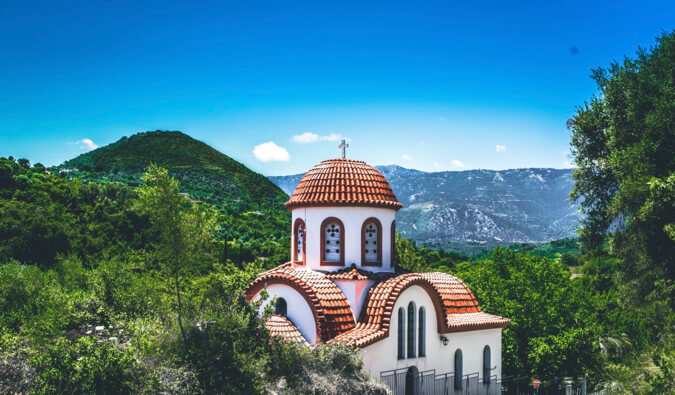
Traveling Greece: How Much Does It Cost?

How to Explore the Cyclades Islands in Greece

The 6 Best Hostels in Athens
Get your free travel starter kit.
Enter your email and get planning cheatsheets including a step by step checklist, packing list, tips cheat sheet, and more so you can plan like a pro!

- Where To Stay
- Transportation
- Booking Resources
- Related Blogs
- Getting around Greece: Transportation Tips
Book your individual trip , stress-free with local travel experts
Select Month
- roughguides.com
- getting-around
- Travel guide
- Itineraries
- Local Experts
- Travel Advice
- Accommodation

Discover Everything You Need to Know!
Best things to Do
Things to Know
Getting around
Plan your tailor-made trip with a local expert
Book securely with money-back guarantee
Travel stress-free with local assistance and 24/7 support
Rough Guides connected us with the most thoughtful local trip planning in Greece. We got a very personalized recommendation with adjustments as requested, ...
The standard overland public transport in Greece is the bus. Train networks are limited, even more so with recent cutbacks. Buses cover most primary routes on the mainland and provide basic connections on the islands. The best way to supplement buses is to rent a scooter, motorbike or car, especially on the islands where – in any substantial town or resort – you will find at least one rental outlet. Inter-island travel means taking ferries, catamarans or hydrofoils, which will eventually get you to any of the sixty-plus inhabited isles. Internal flights are relatively expensive, but can save literally days of travel: Athens–Rhodes is just two hours return, versus 28 hours by boat.
By car, motorcycle and taxi
Five scenic drives, travel ideas for greece, created by local experts.

The Historical and Mythological Cyclades islands
The Cyclades islands include two of the most famous Greek Islands: Mykonos and Santorini. Visit these and some of the smaller, quieter, islands. With white washed houses, narrow cobbled streets, blue domed roofs and stunning beaches, they are what Greece is all about.

A secluded villa stay on Mainland Greece
Stay in a secluded private villa with magnificent views to the sea and explore this beautiful corner of Mainland Greece with your own rental car. Under the impressive Mt Taygetos in Southern Peloponnese, the region of Mani will give you a snapshot of authentic Greece.

Along the Coast of Crete: from Heraklion to Platanias
As Greece's largest island, Crete's culture and atmosphere is distinctly different from mainland Greece. Thousands of years of unique culture and rich history complement the island's untamed natural beauty. Explore Crete at your own pace with this unique self-drive trip!

Cultural and natural sites of Athens and the Peloponnese
Welcome to wonderful Athens for an unforgettable adventure. Enjoy getting lost in this maze of charming streets, where the modern sits beautifully with the ancient. Venture out into the Peloponnese on mainland Greece, and discover historical, cultural and natural wonders the region is blessed with.

An Odyssey Adventure in Ancient Greece
Learn the secrets of Ancient Greek mythology and history visiting the world-renowned site of the Acropolis, explore the unspoiled landscape of Peloponnese, become a true Spartan warrior in Thermopylae and much more - this self drive tour takes you on a real Greek adventure.

Explore Classical Greece: self-drive motorhome trip
This 15-days motorhome road trip will take you to Athens, the city of legends and some of the most fascinating classical sites, such as Epidaurus, Olympia, Delphi and the man-made marvels of the Corinth Canal and Byzantine monasteries of Meteora. A perfect tour for history.
Bus services on major routes are efficient and frequent, departing promptly at scheduled departure times. On secondary roads they're less regular, with long gaps, but even the remotest villages will be connected a couple of days weekly to the provincial capital. On islands there are usually buses to connect the port and main town (if different) for ferry arrivals or departures. The national network is run by a syndicate of private operators based in each county, known as the KTEL ( Kratikó Tamío Ellinikón Leoforíon ; t 14505 premium call charge and no national online timetable). In medium-sized or large towns there may be several scattered terminals for services in different directions, so make sure you have the right station for your departure.
From major departure points ticketing is computerized, with assigned seating, and on intercity lines such as Athens–Pátra such buses often get fully booked at the ekdhotíria (ticket-issuing office). On secondary rural/island routes, it's first-come, first-served, with some standing allowed, and tickets dispensed on the spot by a conductor ( ispráktoras ). Prices are fixed according to distance and there are no cheap advance booking fares; Athens–Pátra costs €27.
The Greek mainland's railway network is run by OSE ( Organismós Sidherodhrómon Elládhos ; t 1110, w ose.gr); with a few exceptions, trains are slower than equivalent buses. However, they can be much cheaper – fifty percent less on non-express services (but much the same on express), even more if you buy a return ticket – and some lines are intrinsically enjoyable, none more than the rack-and-pinion service between Dhiakoftó and Kalávryta in the Peloponnese.
Timetables are available annually as small, Greek-only booklets, but with continual austerity measure reductions in services, it's better to check online or at station schedule boards or information counters. If you're starting a journey at a station with computerized facilities you can (at no extra cost) reserve a seat ; a carriage and seat number will be printed on your ticket.
There are two basic classes : first and second, the latter about 25 percent cheaper. An express category of train, Intercity (IC on timetables), exists for departures between Alexandhroúpoli, Thessaloníki, Vólos, Kalambáka and Athens; also, when the line upgrade is completed, Pátra and Kalamáta, although at the time of writing all trains on that Peloponnesian route were terminating at Kiáto, from where bus transfers complete the journey.
A second-class ticket on the IC service between Athens and Thessaloníki costs €45 in person, €35 online, with occasional super deals as low as €9. The slower overnight train costs €25 (€19 online) for a seat, €49 (€39 online) for a sleeper.
Tickets issued on board carry a fifty-percent penalty charge; by contrast, under-26s and over-60s get 25 percent discounts at off-peak seasons for non-express trains. InterRail and Eurail pass holders must secure reservations, and pay express supplements, like everyone else.
There are several varieties of sea-going vessels: ordinary ferries , which never exceed 17 knots in velocity; the new generation of " high-speed " boats ( tahyplóö ) and catamarans, which usually carry cars, and are capable of attaining 27 knots; roll-on-roll-off short-haul barges, nicknamed pandófles ("slippers"), hydrofoils , similarly quick but which carry only passengers; and local kaïkia , small boats which do short hops and excursions in season.
Ferry connections are indicated both on the route map and in the "Arrival and Departure" sections throughout the guide. Schedules are notoriously erratic, however, and must be verified seasonally; details given are for departures between late June and early September. When sailing in season from Pireás to the Cyclades or Dodecanese, you should have a choice of at least two, sometimes three, daily departures. Out-of-season departure frequencies drop sharply, with less populated islands connected only two or three times weekly.
Reliable departure information is available from the local port police ( limenarhío ) at all island and mainland harbours of any size; around Athens there are offices at Pireás ( t 210 45 50 000), Rafína ( t 22940 28888) and Lávrio ( t 22920 25249). Busier port police have automated phone-answering services with an English option for schedule information. Many companies produce annual schedule booklets, which may not be adhered to as the season wears on – check their websites (if any) for current information, or refer to w gtp.gr or, even better, w openseas.gr .
Except for some subsidized peripheral routes where older rust-buckets are still used, the Greek ferry fleet is fairly contemporary. Routes and speed can vary enormously, however; a journey from Pireás to Santoríni, for instance, can take anything from five to ten hours.
Tickets are best bought a day before departure, unless you need to reserve a cabin berth or space for a car. During holiday periods – Christmas/New Year, the week before and after Easter, late July to early September – and around the dates of elections, ferries need to be booked at least ten days in advance. Ticketing for most major routes is computerized and you cannot buy your ticket on board. Many companies allow you to reserve places and pay online, but tickets must still be picked up at the port at least fifteen minutes before departure.
The cheapest fare class , which you'll automatically be sold unless you specify otherwise, is ikonomikí thési , which gives you the run of most boats except for the upper-class restaurant and bar. Most newer boats seem expressly designed to frustrate summertime travellers attempting to sleep on deck. For long overnight journeys, it's worth considering the few extra euros for a cabin bunk ; second-class cabins are typically quadruple, while first-class double cabins with en-suite bathrooms can cost as much as a flight.
Motorbikes and cars get issued separate tickets; the latter have risen in price dramatically of late to as much as five times the passenger fare, depending on size. For example, Sámos–Ikaría costs around €12 per person/€40 per car, while Sámos–Pireás is about €28/€100. It's really only worth taking a car to the larger islands like Crete, Rhodes, Híos, Lésvos, Sámos, Corfu or Kefaloniá, and only if staying a week or more. Otherwise, it is cheaper to leave your car on the mainland and rent another on arrival.
Hydrofoils, catamarans and high-speed boats
Hydrofoils – commonly known as dhelfínia or "Flying Dolphins" – are at least twice as expensive as ordinary ferries, but their network neatly fills gaps in ferry scheduling, often with more convenient departure times. Their main drawback is that they are the first vessels to get cancelled in bad weather and even in moderate seas are not for the seasick-prone. Many don't operate – or are heavily reduced in frequency – from October to June. Hydrofoils aren't allowed to carry scooters or bicycles.
Catamarans and high-speed boats (tahýplia) are ruthlessly air-conditioned, usually without deck seating and with Greek TV blaring at you from multiple screens – paying extra for dhiakikriméni thési (upper class) merely gets you a better view. Car fares are normal, though passenger tickets are at least double a comparable ferry journey, ie similar to hydrofoil rates. Similarly, many don't run between October and April.
Small boats
In season, small boats known as kaïkia and small ferries sail between adjacent islands and to a few of the more obscure satellite islets. These are extremely useful and often very pleasant, but seldom cheaper than mainline services. The more consistent kaïki links are noted in the text, though the only firm information is to be had on the quayside. Swarms of taxi boats are a feature of many islands; these shuttle clients on set routes to remote beaches or ports which can only be reached arduously, if at all, overland. Costs on these can be pretty stiff, usually per person but occasionally per boat.
Scheduled Greek domestic flights are operated by national carrier Olympic Airlines (including its subsidiary Olympic Aviation; t 801 11 44 444, w www.olympicairlines.com), Aegean Airlines ( t 801 11 20 000, w www.aegeanair.com) and Sky Express ( t 281 02 23 500, w www.skyexpress.gr). They cover a broad network of island and mainland destinations, though most routes are to and from Athens or Thessaloníki. Aegean often undercuts Olympic fare-wise, and surpasses it service-wise, though services are less frequent; Sky Express, established 2007, is pricey and restricted to various routes between Iráklio (Crete) and nearby islands. All three airlines are geared to web and call-centre e-ticket sales , there being few walk-in town offices. Tickets bought through travel agencies attract a minimum €10 commission charge.
Fares to/between the islands cost at least double the cost of a deck-class ferry journey, but on inter-island routes poorly served by boat (Rhodes–Sámos, for example), consider this time well bought, and indeed some subsidized peripheral routes cost less than a hydrofoil/catamaran journey. The cheapest web fares on Aegean are non-changeable and non-refundable, but with Olympic you can change your flight date, space permitting, without penalty up to 24 hours before your original departure.
Island flights are often full in peak season; if they're an essential part of your plans, make reservations at least a month in advance. Waiting lists exist and are worth signing on to, as there are almost always cancellations. Many Olympic flights use small prop planes which won't fly in strong winds or (depending on the airport) after dark; Aegean and Sky Express use more robust jets. A 15kg baggage weight limit can be strictly enforced; if, however, you've just arrived from overseas or purchased your ticket outside Greece, you're allowed the standard international limits (20–23kg).
Ready to explore Greece? Get started with our expert travel planning tips .
Greece is blessed with dramatic mountain and coastal scenery, which is undoubtedly a joy to drive through. You should, however, bear in mind that it has one of the highest fatal accident rates in Europe. Local driving habits can be atrocious; overtaking on bends, barging out from side roads and failing to signal manoeuvres are common practices. Drunk driving is also a major issue, especially on Sunday afternoons, public holidays or late at night.
Road conditions can be very poor, from bad surfaces and inadequate signposting to unmarked railway crossings. There is a limited but growing number of motorways on which tolls (€2–3) are levied, adding over €30, for example on the drive from Athens to Thessaloníki. Fuel , whether regular unleaded ( amólyvdhi ), super or diesel, is currently over €1.65 per litre across the country, often €1.80-plus in remoter areas. Be aware that many petrol stations close after 8pm and on Sundays, meaning quite a hunt in rural areas at those times.
Parking in almost every mainland town, plus the biggest island centres, is uniformly a nightmare owing to oversubscription. Pay-and-display systems, plus residents-only schemes, are common, and it's rarely clear where you obtain tickets.
Rules of the road
As in all of continental Europe, you drive on the right in Greece. Uphill drivers demand their right of way , as do the first to approach a one-lane bridge; flashed headlights usually mean the opposite of what they do in the UK or North America, here signifying that the other driver insists on coming through or overtaking. However, this gesture rapidly repeated from someone approaching means they're warning you of a police control-point ahead.
Seat-belt use (and helmet wearing on scooters and motorcycles) is compulsory and children under the age of 10 are not allowed to sit in the front seats of cars; infractions of these rules are punishable by fines. It's illegal to drive away from any kind of accident – or to move the vehicles before the police appear – and where serious injury has resulted to the other party you can be held at a police station for up to 24 hours.
Car rental in Greece starts at around €300 a week in peak season for the smallest vehicle from a one-off outlet or local chain, including unlimited mileage, tax and insurance. At other times, at smaller local outfits, you can get terms of €30 per day, all inclusive, with even better rates for three days or more – or prebooked on the internet. Rates for open jeeps vary from €65 to €100 per day.
Rental prices in Greece almost never include collision damage waiver (CDW) and personal insurance. The CDW typically has a deductible charge of €400–600, which may be levied for even the tiniest scratch or missing mudguard. To avoid this, it is strongly recommended that you pay the €5–7 extra per day for full coverage. Frequent travellers should consider annual excess insurance through Insurance 4 Car Hire ( w www.insurance4carhire.com), which will cover all UK- and North America-based drivers.
All agencies will require a blank credit card slip as a deposit (destroyed when you return the vehicle safely); minimum age requirements vary from 21 to 23. Driving licences issued by any European Economic Area state are honoured, but an International Driving Permit is required by all other drivers (despite claims by unscrupulous agencies). You can be arrested and charged if caught by the traffic police without an IDP if you require one.
Avance, Antena, Auto Union, Payless, Kosmos, National/Alamo, Reliable, Tomaso and Eurodollar are dependable Greek, or smaller international, chains with branches in many towns; all are cheaper than Hertz, Sixt or Avis. Specific local recommendations are given in the guide.
Bringing your own car
If you intend to drive your own car to and within Greece , remember that insurance contracted in any EU state is valid in any other, but in many cases this is only third-party cover. Competition in the industry is intense, however, so many UK insurers will throw in full, pan-European cover for free or for a nominal sum, for up to sixty days. Those with proof of AA/RAC/AAA membership are given free road assistance from ELPA, the Greek equivalent, which runs breakdown services on several of the larger islands; in an emergency ring t 10400.
EU citizens bringing their own cars are free to circulate in the country for six months, or until their home-based road tax or insurance expires, whichever happens first; keeping a car in Greece for longer entails more paperwork. Non-EU nationals will get a car entered in their passport; the carnet normally allows you to keep a vehicle in Greece for up to six months, exempt from road tax.
Scooter and motorcycle rental
Small motor scooters with automatic transmission, known in Greek as mihanákia or papákia (little ducks), are good transport for all but the steepest terrain. They're available for rent on many islands and in a few of the popular mainland resorts for €12–18 per day. Prices can be bargained down out of peak season, or for a longer rental period. Only models of 80cc and above are powerful enough for two riders in mountainous areas, which includes most islands.
True motorbikes ( mihanés ) with manual transmissions and safer tyres are less common than they ought to be. With the proper licence, bikes of 125cc and up are available in many resorts for around €20 per day. Quads are also increasingly offered – without doubt the most stupid-looking and impractical conveyance yet devised, and very unstable on turns – make sure helmets are supplied.
Reputable establishments demand a full motorcycle driving licence (Class B) for any engine over 80cc (Greek law actually stipulates "over 50cc"). You will usually have to leave your passport as a deposit. Failure to carry the correct licence on your person also attracts a stiff fine, though some agencies still demand this rather than a passport as security.
Many rental outfits will offer you (an often ill-fitting) crash helmet ( krános ), and some will make you sign a waiver of liability if you refuse it. Helmet-wearing is required by law, with a €185 fine levied for failure to do so; on some smaller islands the rule is laxly enforced, on others random police roadblocks do a brisk commerce in citations, to foreigners and locals alike.
Before riding off, always check the brakes and electrics ; dealers often keep the front brakes far too loose, with the commendable intention of preventing you going over the handlebars. Make sure also that there's a kick-start as backup to the battery, since ignition switches commonly fail. If you break down on a scooter or motorcycle you're often responsible for returning the machine, although the better outlets offer a free retrieval service.
Greek taxis are among the cheapest in the Mediterranean – so long as you get an honest driver who switches the meter on and doesn't use high-tech devices to doctor the reading. Use of the meter is mandatory within city or town limits, where Tariff 1 applies, while in rural areas or between midnight and 5am Tariff 2 is in effect. On certain islands, set rates apply on specific fixed routes – these might only depart when full. Otherwise, throughout Greece the meter starts at €0.85, though the minimum fare is €1.75; baggage in the boot is charged at €0.35 per piece. Additionally, there are surcharges of €2 for leaving or entering an airport (€3 for Athens), and €0.80 for leaving a harbour area. If you summon a taxi by phone on spec, there's a €1.50 charge; the meter starts running from the moment the driver begins heading towards you. All categories of supplemental charges must be set out on a card affixed to the dashboard. For a week or so before and after Orthodox Easter, and Christmas, a filodhórima or gratuity of about ten percent is levied.
Cycling in Greece is not such hard going as you might imagine (except in summer), especially on one of the mountain bikes that are now the rule at rental outfits; they rarely cost more than €8 a day. You do, however, need steady nerves, as roads are generally narrow with no verges or bike lanes and Greek drivers are notoriously inconsiderate to cyclists.
If you have your own bike, consider taking it along by train or plane (it's free if within your 20–23kg international air allowance, but arrange it in writing with the airline beforehand to avoid huge charges at check-in). Once in Greece you can take a bike for free on most ferries, in the guard's van on most trains (for a small fee), and in the luggage bays of buses. Bring any small spare parts since specialist shops are rare.
Kefaloniá’s West Coast
The route north from Argostóli allows vistas of the Lixoúri Peninsula, Mýrtos beach and picturesque Ássos.
Sithonía Circuit
Making the clockwise circuit of Sithonía keeps imposing Mount Áthos in view for half the way.
Arcadian mountains
The Peloponnese is at its most bucolic on the drive through the Arcadian mountains west of Trípoli.
Píndhos mountains
The mountains and villages north of Ioánnina offer scenic splendour, even from the twisting roads.
Mount Psilorítis, Crete
Drive via Týlissos and Anóyia for sweeping views of the fertile valleys around Mount Psilorítis.
Head here for more top tips to travelling in Greece.
The Rough Guides to Greece and related travel guides
In-depth, easy-to-use travel guides filled with expert advice.
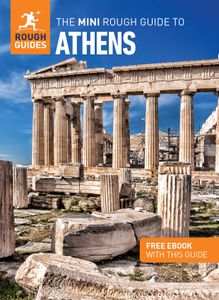
Travel advice for Greece
From travel safety to visa requirements, discover the best tips for visiting Greece
- Culture and Etiquette in Greece
- Eating and drinking in Greece
- How to get to Greece
- Travel Tips Greece for planning and on the go
- Best time to visit Greece
- Crete Itineraries - How to Spend 5, 7, 10 or 14 Days in Crete
- How to get from Athens to Crete
Find even more inspiration for Greece here

- Travel Tips
written by Rough Guides Editors
updated 19.05.2021
Ready to travel and discover Greece?
Get support from our local experts for stress-free planning & worry-free travels.
- Where to stay
- Travel advice

- Living In Croatia
- Croatian Recipes
- Balkan Recipes

Home > Greek Islands: Local’s Guide To Island-Hopping Greece
Greek Islands: Local’s Guide To Island-Hopping Greece

Written by our local expert Gabi
Gabi is an award-winning writer who lives on the Island of Crete in Greece. She is an expert in Greek travel and writes guides for the everyday traveler.
Although most of us close our eyes and dream about the enchanting images of white Santorini, there are so many more Greek islands to choose from that you never know exactly where to start island-hopping in Greece..or where to finish!
So, please let me help you island-hop Greece like a local, using my own travel experience of living in Greece for many years.
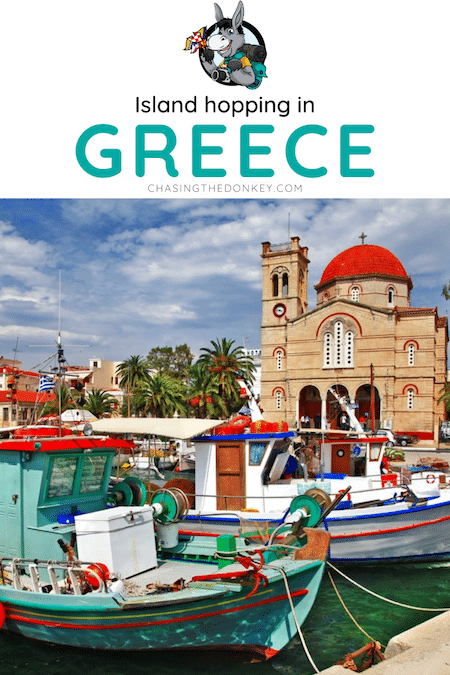
There is nothing more magical, romantic, and adventurous than boarding a Greek ferry and sailing the sea to explore the beautiful beaches of Greece. The Greek islands are blessed with stunning landscapes and feel like an authentic slice of paradise.
You must first know that the Greek islands are divided into different island groups. As well as that, some islands are extremely popular among Greek island-hopping tourists, while others, equally enchanting, are almost unknown and offer a great vacation spot for those looking for less crowded places… which often come with much lower price tags too!
So, let’s get started and show you the best way to island hop in Greece;
Skip Ahead To My Advice Here!
The Greek Islands Groups
Let’s take a look at the islands of Greece and what groups they belong to.
These are the most popular islands in Greece . When you go island-hopping in the Cyclades, you can visit gorgeous beaches and places like Santorini , Mykonos , Sifnos, Syros, Serifos, Paros, Milos, Naxos, Amorgos, Ios , Tinos, and Folegandros.
This beautiful slice of Greece includes islands such as Patmos , Samos, Kos, Tilos, Symi, Kalymnos , Leros, and Rhodes. The latter is one of the most popular destinations and often features on Greece island-hopping itineraries .
Ionian Islands
These islands are easy to visit when visiting Greece from Italy , one of the many popular Greek island hopping routes. Corfu , Lefkada , Kefalonia , Zakynthos , and Ithaka are some of the best-known Ionian Islands.
Argo-Saronic Gulf Islands
Easy to reach as they are relatively close to Athens , the most popular Saronic Islands include Aegina, Poros, Hydra , Spetses, Salamina, and Agistri.
Crete is Greece’s biggest island. It’s a major destination on its own, a place where you could spend a week or more exploring amazing beaches and ancient sites.
However, Crete is also a much-visited destination among people who are island-hopping in Greece . It is, for example, a great base from which to visit Santorini on a day trip .
Evia is the second biggest island in the country, and it is also easy to reach from Athens .
Northeastern Aegean Sea Islands
Some of the islands in this group are Lesvos, Chios, Samos, Ikaria , and Thasos.
These beautiful green Greek islands include Alonissos, Skyros, Skiathos, and Skopelos.
As you can already see, there is no one best Greek island for island-hopping – you have to see a few. Let us show you how many islands you can see on your island-hopping around Greece adventure with the ferry routes below.
Brands We Use And Trust
Ferry routes to the most popular greek islands .
When planning those unforgettable Greek island-hopping adventures, deciding where to go first or how long to stay is a decision that will be subject to the Greek islands’ ferry routes, ferry schedules, and your Greek budget .
Are you ready to start planning your Greek island-hopping vacation? Let’s go! This article gives you a sweeping panorama of how to island-hop in Greece. But, first things first, are you starting on the mainland? If so read this section:
From Athens To The Main Greek Islands
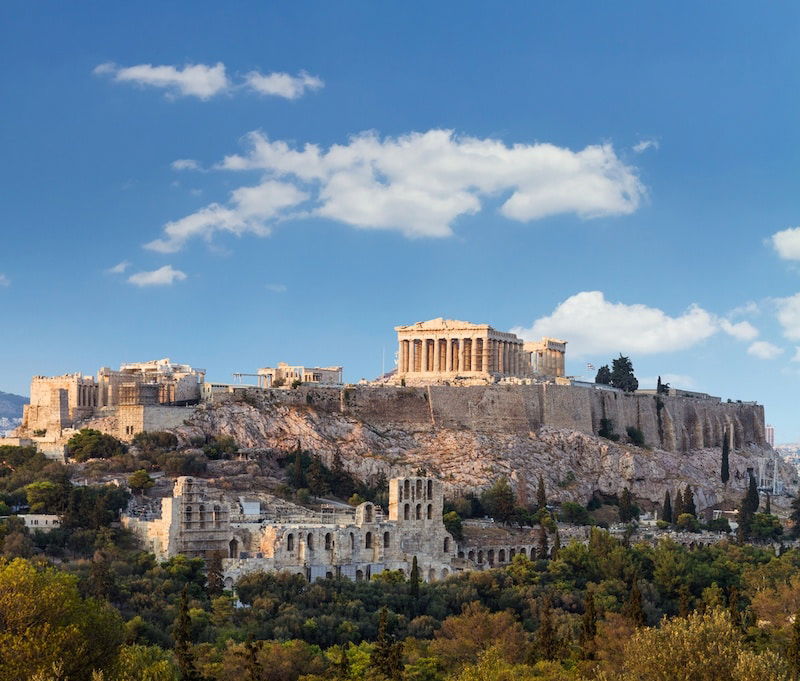
Athens, the capital of Greece, offers access to all the islands, either by plane or by ferry routes to the Greek islands . Popular islands, including Rhodes, Corfu, Crete , Mykonos, and Santorini, can be reached by flying out from Eleftherios Venizelos International Airport.
The most popular tours from Athens:
- 🏝️ Book this 13-day Greek islands tour in Mykonos, Santorini, Crete, and Rhodes and admire the beauty of each island!
- 🏞️ Grab the opportunity to visit the most cosmopolitan destination in Greece – Mykonos Island – on this day trip from Athens
- 🚢 Visit the most famous Greek islands – Santorini and Mykonos on a 2-day trip from Athens
- 🛥️ Spend four days traveling around some of Greece’s island hotspots by joining this trip with ferries, flights, and accommodations included
- 🚢 Book your ferries with Ferryhopper in advance
Athens Ferry Ports
It’s also a popular choice to travel by sea. You can reach most Greek islands from the main Port of Piraeus, about 30 minutes from the center of Athens. However, it would help if you also kept in mind that there are other ports from which you can depart, too. Lavrio and Rafina are two smaller island ports in Athens with regular ferry services to different Greek islands.
- From Lavrio: you can reach the islands of Chios, Lemnos, Andros, Folegandros, Ios, Kea, Kimolos, Kythnos, Milos, Mykonos, Naxos , Paros, Sikinos, Syros, and Tinos.
- From Rafina: instead, it’s possible to visit the islands of Crete, Andros, Folegandros, Ios, Amorgos, Mykonos, Naxos, Paros, Sifnos, Sikinos, Syros, Tinos, and Santorini.
You can choose between fast ferries to the Greek islands that carry boat cargo on this route. These are ideal if you want to take a rented car or motorbike with you.
For the best flight deals, book your ticket here .
Corfu to santorini, crete, and mykonos.
There are no direct flights from Corfu to Santorini, Mykonos, or Crete. Therefore, if flying is a must, the best way to get there is to fly to Athens and then take another flight to the island of your choice.
Other alternatives include taking the ferry from Corfu to the mainland and, from there, boarding a bus to Athens. Once in the capital, you can choose either a ferry or a plane to reach Crete, Santorini , or Mykonos.
Another alternative is to reach Larissa from Corfu and take a train trip to Athens.
Crete To Santorini

There are no direct flights from Crete to Santorini , but a ferry route connects both islands during the high season with at least 2-3 daily ferry crossings.
The ferry times between these Greek islands range between 2 and 4 hours, depending on whether you take a fast or regular ferry. The cost of the ferry trip between Heraklion and Santorini is about 50 euros, and it can be a great day trip if you’re staying in Crete. This is one of the most popular ferry travel routes on the Greek islands.
Rhodes To Crete

The trip from Rhodes to Crete can be quite long on a ferry. That’s why most travelers choose to fly from Heraklion, Crete’s capital. The flying time is about 50 minutes, and prices tend to be considerably high, so booking in advance is a good idea.
The ferry route connecting Rhodes to Crete is covered by the sailing company Aegeon Pelagos. There are four weekly connections and the traveling times range between 11 and 15 hours.
It’s possible to board the ferry with a car, a motorbike, or a camper van. Since it’s such a long trip, the vessel offers facilities, including restaurants, bars, and shops , to make the journey more pleasant.
I highly recommend this full-day land rover tour.
Mykonos to santorini.

The only way to travel between Mykonos and Santorini is by boarding a ferry since no direct flights connect the Aegean Islands .
You can save some money traveling with regular service (about 4 hours), pay more, and cut off your traveling time by at least two good hours.
Since this is probably the most famous sea route during summer, it’s a better idea to book your ferry tickets well in advance – we suggest Ferryhopper for that here. The trip from M ykonos to Santorini is among the best Greek island hopping experiences you can have.
Book your Santorini Day Trip From Mykonos here
Naxos, Paros, Ios To Santorini
The three islands are connected by ferry routes all year round, with a considerable increase in services during the high season .
The best way to travel among these islands is by boarding a fast ferry. The ferry travel times between these Greek islands vary from 2 hours to 45 minutes (Paros-Naxos).
The three islands can also make an excellent escape from the bustle of Santorini and are the perfect destination for a one-day trip or a weekend away.
Here is how to island hop between Mykonos and Ios.
Rhodes to santorini, mykonos, and other cyclades.
The best way to travel between the Greek Cycladic Islands and Rhodes is by boarding a ferry to Athens and, from there, boarding another ferry to any of the Cyclades Islands (or Rhodes).
It’s not common to find ferries departing from Rhodes with a stop on the Cyclades , but if you manage to book a vessel making a stop either in Naxos or Paros, it would unquestionably be a winning choice. Check with your ferry operator to find the best Greek island-hopping route for your trip.
Here is how to island hop between Mykonos and Paros.
Italy to greece.
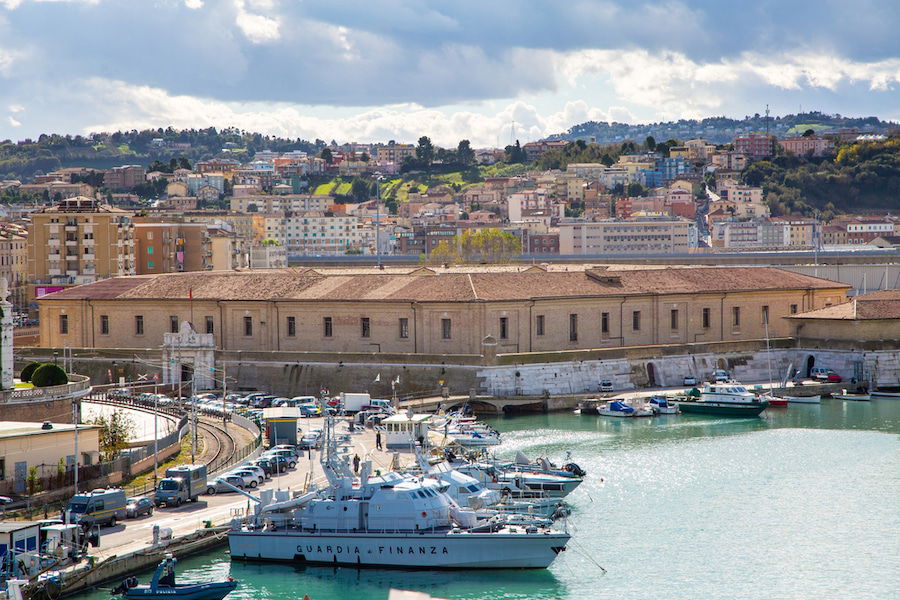
As we mentioned in this post about traveling from Italy to Greece , there are comfortable ways to connect both countries by plane or ferry. Ferries depart from Italy’s main ports , and it’s possible to board most vessels with a rental car or a motorbike.
Some of the ports are Bari, Ancona, and Venice, and they usually connect Italy to the Greek ports in the Ionian Sea , including Corfu, Igoumenitsa, and Patras.
Of course, routes (and prices) increase during the high season, which in Europe goes from June to September.
We recommend you book your ferries with Ferryhopper in advance here.
Which greek islands have airports.
Let’s go island-by-island.
What Greek Islands Have Domestic Airports
- Chios Island
- Ikaria Island
- Kalymnos Island
- Kythira Island
- Milos Island
- Naxos Island
- Paros Island
- Skyros Island
- Syros Island
What Greek Islands Have International Airports
- Astypalea Island
- Corfu Island
- Crete Island
- Kefalonia Island
- Lemnos Island
- Lesvos Island
- Rhodes Island
- Samos Island
- Santorini Island
- Skiathos Island
Best Greek Islands For Island-hopping
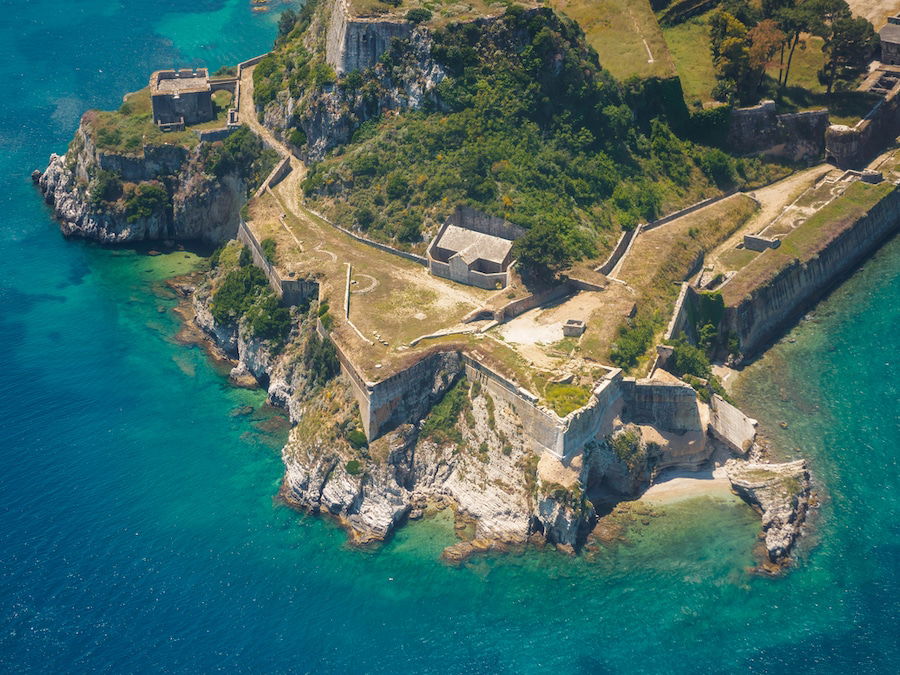
Deciding which Greek islands to include in your Greek island-hopping itinerary can be difficult. It depends on what activities you love doing and how you prefer to spend your vacation time.
Do you love sunbathing and swimming on sandy beaches ? Do you dream of soaking in the whitewashed landscapes of Greece? Are you eager to climb mountains and fill your trip with incredible adventures? Do you want epic Greek nightlife ?
There’s an island for every taste and every traveler… People usually choose to visit the most popular places either because they heard about them or because some other travelers suggested so.
Here are our ideas for the lesser-known Greek Islands.
People often flock to places such as Santorini, Mykonos, Corfu, Hydra , and Crete, for the best beaches, totally unaware there are hundreds of other islands worth visiting in Greece.
If you’re visiting Greece for the first time and eager to discover some of the best islands, the best thing to do is travel around on a ferry. You can get to even some of the less-visited islands with ease.As you can see above, tons of ferries connect the Greece islands, making it super easy to have an unforgettable Greece island-hopping experience.
This is not only the most good option when it comes to ticket prices, but it is also the favorite way to travel for locals. You will immerse yourself in the right atmosphere that will set the pace for a relaxing trip.
One of the best Greek island-hopping tips we can give you is: don’t run against the clock. The most enjoyable way to visit Greece and the islands is to take one place at a time and enjoy it to the fullest. When it comes to island-hopping the Greek Islands, I think that less is definitely more.
What is the best time to go Greek island-hopping?
The best months to enjoy a Greek isle adventure has to be when it’s warm, but the hordes of vacationers have left – making that May, June, and September. Of course, the summer months of June, July, and August are the most popular as that is when people have summer break – but that is also when the prices are higher and crowds bigger
Is it easy to island hop in Greece?
YES! With hundreds of islands and decades of tourism experience, Greece has an excellent, well run and efficient ferry network, making hopping from island to island easy and cheap
How to island hop Greece?
We have provided you with many tips; plan in advance and don’t rush from place to place for the best experience
Can I take a self-guided Greek island-hopping trip?
Is it expensive to island hop in greece.
Yes, and no. Budget travelers can find low-cost accommodations, or you can also stay in 5-star resorts. Just as you can enjoy low-cost street food or eat in the finest restaurants. Greece offers something for all budgets
How long do you need when island-hopping in Greece?
You can rush, but then you would not get to fully immerse yourself in the authentic way of Greek life. At a minimum, we recommend that you spend three nights on each island. So if you have just 10 days in Greece, do not island-hop more than three islands, and spend at least one day in Athens or Thessonaliki
What is the cheapest way to island-hop in Greece?
The cheapest – and easiest way to get around the Greek Islands is by jumping on the Greek ferry system. With several ferry companies offering ferries to and from all of the islands all year, you do not need to spend much
Which Greek island should I visit first?
We hope that island-hopping Greece has been made easier with this guide on planning a Greek island-hopping holiday adventure.
- Best Things To Do In Greece With Kids
- How To Tip In Greece
- Car Rental And Driving Tips For Greece
- Where To Stay In Crete
- What To Do In Greece
- What To Expect & Do In September In Greece
Comments (14)
Very nice blog on Island Hop Greece, Here Is How To Travel Between Greek Islands
Hi SJ, I was thrilled to find your blog. Croatia was my last vacation (before Covid) and I finally booked a “post Covid” vacation for April 2023, We will be taking a Windstar cruise from Barcelona, thru a few ports in Italy and ending in Athens. My plan is to add a few days in Greece after the 8 day cruise. We will sightsee in Athens for 2 days and then I would like to see one (or two) of the Greek Islands. Can you recommend which island we should go for the best overview of Greece. We are 60+ years old so I don’t car about the nightlife of dancing and partying. I want culture and food! Thanks Gail G
Hi Gail, the trip sounds amazing! I would look at these islands for what you describe: Kefalonia: https://www.chasingthedonkey.com/things-to-do-in-kefalonia-greece-guide/ Lefkada: https://www.chasingthedonkey.com/things-to-do-in-lefkada-island-greece/ Milos: https://www.chasingthedonkey.com/things-to-do-in-milos-island-greece/ Aegina : https://www.chasingthedonkey.com/things-to-do-in-aegina-greece-guide/
Enjoy your vacation!
I am planning a trip to Greece to Island Hop in July. Please advise on the best way to travel between (Athens, Mykonos, Naxos and Crete). I was thinking; Atlanta to Athens (flight) with first island Mykonos (High Speed Ferry or flight) then Naxos (High Speed Ferry) and then Crete (flight) and back to Athens (flight) then fly back to the USA. While in Crete we will likely do a day trip to Santorini.
I have visited Athens, Mykonos, and Santorini in 2017. How many days should I plan for in Naxos and Crete? Please recommend hotels in Mykonos, Naxos and Crete.
Hello.What island to choosef rom September 15 to30 so that it is possible to swit. Thank you Edvardas.
Possible to “Swit” what does that mean?
Hi, Great reading your site. We have 21 days to explore the Cyclades Islands starting in Santorini and ending in Athens, we want to do this leisurely using Ferries. We like the thought that less is more but we have a nice length of time. What route would you suggest ?
Best wishes, Jim
For a leisurely 21-day exploration of the Cyclades Islands starting from Santorini and ending in Athens, you can enjoy a wonderful island-hopping experience. Here’s a suggested route that balances relaxation with exploration:
Day 1-4: Santorini Day 1-2: Arrive in Santorini. Spend your first two days exploring Fira and Oia, enjoying the sunset views, and perhaps a wine tour. Day 3: Visit the Akrotiri Archaeological Site and relax on the Red Beach. Day 4: Take a boat tour of the caldera, including the hot springs and Thirassia. Day 5-7: Ios Day 5: Take a ferry to Ios. Enjoy the beaches like Mylopotas and relax. Day 6: Explore Ios Town (Chora), visit the windmills, and enjoy the local cuisine. Day 7: Spend a day on a secluded beach or partake in water sports. Day 8-10: Paros Day 8: Ferry to Paros. Explore Parikia and visit the Panagia Ekatontapiliani church. Day 9: Day trip to the picturesque village of Naoussa. Enjoy the beaches. Day 10: Explore the interior of the island or take a short boat trip to Antiparos. Day 11-13: Naxos Day 11: Ferry to Naxos. Visit the Portara and explore Naxos Town. Day 12: Explore the inland villages like Apiranthos and Filoti. Visit the Temple of Demeter. Day 13: Relax on beaches like Agios Prokopios or Agia Anna. Day 14-16: Amorgos Day 14: Ferry to Amorgos. Visit the Monastery of Hozoviotissa and the Chora. Day 15: Enjoy the serene beaches and explore the island’s hiking trails. Day 16: Relax and soak in the traditional island life. Day 17-19: Syros Day 17: Ferry to Syros. Explore Ermoupoli and its neoclassical architecture. Day 18: Visit the Ano Syros, and enjoy the panoramic views. Day 19: Relax on the beaches or visit the local museums. Day 20-21: Athens Day 20: Ferry to Athens. Explore the historic sites like the Acropolis and Plaka. Day 21: Visit the National Archaeological Museum and spend your last evening in a nice Athenian restaurant. This itinerary gives you a mix of popular and lesser-known islands, each with its unique charm, allowing for a well-rounded experience of the Cyclades. Remember to check the ferry schedules in advance as they can vary, especially outside of the peak summer months. Enjoy your trip!
Hi, I love reading all of your information but hoping for suggestions on the next part of our holiday. My husband & I will have 12 days to get from Istanbul to Athens in April-May. Hoping to go via some Greek islands. I am having trouble with ferry schedules at the moment. Could you suggest a route that would work? We are not fussed which islands we go to. We do not have a car. Many thanks in advance
Here is a list of Greek Islands you can get to from Türkiye https://www.chasingthedonkey.com/how-to-visit-the-greek-islands-close-to-turkey/ the obvious place to start from Istanbul woul dbe to go to Izmir and go Cesme to Chios. Then the world is your oyster. Suggestions here: https://www.chasingthedonkey.com/island-hop-greece-travel-between-greek-islands/ Use FerryHppper to buy your tickets. https://www.ferryhopper.com/en/?aff_uid=chsgdnk
We will be traveling to Athens this June and we are still trying to decide on the islands we want to see. We have 3 weeks to explore Greece, and since it’s our first time there we want to spend our first few days exploring Athens and then head to some islands. We do want to see Mykonos, Santorini, Los, Paros. Any recommendations for other islands and the route we should take? Thanks!
Consider adding Naxos for its beautiful beaches and rich history. A suggested route could be Athens -> Mykonos -> Naxos -> Paros -> Santorini -> Ios.
I enjoyed reading your blog and it has been useful in the planning of our next 3 week trip to the Greek islands. My husband and I plan to spend 3 weeks island-hopping from late September to early October. We have return flights booked from Mykonos. We would prefer to stay in the quieter area of Mykonos and also plan to visit Andros, Tinos and Syros. Do you have any suggestions of where we should stay on these islands? We both love to go on hikes and eat delicious local cuisine. We also plan to hire a car where needed. Many thanks for any suggestions. Alison
Beach. These regions offer a serene environment away from the bustling Mykonos Town, with opportunities for hiking and enjoying local cuisine at traditional tavernas.
On Andros, consider staying in the charming village of Chora or the peaceful area of Batsi. Andros is known for its lush landscapes and numerous hiking trails, such as the Andros Route, which takes you through beautiful valleys and along scenic coastlines. Enjoy local dishes at family-run tavernas that serve fresh seafood and local specialties.
In Tinos, the village of Pyrgos is a great choice, known for its artistic heritage and tranquil atmosphere. The island offers excellent hiking opportunities, such as the trails around Exomvourgo Mountain, and delicious local food, including the famed Tinos cheese and Louza, a type of cured pork.
For Syros, stay in the picturesque village of Ano Syros or near Galissas Beach for a quieter experience. Syros combines neoclassical architecture with beautiful hiking routes, such as those in the northern part of the island. Indulge in local cuisine with dishes like Syros’ San Michalis cheese and traditional sweets such as loukoumi.
Leave a Reply Cancel reply
Your email address will not be published. Required fields are marked *
Save my name, email, and website in this browser for the next time I comment.
This site uses Akismet to reduce spam. Learn how your comment data is processed .
Move This Adventure To Your Inbox & Get An Instant Freebie
Subscribe To Unlock Your FREE Customizable Travel Packing List & All Our Best Tips!
Unlock Your FREE Customizable Travel Packing List!
Subscribe Now For Instant Access To Stress-Free Packing

Traveling Without a Passport

How to Travel Between the Greek Islands (Reliably and Affordably)

There is something completely magical about the Greek Islands and there are so many to choose from, you are almost spoilt for choice! The Greek Islands are divided into groups, with some islands more popular with travellers than others. While each island shares similar traits with others of the same group by way of culture, climate and historical backgrounds, it’s still a great idea to travel between a few of the different groups to ensure you get a well-rounded experience.
Travel to: Greek Islands

So what’s the best way to get around and how much will it cost to travel between your islands of choice? The first step of your trip will be deciding which of the Greek Islands you consider “must-see,” after that, everything will start to fall into place.
We’re breaking down the list of islands by their groups:
- Cyclades
o Mykonos, Tinos, Sifnos, Syros, Serifos, Paros, Antiparos, Santorini, Kea, Andros, Koufonisia, Milos, Naxos, Amorgos, Ios, Folegandros and others
- Dodecanese and Samos
o Patmos, Kos, Tilos, Symi, Rhodes, Kalymnos, Leros
- Argo-Saronic
o Hydra, Spetses, Poros, Aegina, Kilada, Salamina and Agkistri
- Ionian Islands
o Corfu, Paxos, Levkada, Ithaca, Kefalonia, Zakinthos, Kythira
- Evia (Euboia); the second biggest island in all of Greece!
- Sporades
o Skiathos, Skopelos, Alonnissos & Skyros
- Crete; the biggest island in Greece
o The Northeastern Aegean Islands
- Lesbos (Mitilini), Chios, Samos, Limnos, Ikaria, Samothrace, Fournoi, Inouses, Psara, Agios Efstratios, Thasos
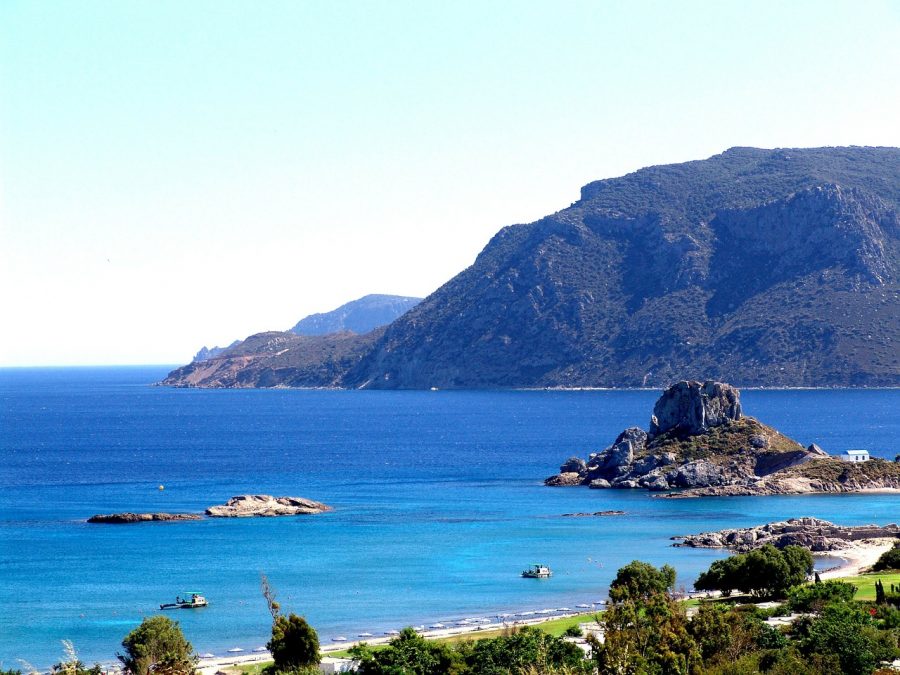
Most Popular Greek Islands
It’s incredibly difficult to decide which islands to visit, so we think it’s always a great idea to go on personal recommendations from like-minded people. Most often people name islands such as Santorini, Mykonos, Corfu, Crete, Kefalonia, Hydra and Skiathos as being amongst their favourites.
Santorini and Mykonos are a part of the Cyclades islands, Kefalonia is part of the Ionian islands, Hydra calls into the Argo-Saronic islands and Skiathos is a part of the Sporades islands. These should all be considered a wonderful mixture of different island groups and by extension, divine and unique experiences with each one!
For anyone travelling to the Greek Islands for the first time, I would highly recommend taking the ferry between the islands. On my very first trip to the Greek Islands, we took the ferry to Mykonos, Paros and Santorini which was fantastic! The ferries are very affordable and you are able to book your journey online! Payment per trip is up to 15 euros as a foot passenger where you can sit anywhere on the boat, and slightly more if you would like to have a specified seat on the ship with a little more comfort! The ferries are comfortable and well equipped with everything you need for your Greek Islands journey. – Rebecca, The World As Bec Sees It
Getting to the Greek Islands
There are flights to some of the main Greek Islands, with international flights arriving and departing from Crete, Corfu and Rhodes, but for local flights from the mainland, you can fly into most islands on discounted flights through airlines like Aegean Airlines and Olympic Air.
Sometimes flights will be seasonal or chartered, so it’s best to check this in advance, and you’ll also have to keep an eye on their newsfeeds for updates about discounted flights so you never miss a deal. Inter-island flights are hard to come by, so it’s best to fly into your first port of call and then opt for alternative travel between the rest of the islands. Consulting Sky Express is probably your best bet for any available inter-island flights that can also be really reasonably priced.
There are so many incredible islands of Greece, some hidden treasures and some quickly becoming the new tourist hotspots. When planning to travel the islands, my advice is to see as many as possible on your first visit to get a greater understanding of the ones you love – and then visit those again and again whilst adding new ones to discover to the plans each time. There are a few ways to travel the islands – you can hire a private yacht, take the ferries, go with a tour boat or fly. Ensure you research which islands have airports and which you’ll need to travel by boat. If there are both options, I would jump on a plane from the mainland and then opt for a ferry in between islands for a very comfortable and cost effective option. If you want to do things a little more luxurious, you can hire a yacht and cruise from island to island, and if you want a taste of luxury but it isn’t in the budget to hire a personal one, a lot of tour companies do island hops or day trips. Either way, boats are the way to go as you will have to worry about your luggage allowance by plane and distribute your weight between check in and carry on which can be difficult when you’ve packed more than 20kg! A flight is great for getting to your first island, but once you’re there you won’t want to worry about distributing luggage/checking in and getting to and from the airports, which can sometimes be further out. You can take as much as you like on the ferries which leave from the main ports, and you can even take a hire car on board and drive straight off when you dock (at an extra cost of course!) If you are staying at a hotel, request a transfer from the port so you won’t have to wait around in queues. Tips: If flying on the small Greek airlines ensure you check in a couple of hours before the flight or you could be fined. With ferries, it’s best to price check and book in advance as sometimes morning can be more expensive than afternoon and vice versa. You can also upgrade for a small price difference to business class which is higher above sea level (recommended if you have troubles with sea sickness!) Sometimes even the days of the week can vary with the ferries, so although it’s nice to be spontaneous, a planned trip for the islands will save you time, money and frustration. – Olivia, Olympia
See Also: Greek Islands vs Croatia
Ferrying to and Around the Greek Islands
Flights can add a hefty price tag to your travel plans if you don’t manage to get the discounted deals, so it’s good to have different options. The ferries from Athens to the Greek Islands and from island to island are really affordable, but the tickets sell out quickly so you have to book in advance.
Ferry timetables and routes can change so make sure you check up on your timetable (available online) prior to your date of travel. The only downside to ferrying is that the trips can be cancelled due to very bad weather conditions with no indication of when they will resume. This is a rarity with the standard ferries as they are quite robust and fit to challenge swells.
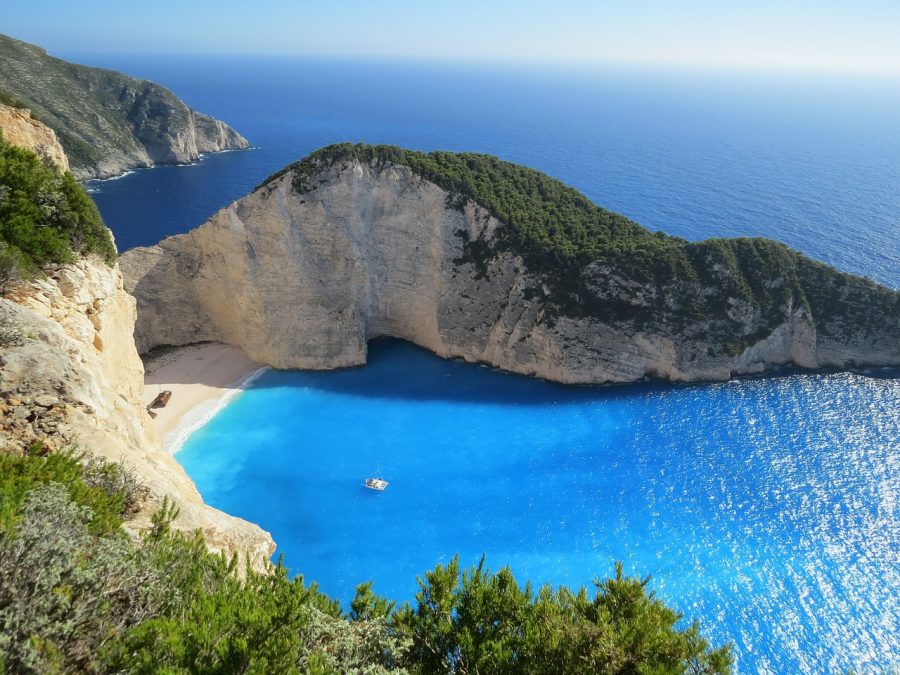
One of the most important planning steps for your trip to the Greek Islands determining how you will travel among them. Here are our recommendations: Ferries – Enjoy shared and private accommodations, luxury cabins, and more depending on your comfort level. Enjoy cafes and bars open all hours of the day to accommodate all appetites and lots of entertainment options. Usually booked with tours, Island-Hopping Cruises are highly recommended. Enjoy booze, fishing, sailing, and other cruise styles. Accommodations are available, though with limited facilities. Depending on your travel style, this would be the best choice for those wishing a more scenic adventure than simply convenience. – Janine, Fill My Passport The fastest and most comfortable transportation between the Greek Islands would be by flying. The views from the window seat will also blow you away… But another good and also cheaper option is by boat/ferry. It does take longer but can be comfortable as well. You can walk around the deck, drinking frape, have a tzatziki snack and enjoy the cool sea breeze in your hair. And ports are normally in the town’s center so as soon as you embark you are ready for exploration. – Nina and Simon, Nina Travels
Inter-Island Travel By Catamaran Or Hydrofoil
If you want to get on your adventure quicker, then catamarans and hydrofoils are your best bet, although they are definitely subject to more frequent cancellations as they don’t operate well in bad weather conditions. These are also not advisable for people who are prone to seasickness, as the ride can be very bumpy, and the rates are also more expensive than the standard ferries. But if speed is your number one priority, catamaran or hydrofoil is your best bet.
Regardless of which islands and transportation you’ve chosen, we wish you safe travels!

Antonia is a passionate writer and an avid reader. Eat well, travel often - are some of the words she lives by. When she's not writing or reading, she loves getting out in nature, hiking or losing herself in unknown cities.
Related Articles
- Destinations
- Tips & Tricks
Iceland and the (Somewhat Elusive) Northern Lights
Found on many a bucket list, just next to visiting Iceland,...
- United Kingdom
Visit These Gloomy Destinations for a Great Time
Enough about sun-drenched beaches and clear blue skies. It’s time you...
Top Countries You Haven’t Been (Yet!)
Ever felt like you're being fed the same destination over and...

Learning your Italian Eateries: Ristorante, Trattoria Or Osteria?
Get unlimited access to the world's best travel stories. subscribe now., privacy overview.

The Perfect 7 to 10 Day Greece Mainland Itinerary
Last Updated on February 21, 2024
by Olivia Ellis
Disclaimer: This article contains affiliate links. That means if you click a link and make a purchase, we may make a small commission. As an Amazon Associate we earn from qualifying purchases. For more information, see our privacy policy.

The islands typically tend to be the star of the show when visiting the ancient country of Greece. This comes with good reason, as the Greek islands are truly stunning locations for any kind of traveler. Albeit, the mainland of Greece is a knockout destination that’s typically off the beaten path for any mainstream traveler. In this 7 to 10-day Greece mainland itinerary, expect waterfalls, mighty mountain ranges, medieval towns, bustling and exciting cities, and the mystical home of the Greek Gods.
Table of Contents

Getting To & Around Mainland Greece
This route spans the majority of the mainland, from the southern Peloponnese to the northern city of Thessaloniki , so various modes of transport are possible as well as ideal.
My recommendation is to hire a car and drive throughout your trip. The longest journey time is around 4 ½ hours making driving the easiest, most convenient, and most cost-efficient way to travel around the Greek mainland. You can browse Rentalcars.com to compare options for hiring a car.
A mainland Greece road trip is one of the best ways to experience this relatively undiscovered part of the country by tourists.
If you’re planning on flying into Greece, I recommend flying into the Athens International Airport. The itinerary begins in the capital and it’s the main airport, making flights the most frequent and affordable in comparison to other airports in Greece.
Another option for getting around on this mainland Greece itinerary is by bus. The KTEL bus system is essentially the national bus transport, connecting cities and towns throughout the country.

You can typically find routes for major cities or towns and sometimes smaller places if they’re frequently visited by tourists and locals.
Costs differ, so you can expect to pay between €5 and €25 depending on the route and although tickets can be affordable, if you choose to use the bus as a main means of transport throughout the country it can add up quickly.
Train transport is also another option, but the routes in Greece aren’t as extensive as in other countries in Europe. This means that there may be gaps in transportation, but those can be filled by bus.
The downside to taking bus or train transport is that if you’re hoping to visit more remote destinations in mainland Greece, it can be hard to make your way there from the main transport routes. These tickets can also easily add up to double the cost of a rental car, so keep this in mind if you’re torn between the two.
If you don’t like the idea of public transport or renting a car, you can also find tour groups that go to the majority of destinations, making it a seamless way to travel without the stress of driving or planning.

7 to 10-Day Greece Mainland Itinerary
The mainland of Greece is full of countless treasures. From the rustic mountains and quaint villages of central Greece and the Peloponnese to the hectic and exciting cities of Athens and Thessaloniki; you’re bound to discover countless new jewels in the most undiscovered part of Greece; the mainland.
While the islands are outstanding locations to visit on any dream itinerary, the best way to get to know the heart of Greece and everyday life is through the mainland.
Day 1 – Athens
This mainland Greece itinerary begins with 2 days in the same place where modern democracy began as well as the capital city, Athens . You’ll likely be flying into the Athens International Airport, making the Greek capital a great and convenient starting point.
Athens is a great way to begin as you’ll have the opportunity to get your bearings in a new country, discover Greek foods, and see some of the most important ruins in ancient history.
Although the city is quite small, there’s an abundance of things to do. Because of this, you can decide to mold your time in different ways, from exploration of the Ancient Greek world to the cultural side of what makes modern-day Athens what it is today.
No matter how you choose to spend your time, make sure to not miss a visit to the Acropolis , a wander around the classic Greek neighborhood of Plaka , and a long wholesome meal at a classic Greek tavern.
Other ways to explore further into Athens are plentiful and unique; venture into the southern suburbs of Athens to explore Poseidon’s Temple in Cape Sounio or take a dip in the sea around an hour away from Athens at Schinias beach.

Where to Stay in Athens
Athens Ivy Suites – Located only 500 meters from Monastiraki Square, this hotel is an excellent central place to stay in the Greek capital. There are several rooms, a restaurant, a shared terrace, airport shuttle, breakfast and more to offer guests.
The Modernist Athens – A sleek and modern hotel in the Kolnaki neighborhood, this hotel has a range of cool rooms, private parking, a fitness centre and a superb buffet breakfast in the mornings.
101 Adrianou Apartments – These suites are excellent for those looking for a comfortable, central option. Situated within walking distance of Syntagma Square, there is daily housekeeping and incredible views of the city.
City Circus Athens – Boasting a terrace with an Acropolis view, this hostel is great for backpackers. There are great common areas for meeting other travellers and a range of dorms and privates to choose from.
Not quite what you’re looking for? Click here to browse more Athens hotels!
Day 2 – Athens
Spend your second day in Athens getting to know the city a bit deeper. If you spent day one checking off all of the well-known highlights like the Acropolis and exploring some cool, central neighborhoods, consider taking in a museum or two on your second day – such as the Archaeological Museum or the Benaki Museum.
You could also opt to get a bit off the beaten path and explore some cool neighborhoods like Psyri and Monastiraki or even opt to go on a food tour , where you can learn about all of the Athenian specialities.

Day 3 – Nafplio and Epidaurus (Peloponnese)
After getting acquainted with Greece in Athens, you’ll head south to the neighboring Peloponnese region.
The Peloponnese region is an alluring peninsula south of central Greece offering one of the most exciting and unique experiences in Greece. Although this itinerary only offers a taster of one day in the Peloponnese, I highly suggest exploring the region on a deeper level if you have the time.
With just one day in the Peloponnese, you’ll make your way first to the picturesque town of Nafplio. Nafplio is a coastal city in the Peloponnese offering idyllic views and architecture, wonderful food, and a pleasant place to experience the Peloponnese.
After, head about half an hour away to the ancient town of Epidaurus to explore the stunningly peaceful nature of the Peloponnese and the ancient ruins and theatre of the town of Epidaurus.

Where to Stay in Nafplio
Amymone and Adiandi – This quaint hotel in Nafplio is an excellent base for your first couple of days in the Peloponnese. They have a range of bright, clean and comfortable rooms on offer and a great location for exploring the town and the region.
Carpe Diem Boutique Hotel – For those looking for a hip place to stay in Naflplio, this boutique hotel is sure not to disappoint. They have a number of chic rooms on offer, breakfast available in the mornings and plenty of amenities to ensure your stay is fantastic.
Not quite what you’re looking for? Click here to browse more Nafplio hotels!
Day 4 – Delphi
Day 4 of this road trip will bring you back through central Greece and to the legendary, and one of the most visited places on the mainland of Greece, the ancient site of Delphi.
Delphi is about 3 ½ hours away from Athens and on the way to Delphi, you’ll also pass through Ancient Corinth and the Corinth Canal connecting central Greece to the upper point of the Peloponnese. Alternatively, you could also visit the ancient site of Olympia, another incredible place in the Peloponnese.
If you have extra time and are particularly interested in ancient history, I recommend making a stop in Corinth to explore the ruins and the grand Corinth Canal and see the blue water of the Corinthian Gulf before heading to Delphi.
Delphi is the first stop in central Greece and once spending time there, you’ll quickly understand why it’s one of the most visited spots in Greece. Take time to explore the archaeological site and museum, witness the famous Temple of Apollo, and find yourself in awe of the Sanctuary of Athena Pronaia.
Delphi is also an area of outstanding natural beauty, so even just spending a few hours in the area is a great chance to connect to nature. Afterwards, head to the nearby town of Arachova to enjoy a local meal for lunch. You could also visit the lovely village of Nafpaktos.

Where to Stay in Delphi
Arion Hotel – Located only about 200 metres from the archaeological site, this three-star guesthouse is a great choice. They have a number of cosy rooms on offer and an unbeatable location for exploring this area.
Amalia Hotel Delphi – This 4-star hotel is an excellent option for those looking for a bit more of a luxurious stay while visiting Delphi. They have several lovely, plush rooms on offer, a wonderful location and a great swimming pool to enjoy.
Not quite what you’re looking for? Click here to browse more Delphi hotels!
Day 5 – Meteora
After leaving Arachova and Delphi, day 5 will take you about 3 ½ hours away to one of the best places to visit in all of Greece, Meteora. One of the highlights of taking the time to explore the Greek mainland is that you don’t have to make a choice between visiting Delphi or Meteora.
Meteora is easily one of the most outstanding places to visit in all of Greece, and with good reason. Located next to the small town of Kalambaka, the area is a striking formation of rocks sprawling from the earth with a collection of Byzantine Eastern Orthodox monasteries bravely sitting on top.
With the construction of these monasteries beginning in the 11th century, Meteora is now a UNESCO World Heritage Site and a gift for all who visit. During your stay, you can either hike to the monasteries or drive above to have easier access and saved time.

Where to Stay near Meteora
Dellas Boutique Hotel – Mid-range travellers will love this 3-star boutique hotel when visiting Meteora. Located in the town of Kalambaka within easy reach of the monasteries, they have a number of lovely rooms to choose from that can suit all kinds of visitors.
Hotel Doupiani House – This is an excellent hotel for those looking for a comfortable and cosy mid-range option in Kalambaka. Well-poised for exploring the splendours of Meteora, they have many rooms to choose from and a great buffet breakfast available each morning.
Meteora Central Hostel – Budget and solo travellers will love this cosy hostel in Kalambaka. Well-located for exploring Meteora, they have a range of dorm beds and private rooms to choose from and good shared spaces and common areas to enjoy.
Not quite what you’re looking for? Click here to browse more Meteora hotels!
Day 6 – Zagori
Days 6 & 7 of this route will bring you closer to the northern Greek border and 3 hours from Meteora to the Pindus mountain range and region of Zagori.
The region of Zagori is a collection of around 40 villages cosily nestled in the Pindos mountains and full of tradition, rugged wilderness, and truly breathtaking scenery.
In Zagori, visit the striking Vikos Gorge, the deepest gorge in the world in the Vikos-Aoos National Park, enjoy one of the numerous hiking paths in the region and appreciate the unique Zagorian architecture spanning through the villages.
For accommodation, you’ll find all sorts of options from luxurious boutique hotels to affordable bed and breakfasts and mid-range hotel options.
Mainland Greece is truly a haven for nature lovers and Zagori is the prime destination for those looking for a stay off the beaten path.

Where to Stay in Zagori
Guesthouse Gouris – This cosy guesthouse is perfect for mid-range travellers visiting the beautiful Zagori region. They have a number of lovely rooms to choose from that feature local rugs and handicrafts and there is also a wonderful breakfast available each morning.
Aberratio Boutique Hotel – Located in the village of Aristi, this boutique hotel is an excellent choice for those looking for a more upmarket place to stay in the Zagori region. They have a number of swanky rooms on offer and an incredibly beautiful location for guests to enjoy.
Not quite what you’re looking for? Click here to browse more Zagori hotels!
Day 7 – Zagori
On your second day in the Zagori, take a bit more time to explore some of the places you didn’t make it to on the first day. Enjoy the laid-back nature and stunning scenery of the area and get active on a few of the many hiking trails you can find.
If you’re following the 7-day itinerary rather than 10, this day will conclude your trip. Either head onward in Greece to your following destination or head back to Athens to fly onward.

Day 8 – Mount Olympus
After spending time in the pristine Zagori region, you’ll head northwest to one of the most famous areas in Greece and one of the most famous mountains in the world, Mount Olympus.
Mount Olympus is about a 3-hour drive away from Zagori and although the hike to the top in its entirety is only recommended for well-experienced travelers, you can still enjoy the famous scenery with a nice hike and time in the nearby villages.
Although its fame is due to being the home of the Greek Gods, it is the first national park in Greece and one with some of the most diverse flora and fauna in the country.
The town of Litochoro is located at the foot of Mount Olympus and is a great spot to base yourself to explore the mountain and have a start on many of the trails.
The town itself dates back to the 14th century, has plenty of appetizing restaurants, and still has abundant Macedonian architecture throughout the town offering a unique glimpse into the region and its history.

Where to Stay near Mt Olympus
Kallisto Traditional Guesthouse – Located in the town of Litochoro, this rustic guesthouse is perfect for those looking for a comfortable and traditional place to stay near Mt Olympus. They have a number of cosy rooms on offer and a great location for exploring the region.
To Palio Litochoro – This lovely guesthouse located in Litochoro is an excellent choice for those looking for a great place to stay in the foothills of Mt Olympus. They have a number of great rooms on offer, a beautiful setting and a perfect location in the centre of the village.
Not quite what you’re looking for? Click here to browse more Mt Olympus hotels!
Day 9 – Thessaloniki
While the majority of this trip is amongst nature and smaller Greek villages and towns, the last stop for those spending the full 10 days on this Greece mainland itinerary is the second biggest city in Greece, Thessaloniki .
The city itself is about a 2 1⁄2 hour drive away from Mount Olympus and within the city, you’ll find the wonder of the proud Greek mountainous treasure keeping watch over Thessaloniki. The city itself is typically quite overlooked on any Greek itinerary but is worth the visit in its own right.
From the gritty Balkan architecture, to what’s known as the best food scene in Greece, Thessaloniki is easily one of the most underrated destinations on the Greece mainland.
During your visit, make sure to have a fresh bougatsa from a local bakery (a specialty pastry originating in Thessaloniki), wander the seafront and port, stop by the White Tower, and wander through Ladadika, Thessaloniki’s old town as well as Morichovou Square.

Where to Stay in Thessaloniki
Blue Bottle Boutique Hotel – A funky mid0rang hotel in the center of Thessaloniki, there are plenty of bright rooms to choose from, a great breakfast and private parking available to guests.
Teight Hotel – A luxe and modern hotel within easy reach of the top Thessaloniki attractions, this place boasts an on-site bar, room service, great breakfast and a range of spacious rooms on offer.
Zeus is Loose Hostel – A very highly-rated hostel perfect for backpackers and budget travellers, there are lots of dorms (and private rooms) here, great common areas, kitchen facilities and an excellent atmosphere for guests.
Not quite what you’re looking for? Click here to browse more Thessaloniki hotels!
Day 10 – Thessaloniki
Spend your final day in Thessaloniki (and the final day of this 10-day Mainland Greece itinerary) digging deeper and really getting to know Greece’s second city.
Take the time to explore some cool neighborhoods, take a lot of leisurely strolls along the waterfront or, perhaps, take a food tour to learn more about the gastronomic scene in this “foodie” city.
Thessaloniki also has one of the largest airports in Greece offering routes connecting to the rest of Europe, making it the perfect departure point at the end of this trip. You can also reach other Balkan destinations from the city, as it’s easy to get from Thessaloniki to Sofia, Bulgaria and other neighbouring countries.

Have More Time?
If you have more time to spend, there are plenty of other points of interest worth visiting.
If you’re keen on exploring deeper into the Peloponnese, you can easily tack on another few days or week and head further south into the region, discovering Ancient Sparta, the crystalline Mani Peninsula, and the Medieval island town of Monemvasia with its beautiful Venetian castle.
After visiting the towns of Zagori, head to Ioannina, the capital city of the Zagori region, to enjoy one of the oldest lakes in the world, Lake Pamvotis.
For those interested in exploring a different region of mainland Greece, I suggest making your way to Volos, a port city in the region of Thessaly full of history, culture, delicious cuisine and the gateway to the neighboring Northern Sporades islands, Skiathos and Skopelos.

Whether or not the mainland of Greece has already been on your dream travel list, it’s undoubtedly a destination that you’ll discover is full of abundance. You’ll explore deep parts of Ancient history, get lost in Greece’s wilderness, and experience what life is like in the country’s biggest cities and smallest towns.
Spending 7 days or more in this part of Greece before hopping over to the islands is a great way to discover Greek culture and Greece without hoards of tourists.
Are you planning to explore mainland Greece? Have any questions about this itinerary? Let us know in the comments!

Related Posts:

Chania or Heraklion: Which Crete City to Visit?

Is Greece Expensive? A Greece Trip Cost Guide in 2024

8 Best Areas to Stay in Crete for Tourists

About Olivia Ellis
Olivia is a writer for The World Was Here First. Originally from Michigan, USA, she is currently living in Athens, Greece exploring Europe and filmmaking. When she’s not travelling or writing, Olivia can be found cooking delicious new recipes from around the world, reading, and spending time outdoors.
Thank you for all your invaluable information.
Cheers, Alan! Happy you found this helpful 🙂
Leave a Comment Cancel reply
Greece Travel Tips: 15 Things to Know Before Traveling to Greece
Key Takeaways
- One of the most useful Greece travel tips is to plan your itinerary in advance , especially during peak tourist seasons, to ensure you can visit the places you're interested in and secure accommodations.
- The peak tourist season is from June to August , when temperatures are high, while spring (April to June) and fall (September to October) offer milder weather and fewer crowds.
- While credit cards are widely accepted in most establishments, it's a good idea to carry some cash , especially in smaller towns or when visiting local markets.
- It's always wise to have travel insurance that covers medical emergencies, trip cancellations, and lost belongings.
There is no denying the magnificence of Greece . The warm climate, exotic islands, endless beaches, and sprightly spirit cannot be compared. This is why Greece is a popular choice for travelers. Regardless of its popularity, there are things to know before you book your trip.
From sinkhole warnings to plenty of sunshine, get the inside scoop on traveling to Greece here by reading below our Greece travel tips: 15 things to know before traveling to Greece .
Tip no.1 for traveling to Greece: Pack your sunscreen!

Everyone lusts after a golden summer tan. In order to achieve it, however, it takes some finessing. Surviving the blazing summer sun of Greece is easier said than done. You may think that exposing yourself as much as humanly possible to the sun will help you achieve the dream of being a bronze goddess/god, but this is not exactly right.
In order to save yourselves from 3rd-degree burns, you have to make your no.1 priority to lather yourself with plenty of sunscreen. We highly recommend you start off with an SPF of 50 and work your way down to an SPF30 or SPF20 as the days go by and you’ve got some color on you.
If you skip sunscreen or use low SPF sunscreen, all you’re going to achieve is a raging burn -that is unless you visit Greece in February . You will turn the color of lobster red and have skin peeling off of you for days. With tanning, as with anything, you need to be patient and trust the process!
Be Sure To Plan Ahead

There is a Greek saying that goes ‘a good man cooks before he gets hungry’. In other words, planning ahead is the key to a successful trip. And since we’re experts on planning, here is what we suggest you do:
Before rushing to a single destination, write down two - three or more destinations that you think fit your travel goal and start studying. With all the Greek islands and cities and villages, you’ll have a rather hard time deciding where you want to go.
For better or worse, your final decision will be judged by finding accommodation. Do a quick internet search and find accommodations or trust your trips on the hand of experts and check out our recommendations here.
It is important in the organization of your trip to find the accommodation that suits your budget but also to pay attention to the area where it is located. You want to explore the place, but not exhaust yourself going from one place to another.
Do the same with the tickets. Check all the companies to get an idea of the prices, the itineraries , and the duration of the trip. Do research on the sights, beaches, museums and parks you want to visit, but also the most special beauties of each place, as well as the activities and excursions that you can do there.
What’s most, list the restaurants and cafes based on the reviews, so that you can decide when you see them up close, what is best for you.
Greece Has Amazing Ancient Ruins
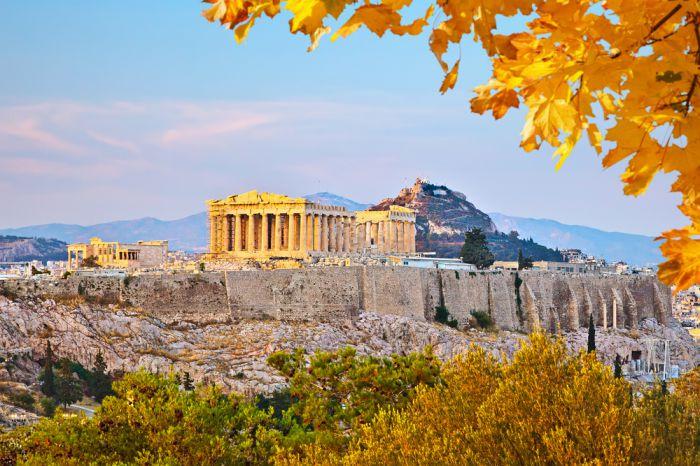
Counting thousands of years of history, it is no wonder that Greece boasts some of the most fascinating ancient ruins in the world. The country’s fascinating archaeological sites will help you gain insight into the local culture. They will also make your itinerary a lot more interesting.
No matter where you decide to go, whether it is a Greek island or a region of the Greek mainland, chances are you’ll have the opportunity to marvel at thousand-year-old exhibits that will leave you in awe.
The Acropolis rock with the famous Parthenon in Athens , the Temple of Poseidon in Sounio , the archaeological site of Delphi , the archaeological site of Olympia in the Peloponnese, the archaeological site of Akrotiri in Santorini , the ancient royal city of Aiges in Macedonia, the island of Delos in the Cyclades, and the Knossos Palace in Crete are only some of the most fascinating Greek ruins .
Don’t leave the country without visiting at least a couple; you will be introduced to a world of ancient magic.
No One Does Hospitality Like the Greeks

Since antiquity, the Greeks have the reputation of being one of the most hospitable populations in the world. The Greeks love the country’s visitors and try their hardest for them to feel welcomed. Their main goal is to make everyone fall in love with Greece the way they have.
For that reason, no matter what you need, all you have to do is ask a local for it. Whether it’s directions, recommendations, or useful tips and tricks, all you have to do is stop a passer-by and ask them anything you want.
Not only will you receive the information you need, but also a great smile and probably an invitation for coffee or a drink. Greek people are loud -sometimes obnoxious- but most of all they are incredibly friendly. If you’re lucky you may make friends with the locals in a traditional tavern.
There, you will get to hear amazing stories accompanied by indigenous wine, ouzo, and small bites. It may sound like a dream scenario, in Greece; however , it is very much possible.
The Greek Beaches are Gorgeous
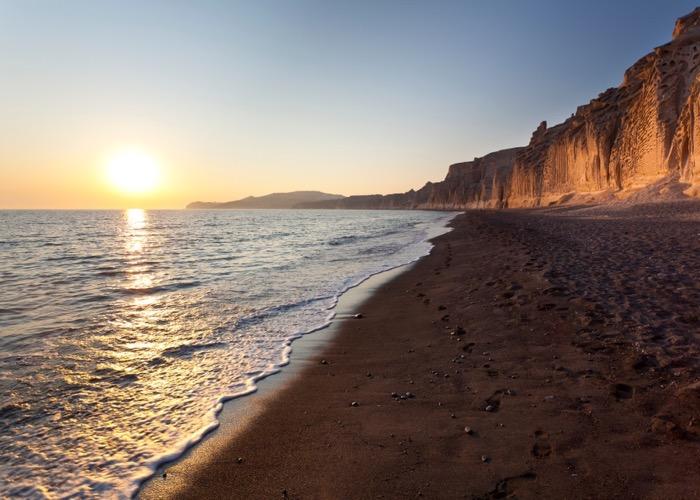
And anybody who claims otherwise is flat-out lying. Endless sandy shores, turquoise water so clear you can see both your reflection and the bottom of the sea. The Greek beaches make Greece the paradise destination it is.
Despite popular belief, the Greek islands are not the only ones that boast incredible beaches. You can find wonderful waters enclosed by striking landscapes even on the mainland.
Some of the best beaches in Greece include Falasarna , Balos , and Elafonisi in Crete , Myrtos in Kefalonia , Mylopotas in Ios , Sarakiniko in Milos , Porto Katsiki in Lefkada , Plaka in Naxos , Navagio or ‘Shipwreck’ in Zakynthos , and Voidokilia in Messinia.
Whether you want serenity or day-long parties on the beach, in Greece, you’re bound to find it. Most of the aforementioned beaches are organized, offering you the opportunity to enjoy the service of the beach bars while sunbathing on your luxurious sun lounge.
But even those that are not organized will offer you seclusion and a relaxing ambiance you’ve never experienced before.
Enjoy the Greek Cuisine and Wine!

Greece has gained worldwide recognition for its delicious and nutritious cuisine. Greek cuisine has a variety of dishes that satisfy foodies from around the world. For example, the well-known ‘souvlaki’ finds fans in all lengths and breadths of the earth. Homey recipes such as ‘pastitsio’ and ‘moussaka,’ ‘yemista’ and ‘papoutsakia,’ ‘dolmades,’ and ‘gigantes’ are some of the basic dishes that reveal the riches of Greek cuisine .
At the same time, fresh ingredients offer an endless journey of flavors. Fresh fish, seafood, seasonal fruits, and vegetables all offer rich flavors that evoke memories and create memories for a lifetime. These are complete experiences for all the senses and not just for taste. That is why so many travelers long to try Greek cuisine and always return to it.
Moreover, Greece is known across the world for its rich wine production since antiquity. With the island of Santorini and the region of Nemea in the Peloponnese having the leading role, there are incredible Greek wine varieties that will satisfy even the most demanding of wine lovers.
If you want to try as many local varieties as possible, accompanied by local delicacies that will tease your senses, a food tour or a wine-tasting tour in Greece is exactly what you’re looking for!
These tours will take you around the best eateries and bars in the country, which only the locals know about. Hidden from the curious eyes of the tourists, you will get to experience the authentic face of Greece away from the tourist traps.
What to Pack for Greece?
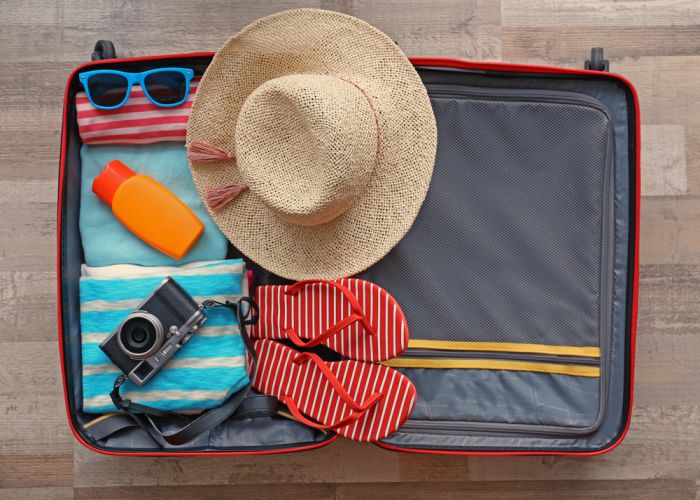
Packing for your trip requires having decided the best time to visit Greece . The weather in Greece is one of its best characteristics, especially if we're talking about the weather in Greece in March and the following months of spring, summer, and early fall. Regardless, summertime in Greece can prove to be too much for those who are not used to a warmer climate.
You can learn more about the heat of the summer months by reading about the weather in Greece in July .
In the dead of summer, the temperature can climb up to 40℃. As a result, packing with you your lightest clothes is the best idea. Additionally, try bringing breathable fabrics, such as cotton, as they will minimize sweating.
As much as you want to get half the wardrobe, because it is "necessary", be content with the basics even if you're preparing for the weather in Greece in May that is not as extreme as the summer months. Make a list of sets for each day, and at the end choose your most important and favorite. Don’t forget to bring as many swimsuits as you own, a couple of beach towels, and as much sunscreen as you can. Of course, even if you forget anything you can buy it in Greece. Regardless, coming prepared is always a good idea.
We can’t be talking about travel planning and leave out the gadgets! Prepare your camera and cell phone. Choose your favorite travel gadgets and prepare them for their big mission. Empty your memory cards or get a new one and charge all of your electronics. Please don’t forget to take with you all your chargers, extra batteries and to fill your mobile phone with useful applications.
Make Sure You Have Cash On You

Plastic money is not as popular in Greece as in other countries, although things are becoming progressively better in that respect. Although nowadays, most shops and eating establishments accept credit cards, there is a high chance that if you visit small shops, mini markets, and most establishments in the countryside, they will require cash.
Not to mention that cash is the best choice for tipping in Greece .
For that reason, it is the wisest choice to keep some cash on you in case of an emergency. Of course, you should try to avoid having a large amount of cash in one place.
Instead, you can spread them out across different wallets and take with you only a small amount that you think will be necessary. In other words, make sure to have cash with you at all times, but don’t make the job of potential robbers easy!
Everything is Closed on a Sunday

Unlike most countries, Sundays in Greece are reserved for rest and repose. As a result, everything is closed on a Sunday, including supermarkets. Of course, there are exceptions to the rule.
The shops remain open the first Sunday at the beginning of each regular discount period, the two Sundays before Christmas, the Poor Sunday, and the last Sunday of each year.
Even if you’re not visiting during those times, you can find some supermarkets and pharmacies open on a Sunday if you search hard enough. There are certain establishments in each neighborhood that remain open in order to serve the needs of the citizens. Ask around and the locals will provide you with all the information you might need.
Eating Habits – Much Later Meal Times

We’re not quite sure why, but the Greeks enjoy their meals much later than most. Maybe it has to do with the fact that Greece is a county that never sleeps and staying up until 4 in the morning is a common occurrence for most.
Breakfast is usually served at 9-10 am, lunch at 3-4 pm, and dinner from 9 pm at night until midnight. If they go at night for drinks, it is most likely that an additional meal will be added at the time of their return, most likely from a street food cantine nearby.
What’s more, in addition to the bizarre eating times, the eating etiquette is also much more informal than one might think. Greeks love sharing food, so everything they order is to be shared. It is very common for Greeks to order the whole menu but not order a main dish for themselves.
Additionally, unless you’re in a high-end restaurant, you are free to eat with your hands. Now, be reasonable; we don’t mean you can eating pasta with your hands, but if a pork chop is difficult to get around with your utensils, nobody will judge you if you use your hands.
Sailing the Greek Islands

If you want to feel on top of the world, there is no more effective way to do so than by sailing the Greek islands . Imagine lying on the deck, letting the sun warm your skin and the salty breeze ease the heat.
All you have to do in order to achieve this dream is join a sailing adventure across the Greek islands. You can sail across the different island complexes, like the Cyclades, the island of the Saronic gulf, and the Dodecanese, or you can just start from Athens and sail towards your end destination with joyful breaks in between to admire the Greek islands on your way there.
By doing so, you will get to solve another major problem: you will be able to combine a visit to more than two Greek islands with ease while enjoying the journey from one destination to the other. Sailing might be one of the slowest but most beautiful and luxurious ways to indulge in a Greek island-hopping exploit.
Driving Can Be Difficult
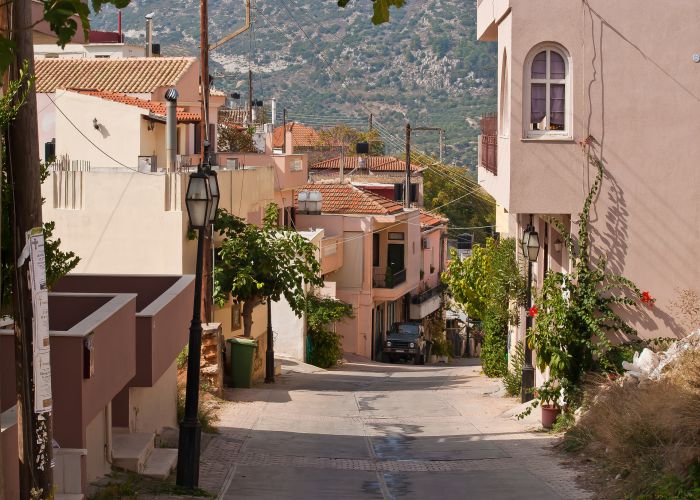
Nobody’s perfect, and Greece’s flaw is its driving culture. Overtaking from the right, ignoring the safe distance between the vehicles on the road, a lot of rude gesturing, cursing, and pointless honking are common occurrences on the Greek streets . The Greeks are known for being over the top, and when it comes to driving, that doesn’t go away.
Of course, it’s not all bad. Most times it’s the knee-jerk reaction of Greeks to become defensive on the street, but they tend to be open for people to talk some sense into them. Especially if they realize that you’re tourists, they are more than likely to change their demeanor and help you find your way to your destination. In any case, the spirited mentality of the Greeks is something you should keep in mind while driving in the county.
Greece Isn’t the Most Disability-Friendly

Another major flaw (there are very little compared to the assets, we promise) is that Greece is not the most disability-friendly country in the world. Not even close, unfortunately. There is poor infrastructure for the specially-abled citizens and visitors which is frustrating, to say the least.
Frankly, the country is inhospitable to people with disabilities. A simple walk through the eyes of a person with mobility difficulties will convince you: The sidewalks are broken and are not suitable for canes or wheelchairs. Ramps that exist on one sidewalk do not exist on the next.
And this is only the scenario that concerns the person with mobility difficulties -and the reality of the elderly and the parents with wheelchairs, too. When we talk about visually impaired people, then you should know that they are called to face the same problems and even more.
If you dare to follow the specially-designed strip of sidewalk that is meant for those who suffer from their vision, you are sure to bump into a flowerbed, or even word, a column! In the special lanes for visually impaired people, on their way, one encounters many things. You can fall on a pillar. Or on a tree. You can, much more often, fall on a dining table that belongs to a local tavern.
By All Means Drink, But Behave

We understand that the free spirit of Greece is intoxicating. So are its delicious drinks. However, you need to keep in mind that although during your vacation you can let your hair down and drink to your heart’s content, you need to maintain some self-control and act civilized.
After all, retching and having a raging hangover the next day -or more- can potentially ruin your exotic vacations, which is not ideal.
The most popular tourist destination in Greece makes the news each year for the uncontrollable situation the tourists find themselves in after hours of careless drinking. We’re all about partying.
We recommend and applaud it. However, you need to drink within reason and behave yourselves like you would in your own country. Bottoms up, people!
The Roads Can Be Crazy

If you have no sense of directions, the Greek streets will give you a wild ride. The signs are not too clear, and unless you take the advice of a map or a local, the chances of successfully reaching your desired destination are slim to none.
What’s more, you might come upon dangerously narrow streets that hang from cliffs in the Greek island or the countryside, where the road network is not as refined as in the big cities.
The problems faced by the country's road network can be many and great, but great is also the progress that has been made with the completion of major roads.
Many of these highways have been opened to traffic in the last five years, creating a network of roads that can be used to move quickly, within the framework of the Traffic Code, and - most importantly - safely, crossing the whole country. A network that greatly facilitates the transport of goods and passengers.
Some advice for our first-time visitors
If you’ve never been to Greece before, there are a couple of things you should keep in mind to make your time here as enjoyable as possible and your travel smooth as silk.
Of course, everyone talks about the magnificent warm weather of summer in Greece. However, this perfect weather comes with some downfalls. Namely, the bright sun that tends to burn light-skinned people and the heat that exhausts those who are not used to it.
For that reason, we would highly recommend you bring lots of sunscreen bottles and don’t forget to lather on sunscreen before every outing. Additionally, it is extremely helpful always to wear a hat and have water on you.
Another thing to be aware of is the tourist traps that can be found in the most popular spots of each destination. As a rule of thumb, we would recommend avoiding eating in eateries that frequent central tourist spots and have any reference to Zorba -the name, a picture, the world-renowned song from the famous movie. Anything with Zorba in it, steer clear from; it reeks of a tourist trap!
Your best bet before taking any major decision on your trip to Greece would be to ask the locals. Yes, no matter how awkward it may sound, asking the locals is the way to go! From the reception of your hotel to random strangers on the street, they will have the best input to offer and will be more than eager to do so; we are not known for our hospitality by accident!
Last but not least, when it comes to transporting around Greece for the first time, you need to know that grabbing a random taxi from the cabstand is not the safest or cheapest option. If you want to avoid public transport, we would highly recommend you book private transfers, or at least download a local app for taxis that will keep a tab of your driver for your safety.
In all honesty, I am jealous of you; seeing Greece for the first time must be a magical experience!
Final Thoughts
We guarantee you that choosing Greece as your holiday destination is a decision you will never regret. Everyone and their dog have Greece as the ultimate country to enjoy carefree vacations, and there is literally no way for them to not be successful.
However, there are certain tips and tricks that will make your life a lot easier and will help you get the most out of your Greek experience. Read our Greece travel tips above, check out our Greece itineraries , and come to Greece well-prepared to have the time of your life!
Frequently Asked Questions
Is it necessary to learn basic greek phrases before traveling to greece.
While many Greeks in tourist areas speak English, learning basic Greek phrases is appreciated and can enhance your travel experience. Locals often respond warmly to visitors attempting to speak their language.
Do I Need to Tip in Restaurants and Cafés in Greece?
Tipping is customary in Greece. It's common to leave a tip of around 5-10% in restaurants, and rounding up the bill is also appreciated. In cafes, rounding up or leaving small change is customary.
What's the Best Way to Get Around in Greece?
Greece has a well-connected transportation system. Ferries are common for island hopping, and buses or rental cars are ideal for mainland travel. In cities, taxis and public transportation are convenient options.
Is Greece Safe for Solo Travelers?
Greece is generally considered safe for solo travelers. Exercise standard safety precautions, be aware of your surroundings, and take care of your belongings. Crime rates are relatively low, making it a popular destination for solo adventurers.
What's the Best Time of Year to Visit Greece?
The best time to visit Greece depends on your preferences. Spring (April to June) and fall (September to October) offer mild weather and fewer crowds. Summer (July to August) is the high season with hot temperatures and vibrant nightlife. Winter (November to March) is ideal for cultural exploration and fewer tourists.

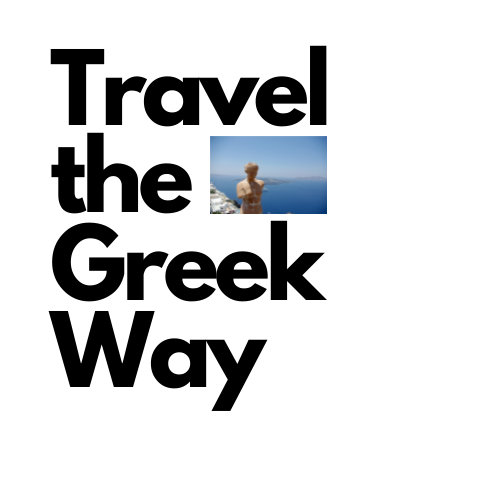
30 Must-Visit Locations in Greece in 2024
This post is about 30 of the best places to visit in Greece including both Greek island and mainland destinations. It is fair to say that Greece is a travel destination that ticks a lot of boxes:
- Magnificent islands, sandy stunning beaches, nightlife
- Fascinating ancient monuments of many historic eras & civilizations
- Hiking destinations
- Traditional mountainous villages and picturesque fishing settlements
- Bustling cities
- Top-rate Greek and international cuisine
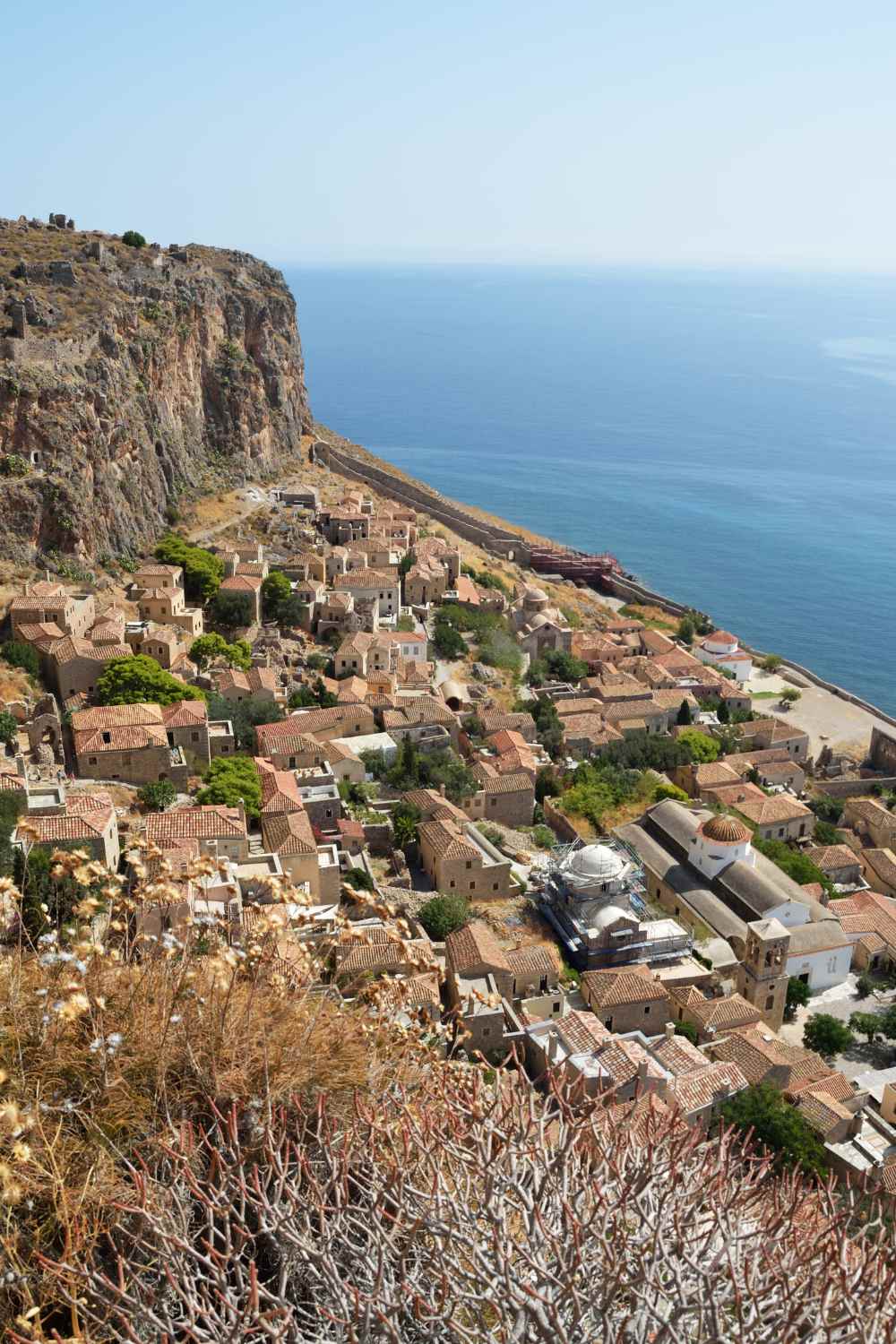
If you are planning your trip to Greece and this is your first time visiting the country then my post on the top 30 best places to visit in Greece will offer plenty of ideas.
Itinerary tip for the islands : If you only have a week or 2, and you would like to hop around the islands, you better stick to the same group of islands, to save time.
* Some of the links in this post are affiliate links. That means I may make a commission if you click and buy. The commission comes at no additional cost to you.
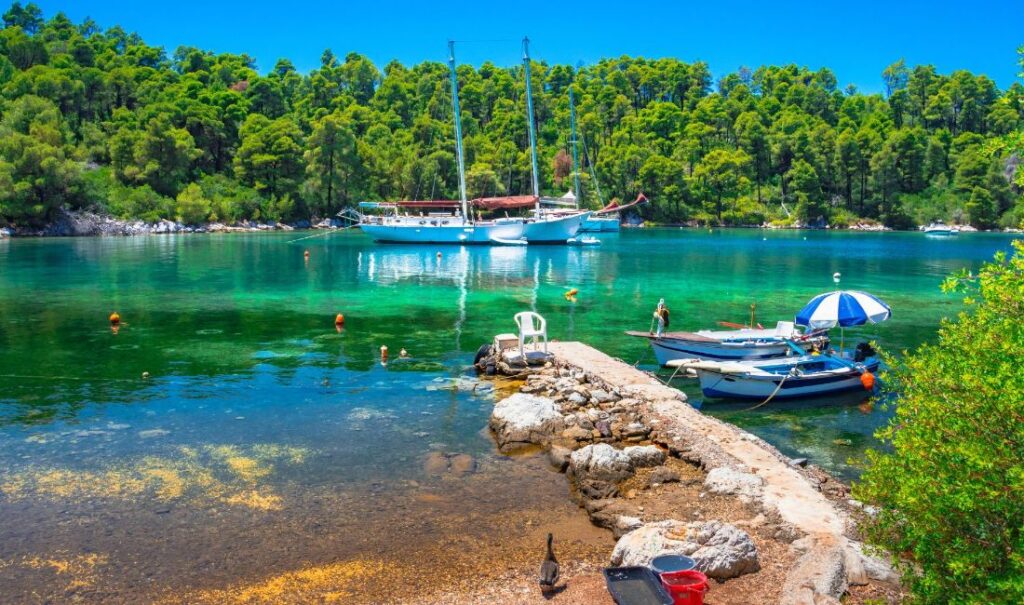
Here are the best places to visit in Greece, separated for your convenience into regional groups as well as a Google map of the places mentioned. That way you can organize and plan your itinerary for Greece.
Best Places to Visit in Greece (North)
1. thessaloniki.
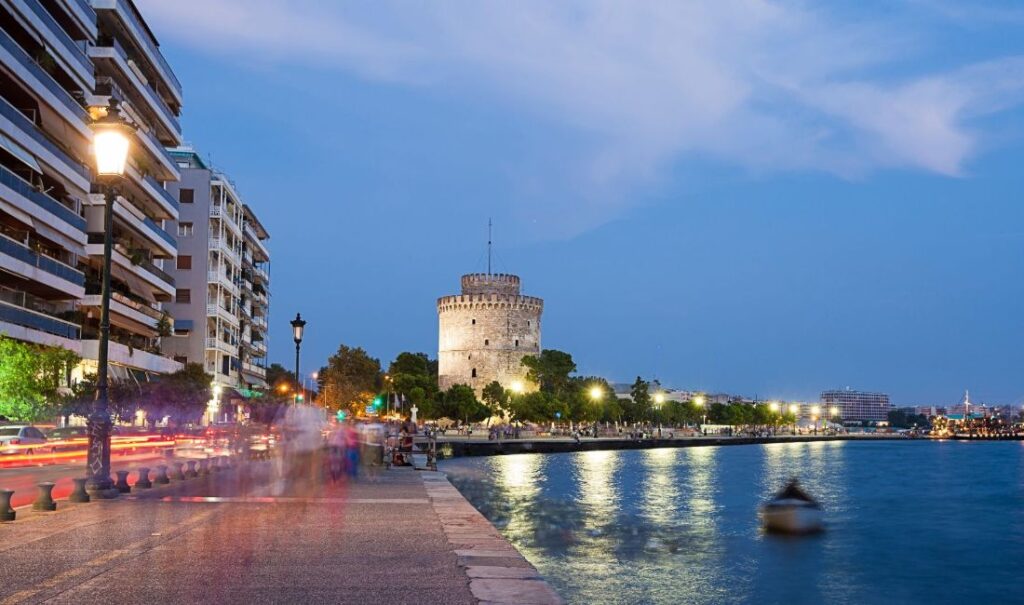
Thessaloniki is Greece’s second-largest city and the financial center of the north of Greece. It is built around the Thermaikos Gulf, a modern vibrant city ideal if you love historical monuments and …food-tasting.
Thessaloniki was built in 316 BCE and it was a Byzantine and Ottoman center which is evident in the numerous monuments in the city. It is also one of the most popular and favorite culinary centers in Greece, renowned for its food and wine. Thessaloniki is a great base for visiting Chalkidiki, Meteora, and Olympus Mt.
Related Posts:
- The Best Hotels in Thessaloniki
- Top Things to Do in Thessaloniki
- Open Markets Food Tasting Tour
2. Chalkidiki
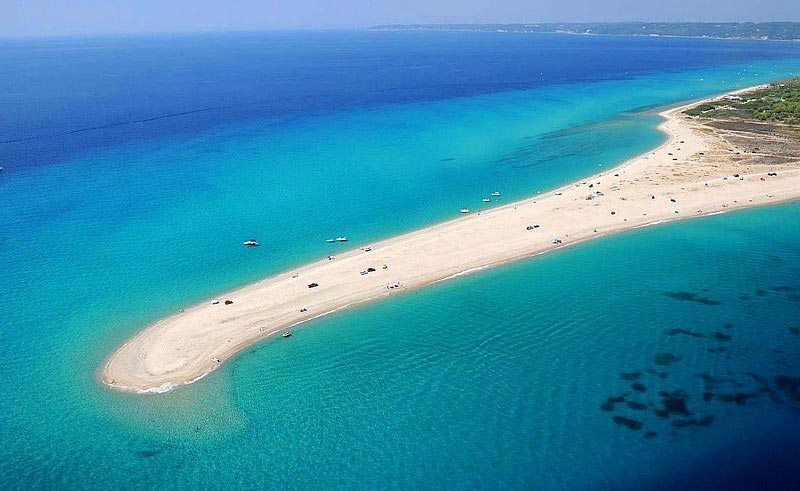
Chalkidiki is an area with three beautiful peninsulas – Kassandra (great for nightlife), Sithonia (stunning beaches), and the seaside town of Ouranoupoli and the famous monastic state of Mount Athos. It is the favorite vacation destination not only of the whole of northern Greece but also of the other countries of the Balkans.
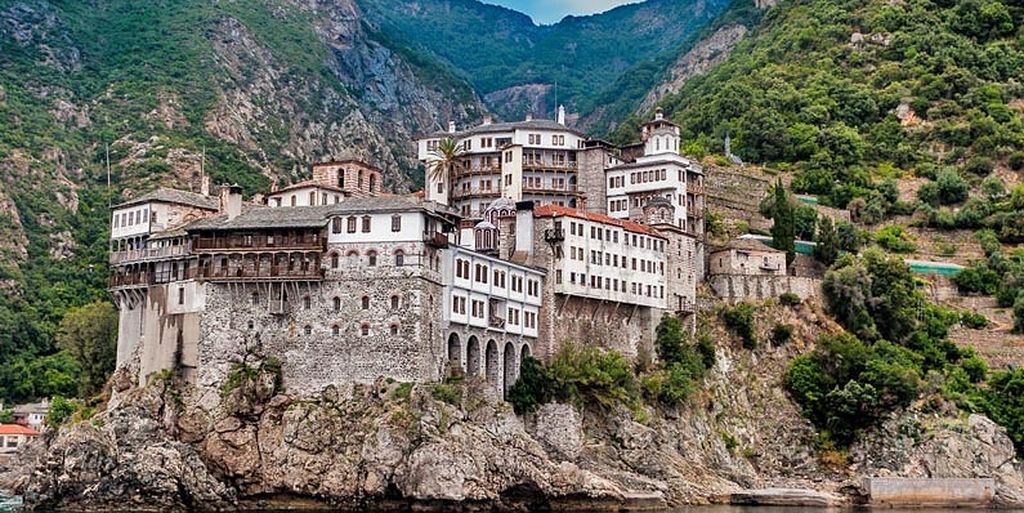
Chalkidiki is a stunning area to visit for beaches and history and one of the best places to visit in Greece. The famous Greek philosopher Aristotle who founded the Lyceum in Athens comes from Ancient Stagira in Chalkidiki. As Chalkidiki is quite an extensive area, you will need at least a week to explore and a private car.
Entrance Tip: Women are not allowed in the Athos Mt and Monasteries.
3. Prespes Lakes
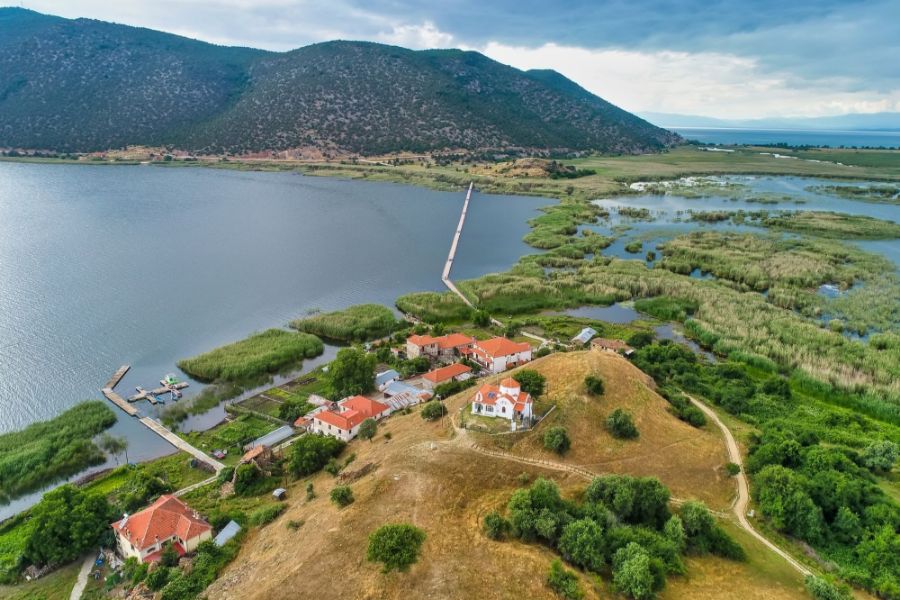
248 km west of Thessaloniki, in the mountainous northwestern Macedonia part of Greece, you will find the National Park of the two Prespes lakes . The Prespes lakes are shared by three countries: Greece, North Macedonia, and Albania.
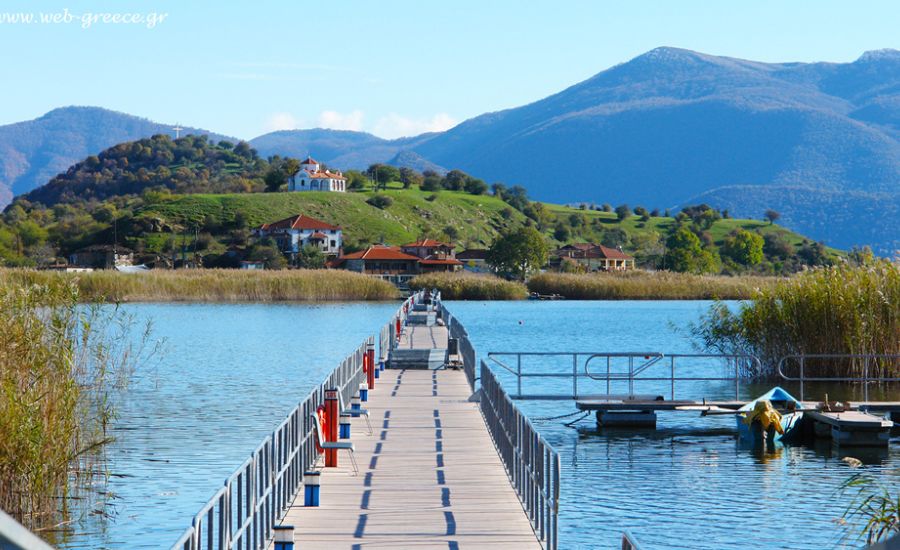
Prespes Lakes is a virgin natural paradise, a beautiful wetland, and one of the best places to visit in Greece for nature, and bird watching (260 species of birds and 23 species of fish). Moreover, the coast of the lakes is dotted with gorgeous small settlements and historical monuments of archaeological interest.
Where Best to Stay in Prespes Dora’s House at Agios Germanos .
Travel Tip : When I visited Prespes we also went to Pisoderi Ski Resort, Florina town, and Nymfaio village where the brown bear shelter is.
4. Mount Olympus National Park
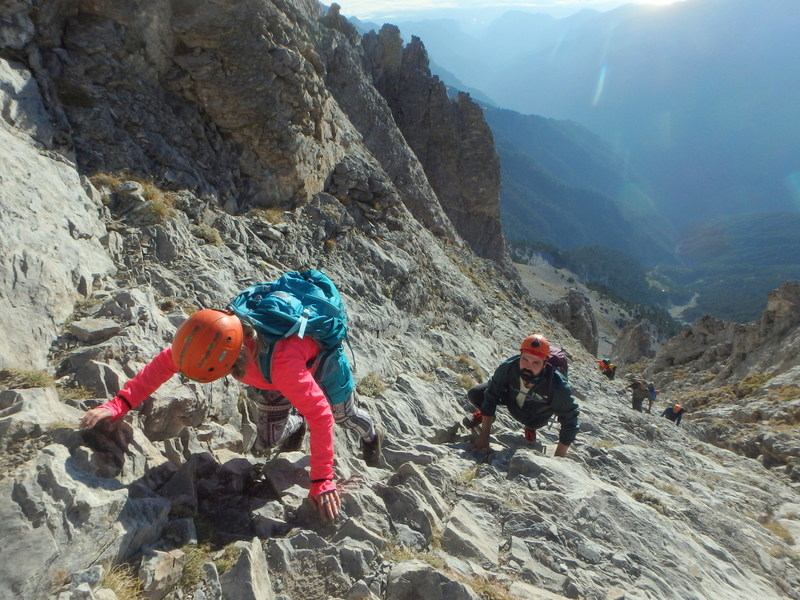
The National Park of Mount Olympus is probably the most famous Mt in Greece and according to Greek mythology, it was the home of the gods. Olympus is the highest mountain in Greece and the second highest in the Balkans. The highest peaks of the mountain are Mytikas (2.918 m.), Stefani (2.909 m.), Skolio (2.911 m.), and Skala (2.866 m.).
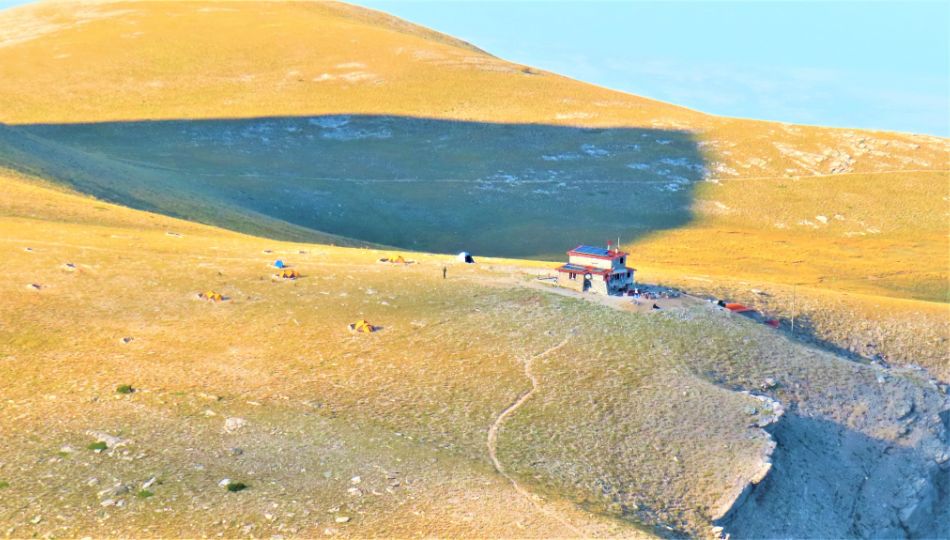
The National Park of Mount Olympus is not only an international hiking destination that is considered quite demanding in certain areas. It also contains a large diversity of flora and fauna, some of them unique. As it is a highly protected area (no camping or fishing), you can reach its shelters only on foot. If you are planning to reach Mytikas, then I strongly advise you to do so between May and October. Olympos is one of the best places to visit in Greece!
The best place to stay for Mount Olympus is the nearby Litochoro village at Mythic Valley Hotel .
Best Places to Visit in Greece (Central)
5. zagori, epirus.
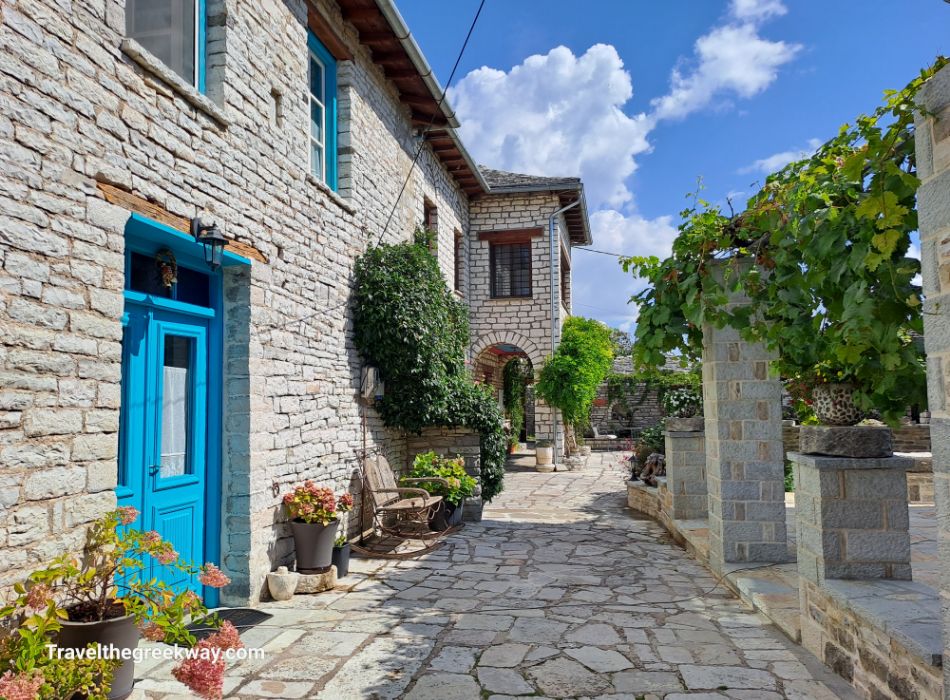
Zagorochoria or Zagori may sound like it is one place but actually, it is a cluster of 46 lovely villages! It is located in the northwestern region of Greece amidst the mountains of Pindus in Epirus. In the summer of 2023, the area was listed in the UNESCO monuments list.
Zagorochoria is one of the favorite winter destinations among Greeks and gets busy in December, especially during Christmas. Some of the best things to do in Zagori are:

- Walk the cobblestone villages full of traditional stone mansions. The most popular villages are Monodendri , Mikro, and Megalo Papigko.
- Hiking at Aoos National Park.
- Hiking Vikos Gorge (if weather permits it).
- Hike at the Dragonlake of Tymfi.
- Try the local cuisine and the famous milk, cheese, pumpkin, or sweet pies.
6. Parga, Epirus
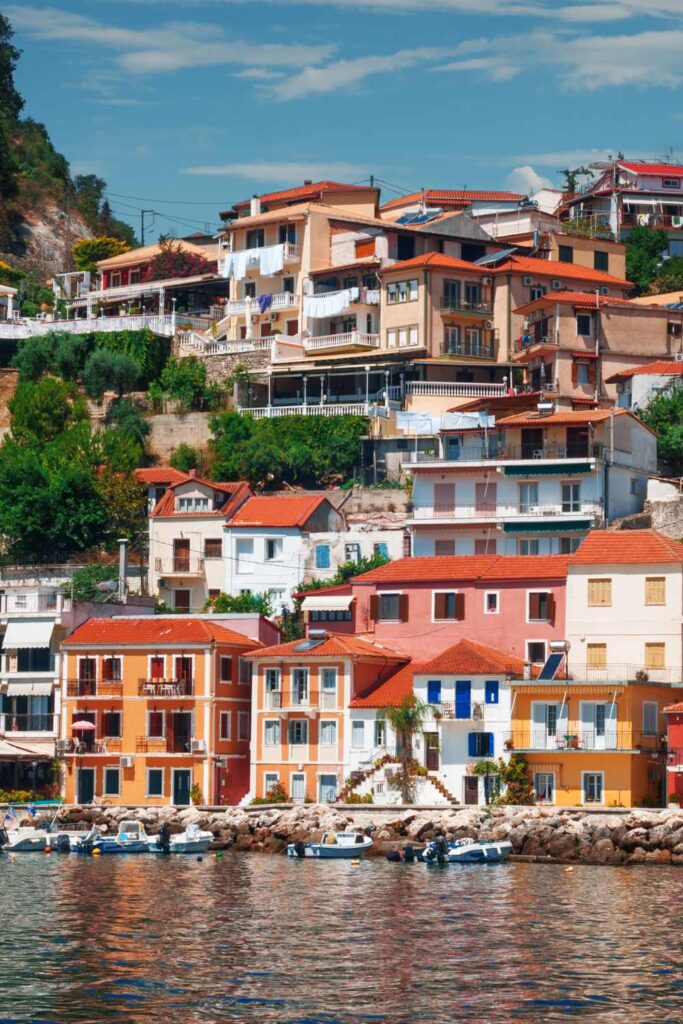
Parga town is one of the best places to visit in Greece for couples. It is a beautiful, popular seaside tourist destination in western Greece. It has some lovely beaches like Sarakiniko and during summer, it is connected daily by ferry with Paxos, and Antipaxos , Corfu , and Lefkada.
Fifteen km from Parga lies the most important ancient monument of the region, the Necromancy of Acheron . Here the Ancient Greeks believed that the river Acheron was the Gates of the Underworld.
7. Meteora, Thessaly
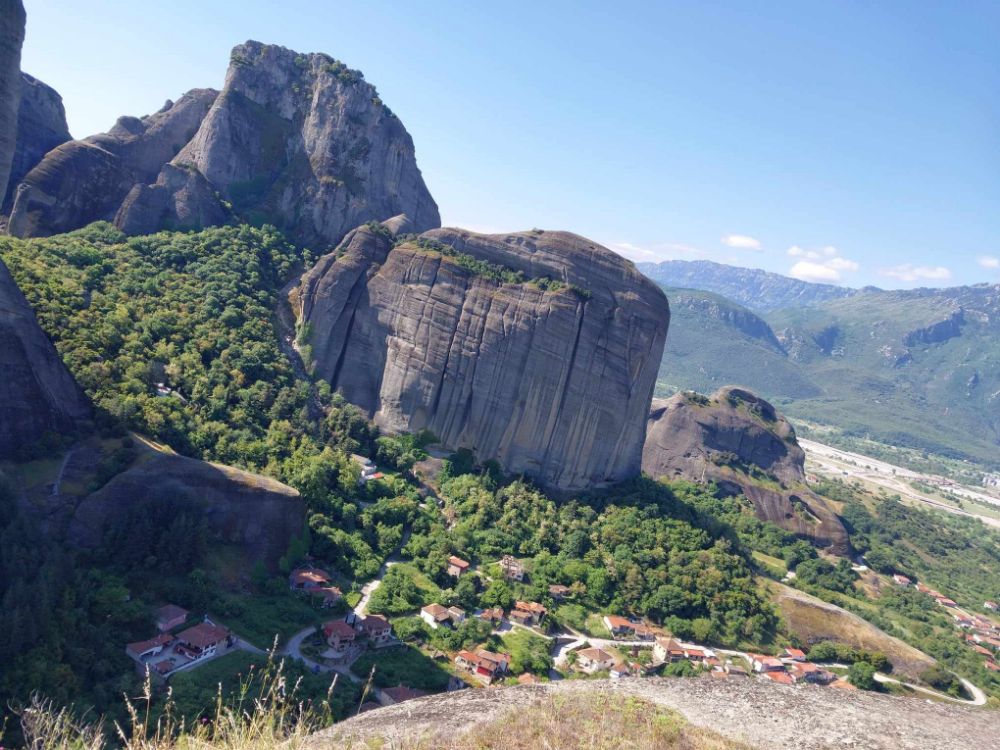
Meteora is one of the top destinations in Greece for nature and culture!
The rocks are an extensive complex of gigantic sandstone rocks shadowing the local town of Kalambaka, 347 km north of Athens. There were initially 24 Monasteries founded by Greek Orthodox monks in the 14th and 15th century but today only 6 of them are working.
The Meteora Monasteries have been a UNESCO World Heritage Monument since 1988 and it is today the second most important monastic complex in Greece after Mount Athos Monasteries in Chalkidiki.

Meteora is one of the best places to visit in Greece if you love impressive natural scenery, monastic life, and religious art. For details on how best to get to Meteora and the schedule of the Monasteries read my dedicated post here.
8. Pelion, Thessaly
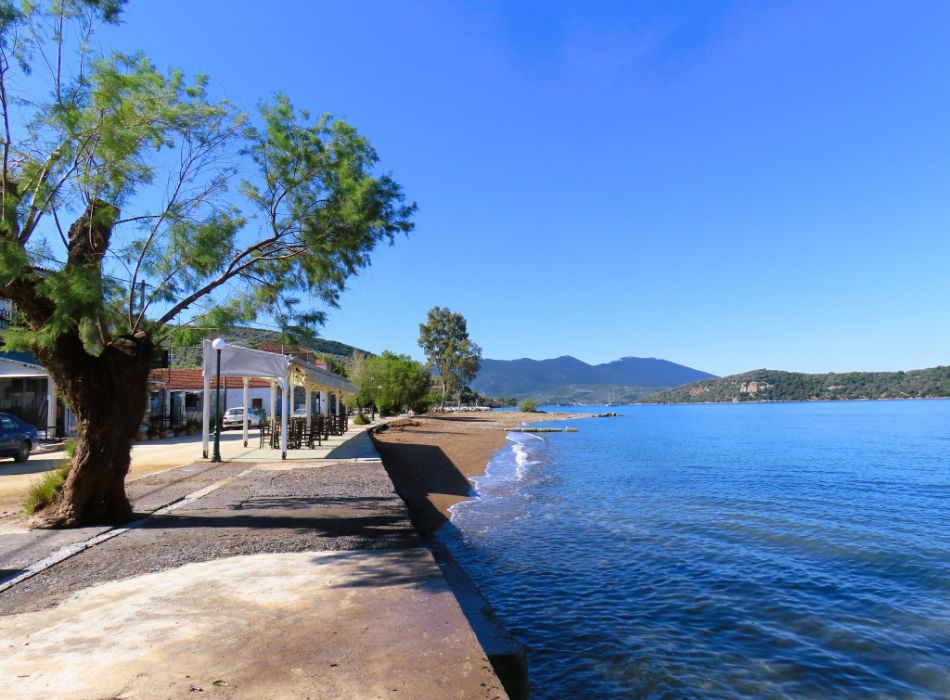
Pelion (or Pilio) is my favorite place in Greece. It is a large mountain (peninsula) between the Pagasetic Gulf and the Aegean Sea located halfway between Athens and Thessaloniki and my favorite place in Greece. It is full of chestnut forests, deep gorges with streams, and stunning beaches with authentic mountainous villages making Pelion one of the best all-year-round destinations in Greece.

Because of the dense forests and variety of terrain, Pelion is a paradise for outdoor activities. Its most popular part is the east Pelion facing the Aegean Sea. One of the villages Damouchari was one of the Mamma Mia Film Locations.
- Related Article: A complete travel guide for Pelion
9. Delphi, Phocis
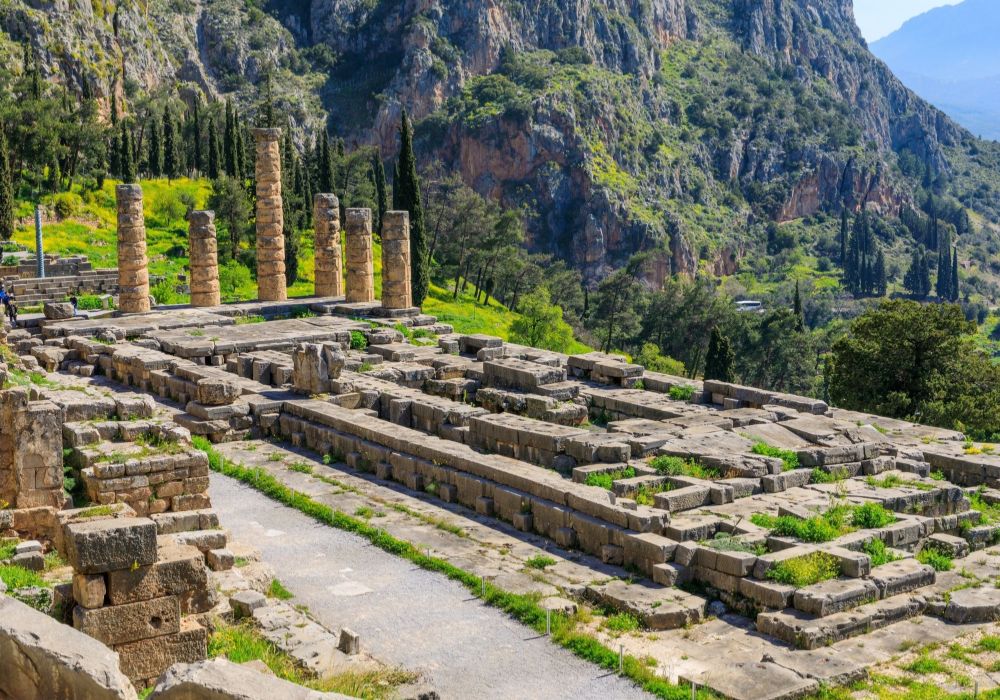
Delphi is a spectacular, UNESCO-listed archaeological site where the mystical Oracle of Delphi was founded at a strategic point. The function of the site as a cult center of Apollo is archaeologically attested since 860 B.C. Delphi was built on the remains of a Mycenaean settlement. We know that the archaic temple of Apollo was constructed in 510 BCE along with the rest of the monuments.
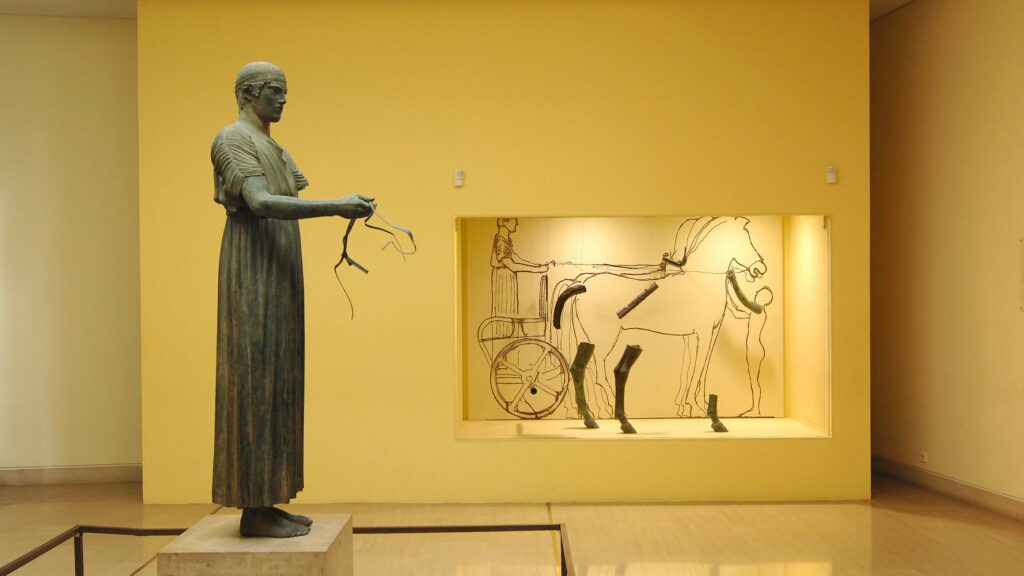
The Delphi Archaeological Museum houses some awe-inspiring ancient masterpieces. The modern 10-km far picturesque Arachova village offers complete touristic facilities and on top of Parnassos Mt, you can ski in the biggest ski resort in Greece.
Do not miss visiting the nearby UNESCO monument of Hosios Loukas Monastery , a Byzantine masterpiece of the 11th century AD. Some call it, the most beautiful church in Greece.
Tour to Delphi & Meteora
Delphi and Meteora are often combined on a 2 or 3-day tour such as 2-Day Delphi and Meteora Tour from Athens . That way, you can see together two of the best places to visit in Greece.
Best Places to Visit in Attika
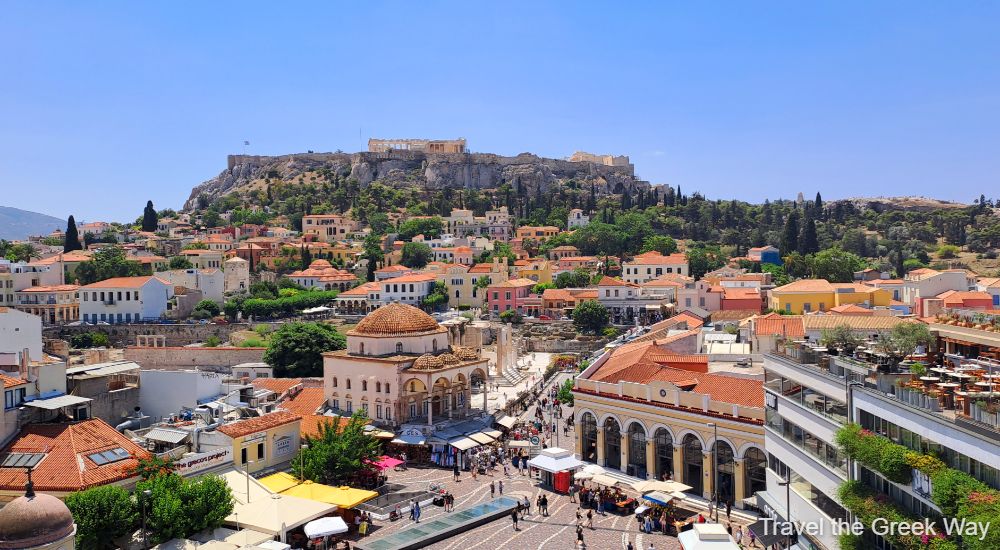
Athens is the ancient capital of Greece and the vibrant financial, commercial, and historical center of the country. It houses the spectacular archaeological site of Acropolis Hill and Ancient Agora, along with dozens of other monuments of all historical eras that you come across as you walk inside the city.
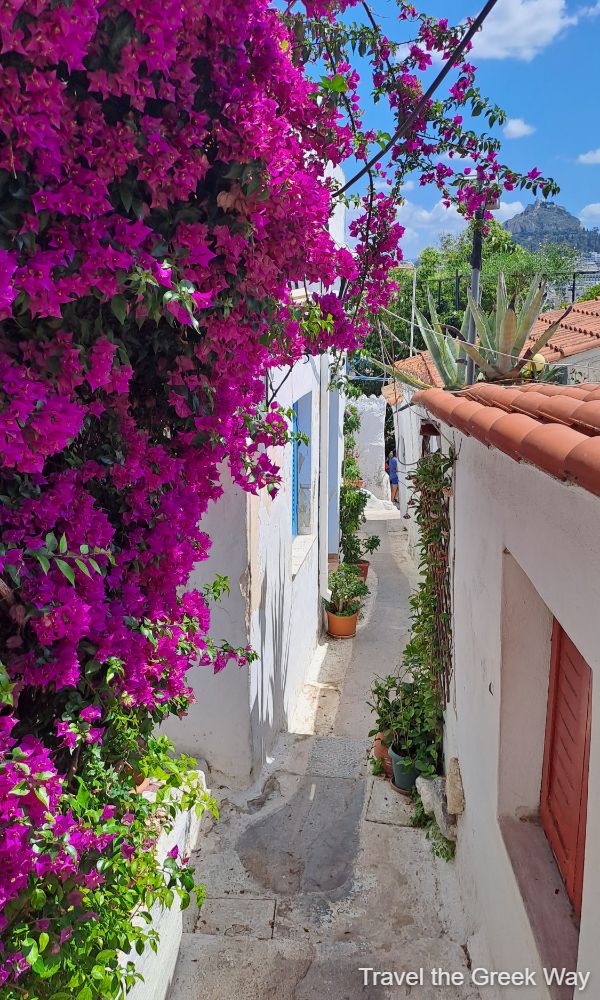
One of the best places to visit in Greece, specifically in Athens is Plaka and the Anafiotika. It is called that because they were built by sailors from Anafi island. In Athens, you can also visit two of the most significant museums in the world: the Acropolis Museum and the National Archaeological Museum.
Related Articles:
- Best Acropolis View Hotels in Athens
- The Ancient Agora of Athens
- The Ottoman Monuments in Athens
11. Athens Riviera, Cape Sounion, and Temple of Poseidon
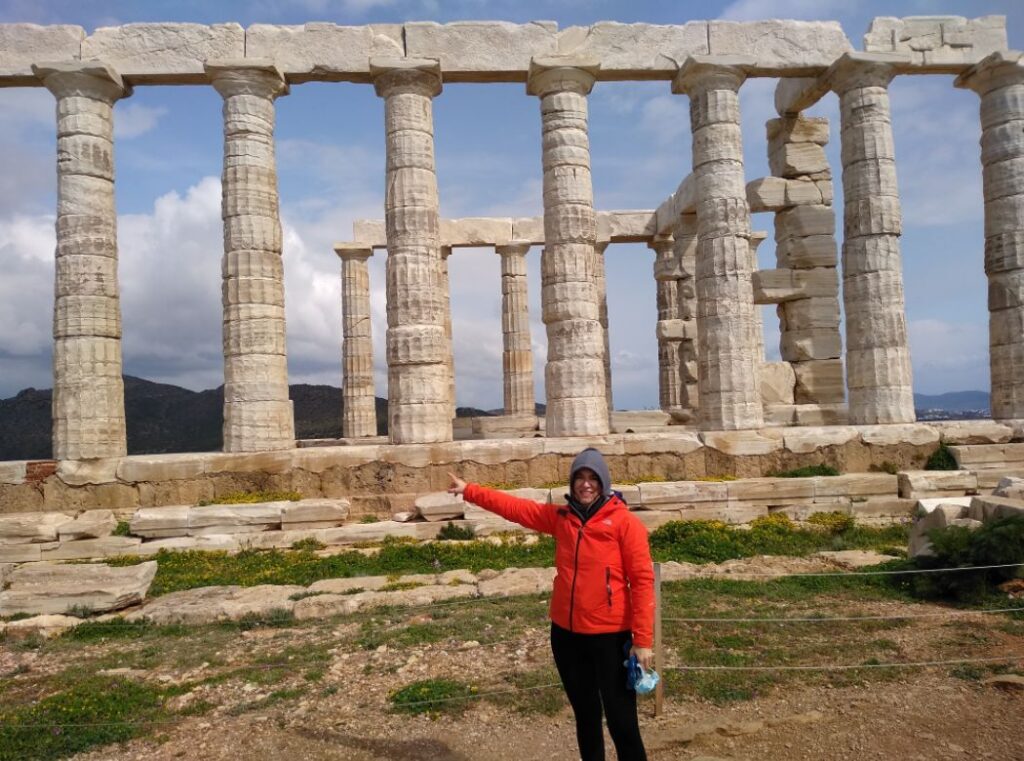
Cape Sounion and the Temple of Poseidon is one of the most popular half-day tours from Athens, located at the northernmost point of Athens. You can get there taking the scenic road of Athens Riviera , 65 km by the beautiful Attika seaside.
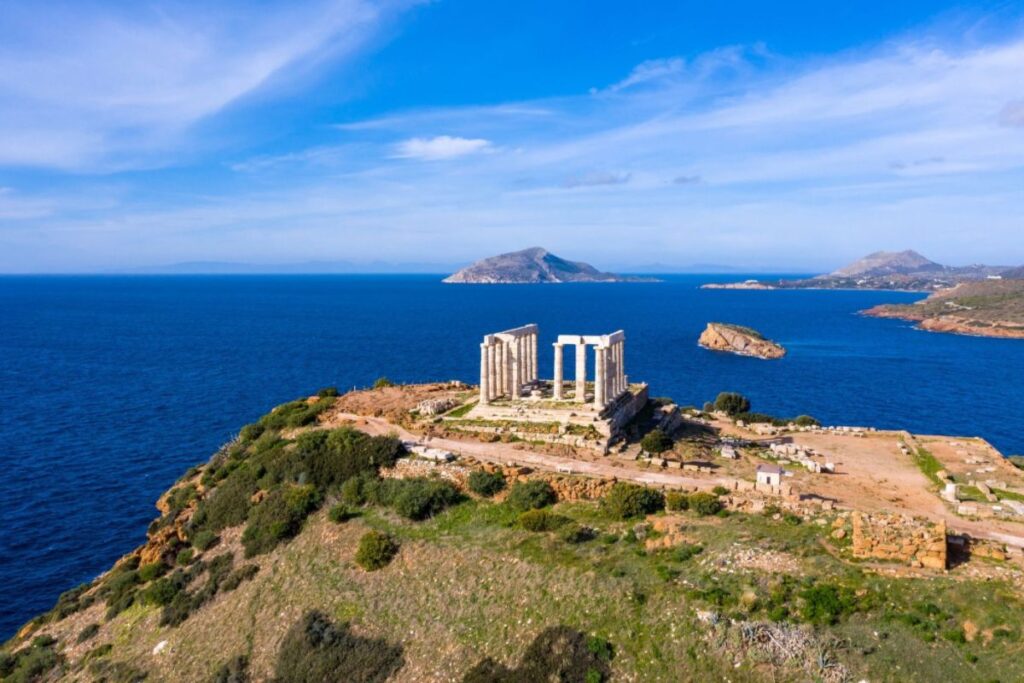
There you will reach the Sanctuary of Poseidon and its Temple, built between 444 and 440 BCE. The temple of Poseidon was part of the sacred triangle, along with the temple of Aphaia in Aegina and the Parthenon in Athens.
Cape Sounion is one of the best destinations in Greece to admire an important archaeological site and the spectacular sunset from it.
- Athens Riviera
- Athens Beach Hotels
- Cape Sounion and Sunset Private Tour from Athens
12. Ramnous
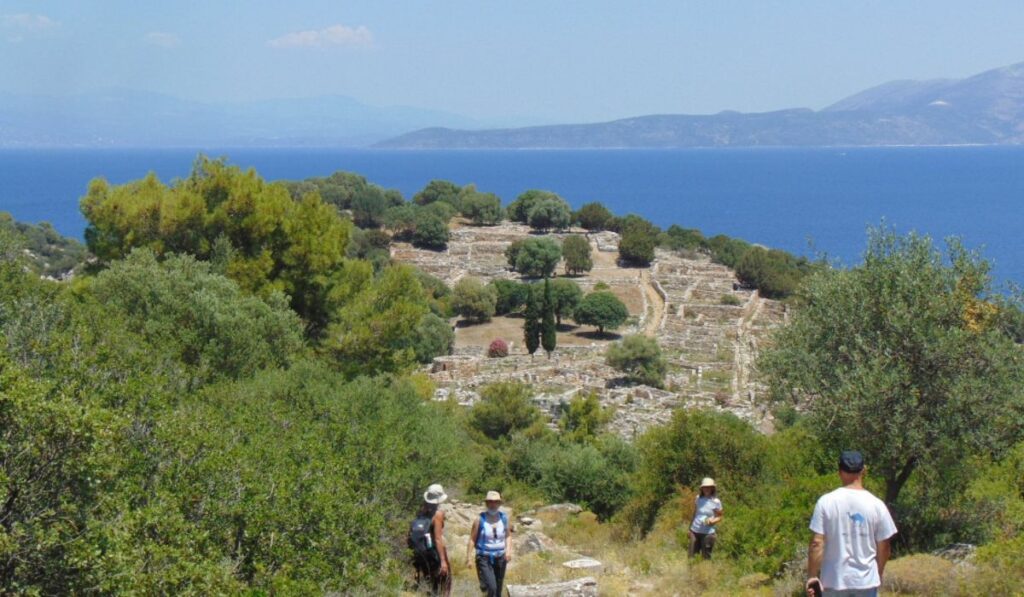
Ramnous is located in the Marathon area of Attika, 55 km northeast of Athens center. It is one of the top destinations to visit in Greece if you love fortified ancient cities.
Most of the other famous Greek archaeological sites you visit, like the Acropolis of Athens or Epidaurus, were mostly sanctuaries dedicated to gods. Ramnous was a real town, with everyday chambers, soldiers to guard it, and fortifications as it was built at a strategic point, just like Sounion.
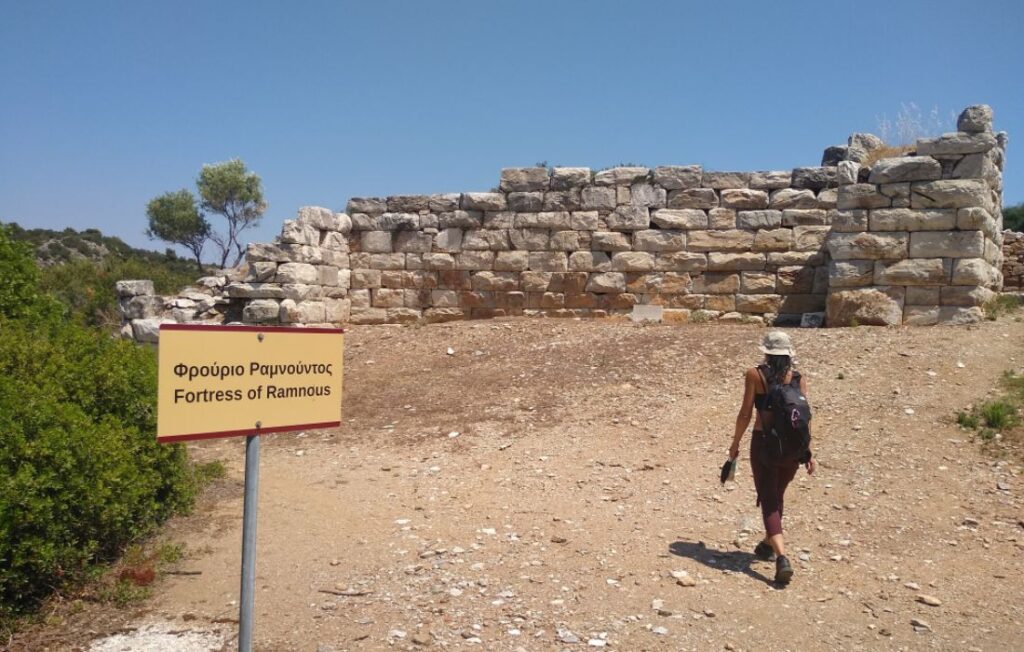
Ramnous offers an amazing opportunity for visitors to see how ancient Greek cities around 500 BC used to be. Furthermore, as the site is divided into two distinct areas, the top site includes the most important Temple of Nemesis in ancient Greece.
Related Article: Travel Guide to Ramnous Site
Best Places to Visit in the Peloponnese
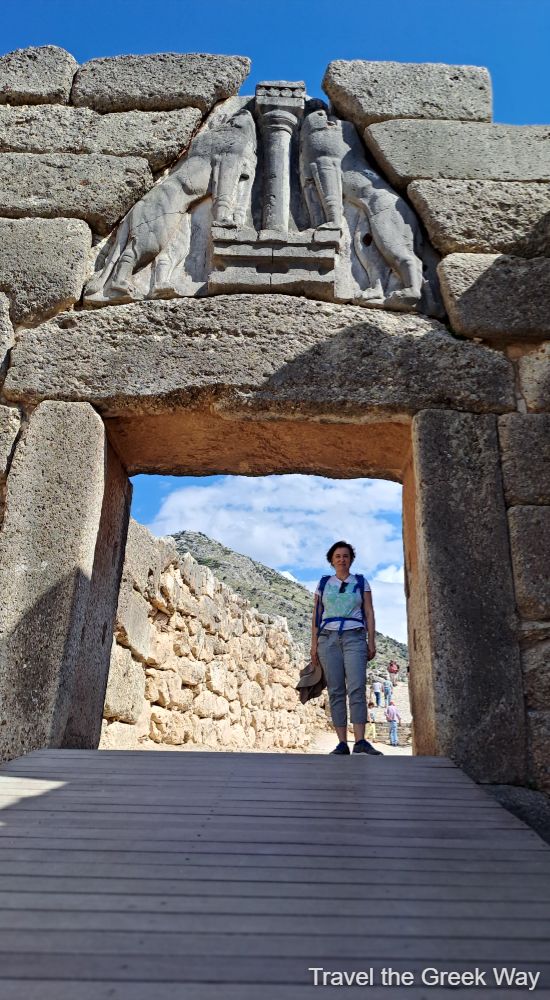
Peloponnese is the southern mainland of Greece, home to some of the most impressive archaeological sites, lovely beaches, and authentic villages. Peloponnese needs a lot of time to be explored but as this is not always possible find below some of the best places in Greece for history and beaches!
13. Mycenae, Epidaurus, Nafplion (Argolis)
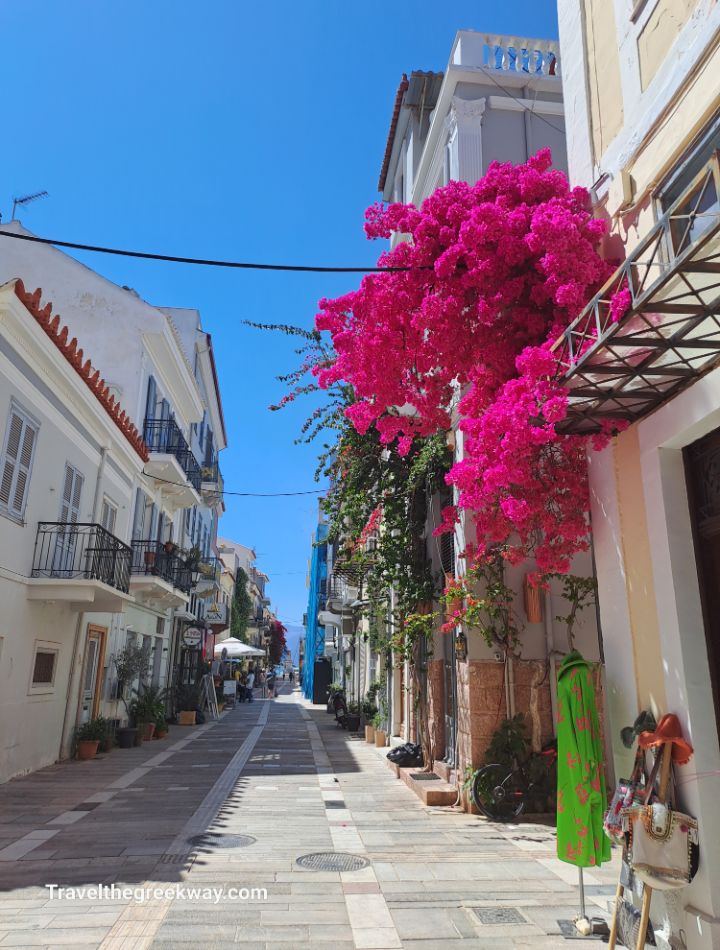
Argolis region is situated in the eastern part of the Peloponnese and contains some very popular and amazing sites:
- The Mycenean Palace and Domed Tombs of Mycenae (UNESCO-listed)
- The Sanctuary of Asklepios and the Theater of Epidaurus (UNESCO-listed)
- The Mycenean Fortress of Tiryns
- Argos and Tolo
- Nafplio town , a gorgeous medieval town with 3 castles
- Porto Heli and Spetses island
14. Monemvasia, Laconia
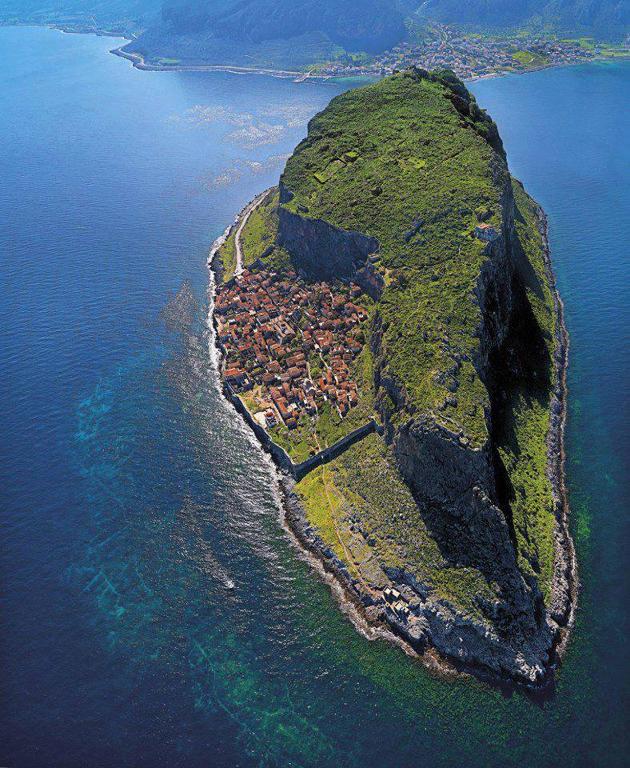
Monemvasia is a large Byzantine fortress on a rock that broke away after a great earthquake in 375 CE. Today it is connected to the mainland by a road of about 400 meters.
Monemvasia has medieval houses with arches on cobblestone alleys in front of the Aegean Sea, synthesizing a magical atmosphere.
Best Property to Stay in Monemvasia: Casa Felicia-The Castle Mansion .
15. Mystras, Sparta
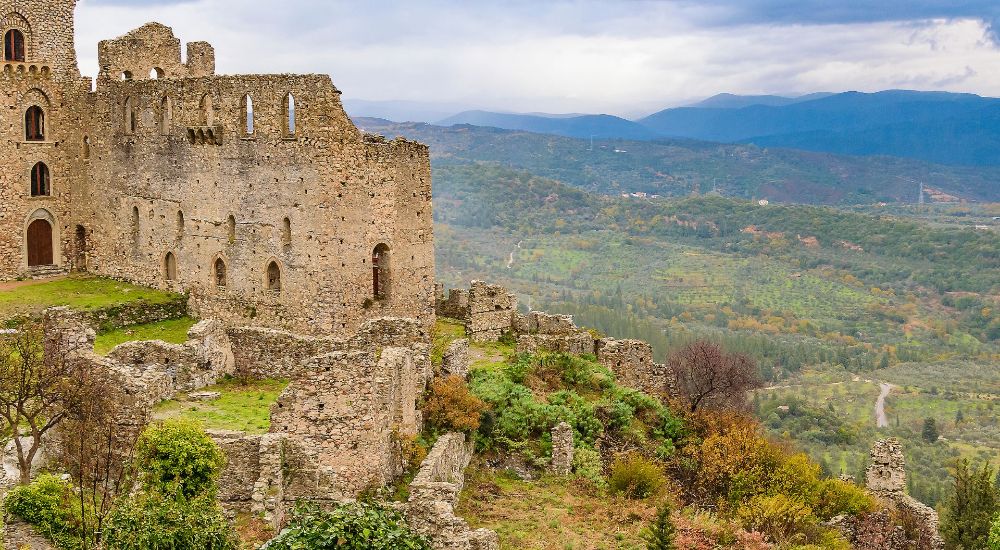
6 km away from Sparta, the ancient kingdom of Leonidas, lie the Byzantine Castle ruins of Mystras a UNESCO-listed monument. Built in the 13th century AD by the Frankish, Mystras became the capital of the Despotate of Morea and an important center for the next 2 centuries.
The layout of the castle city is in three distinct zones, with a significant difference in altitude: Upper, Lower, and Outer Chora. In addition, there is the Acropolis at the top. Today Mystras is by far the most important Byzantine monument in Greece.
16. Kardamili, Western Mani
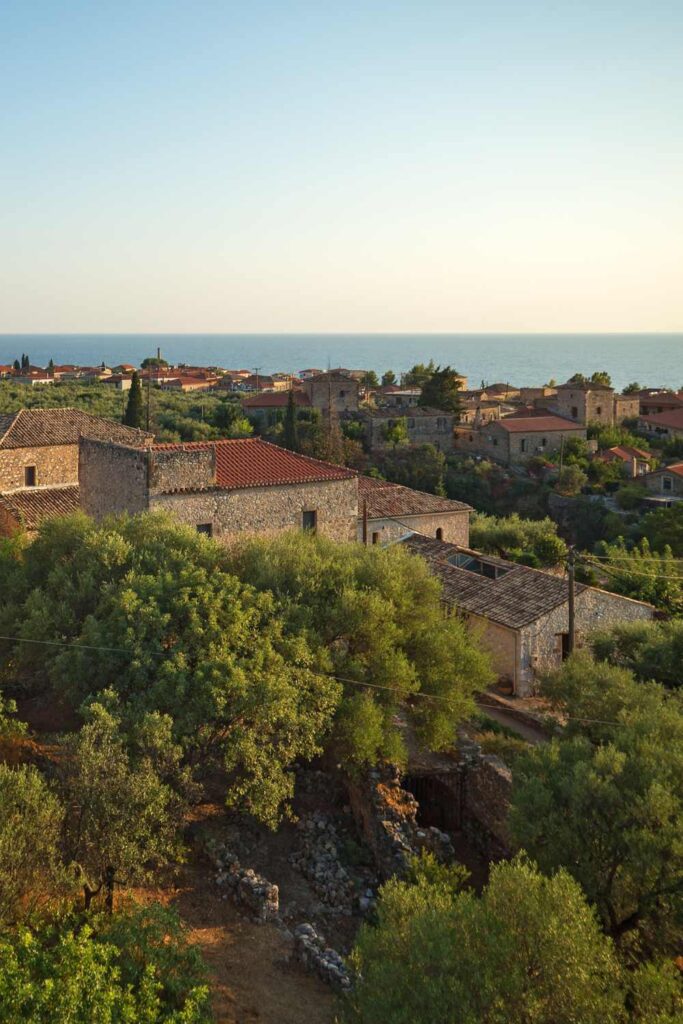
Kardamili is a beautiful, low-key seaside village with tavernas in picturesque little coves. As you stroll the village you pass by stone-built traditional houses, towers and turrets, cobbled streets and flowered courtyards.
Kardamili, set at the foothills of the Taygettus range is a fantastic destination in Greece, ideal to explore the stark and powerfully wild terrain of the area. Travel south to some spectacular villages such as Limeni, Areopoli, Gerolimenas, Caves of Diros, and Vathia to Porto Kagio.
Best Hotel in Kardamili: Salvia .
17. Voidokilia Beach
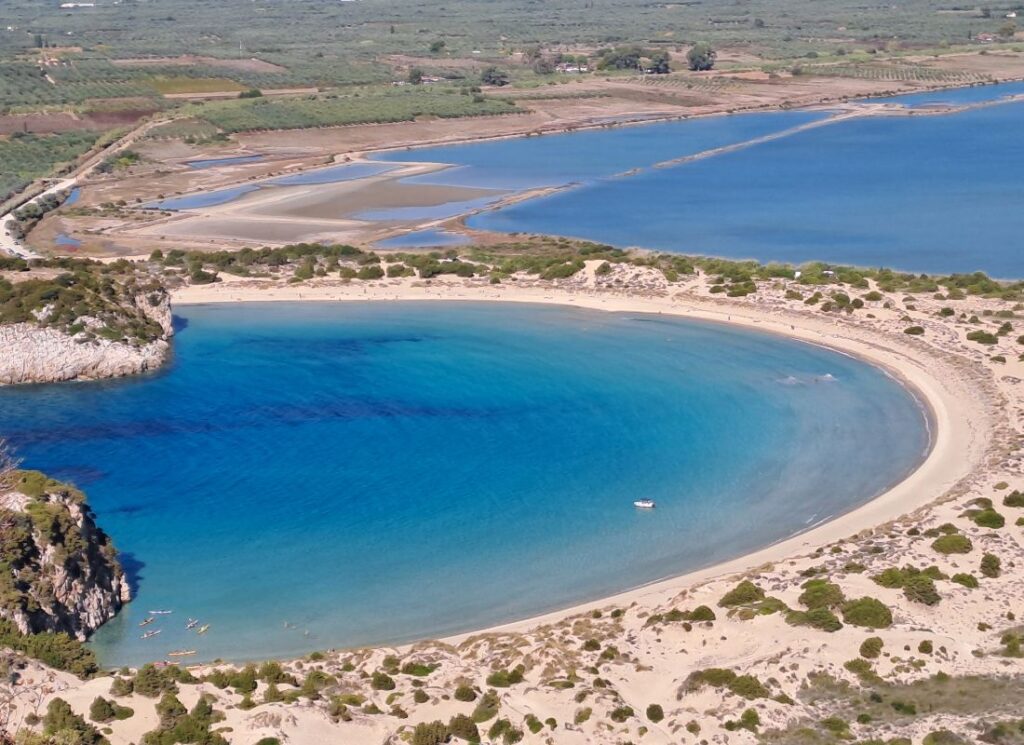
Voidokilia beach, set on the southwestern Peloponnese on the Ionian Sea is one of the most beautiful beaches in the Mediterranean. Shaped like the Greek letter Omega (Ω) and surrounded by gold, soft sand, and a Natura-2000 lagoon, this is one of the best destinations in Greece.
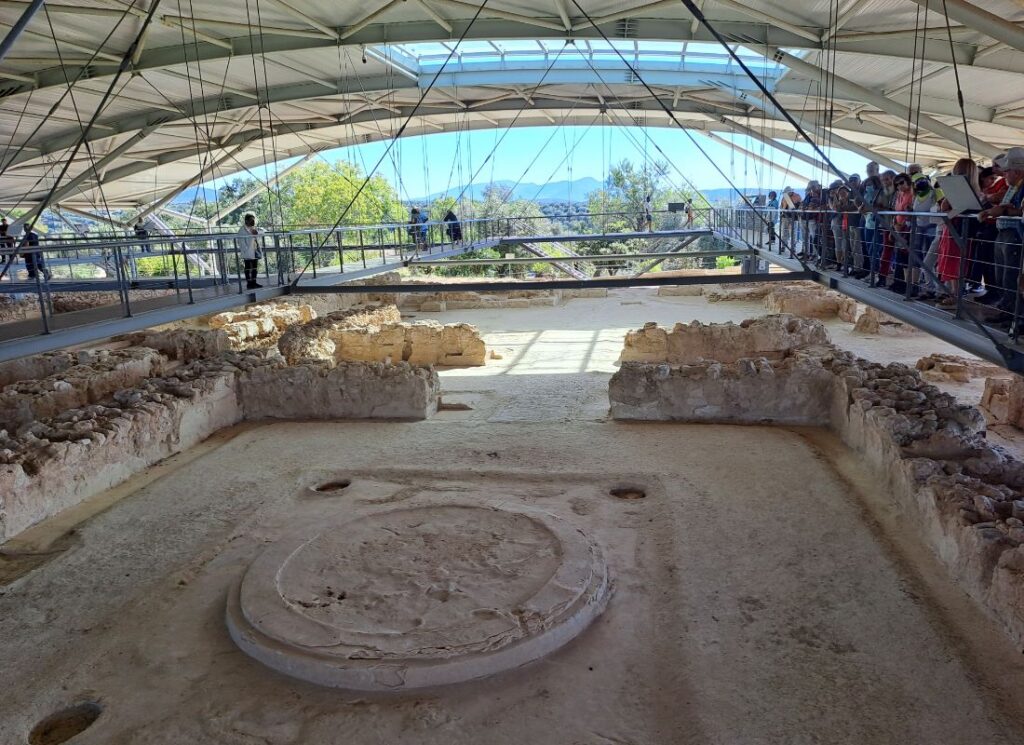
Voidokilia Beach is near Gialova town, a popular seaside town, the Mycenean Archaeological site of Nestor’s Palace , beautiful Pylos and Methoni villages.
The best hotel to stay near Voidokilia is Costa Navarino .
- Related Article: Hiking Voidokilia Beach
18. Ancient Olympia
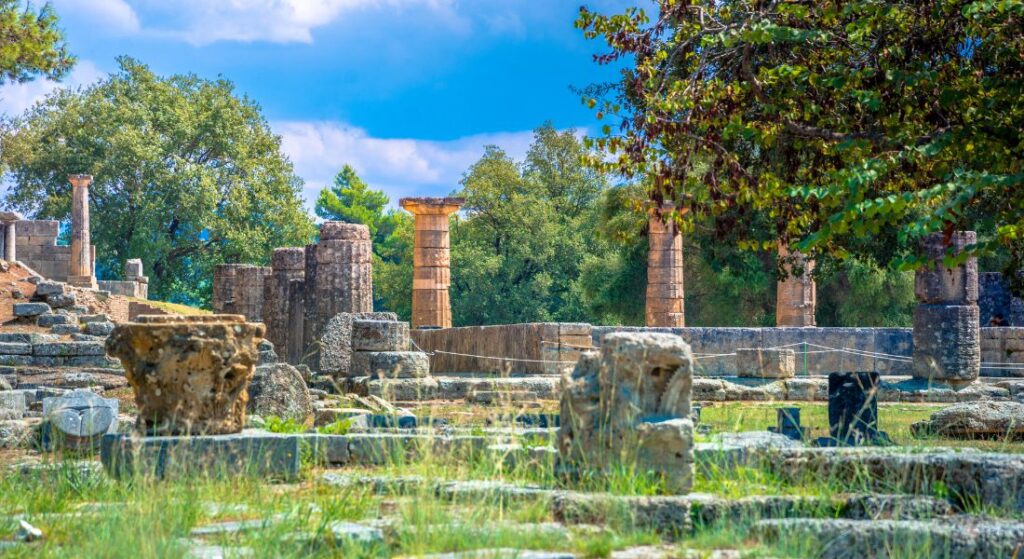
Ancient Olympia is one of the most important archaeological sites in Greece, another UNESCO-listed site. The ancient stadium marks the site where the ancient Olympic Games and the Heraia were held. The stadium took its final form in the early 5th century BCE when the great Sanctuary of Zeus was built.
In the in-house Museum, you will get the chance to see some masterpieces of the Greek ancient world, such as the Hermes of Praxiteles.
The best hotel to stay overnight in Olympia is Hotel Europa.
Best Islands to Visit in Greece
Greece has about 6,000 islands and islets with about 100 of them inhabited with permanent populations ranging from 680.000 (Crete) and 152.000 (Rhodes) to 2 (Agios Minas Fournoi). That makes it hard to decide which island to go to if you are planning to travel to Greece for the first time.
So let’s jump to the best islands in Greece that I believe are amazing and you should visit:
19. Santorini, Cyclades
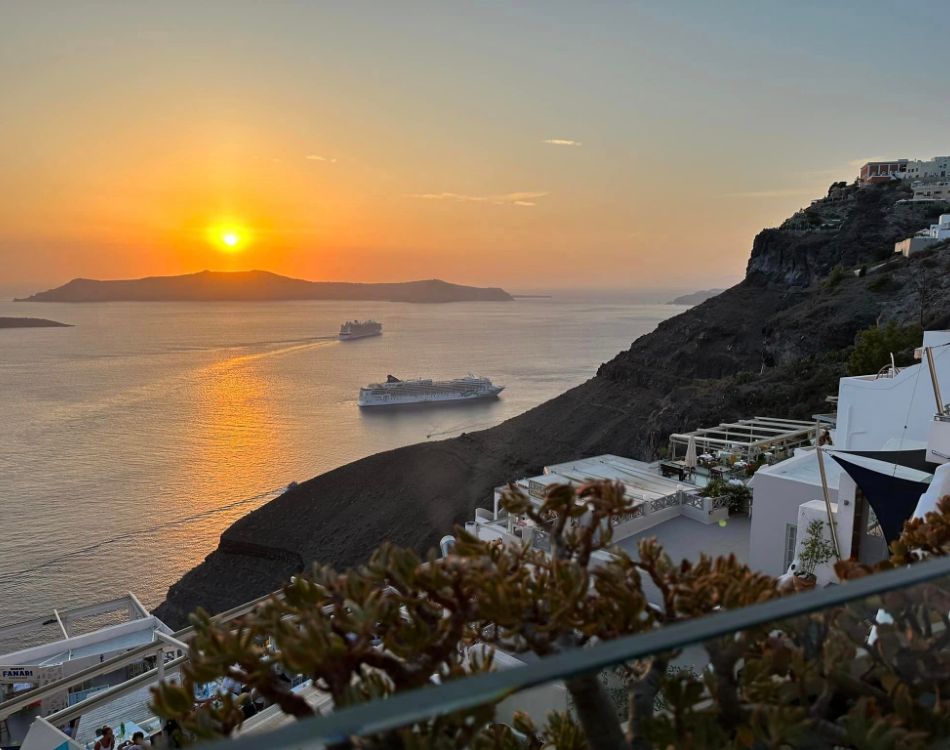
- Santorini is a top destination in Greece famous for its stunning caldera views, mesmerizing sunsets, and a once-in-a-lifetime travel experience.
- July and August are the busiest, hottest, windiest, and most expensive months on Santorini island. If possible, avoid those months.
- There are dozens of things to do in Santorini but 3-4 days is enough to see the best of the island.
- The best hotel in Santorini is Canaves Oia Suites & Spa .
20. Naxos, Cyclades
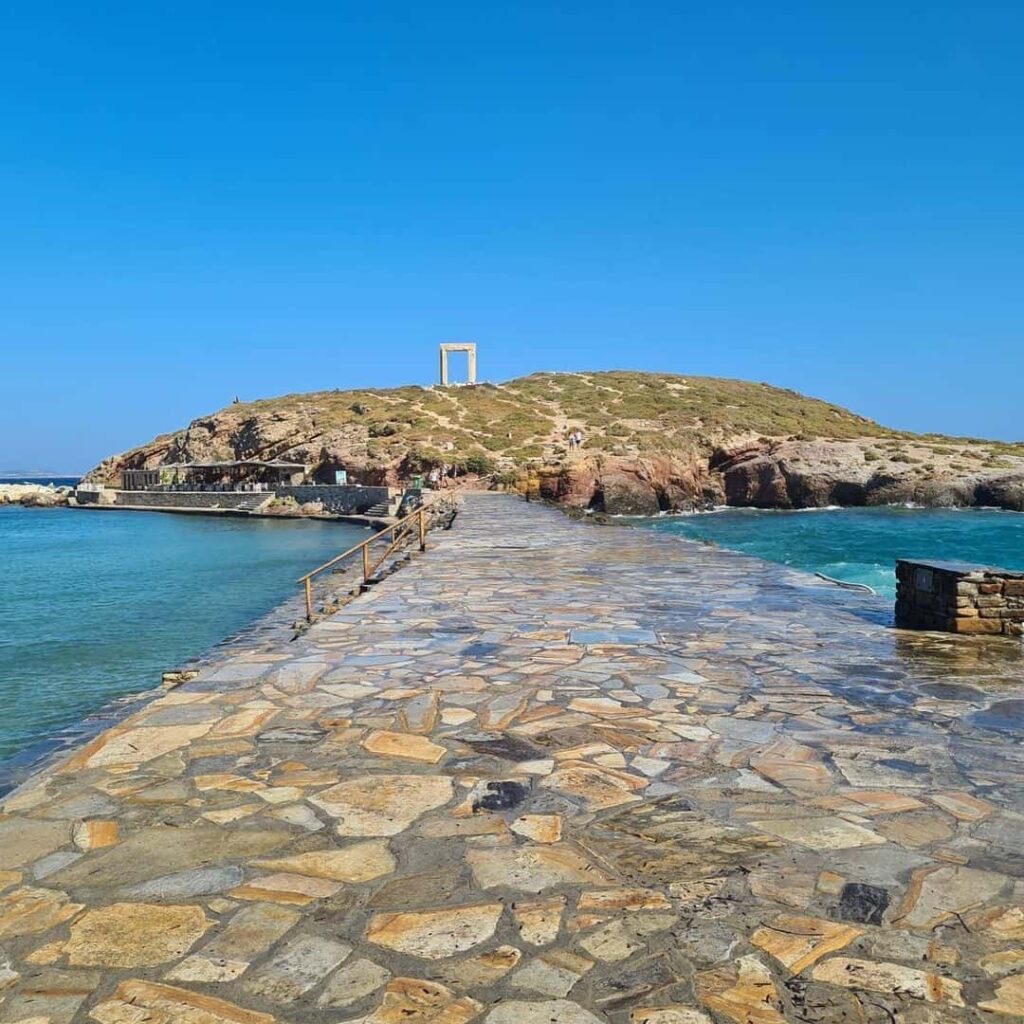
- Naxos is ideal for family vacations. It is also large enough to never get bored with so many choices: traditional villages, ancient sites (Portara in the main town), stunning sandy beaches, hiking trails, and glorious food.
- Check my dedicated post on Naxos’ best attractions here for more details.
- The best family apartment in Agia Anna Beach is Sunday Studios .
21. Tinos, Cyclades
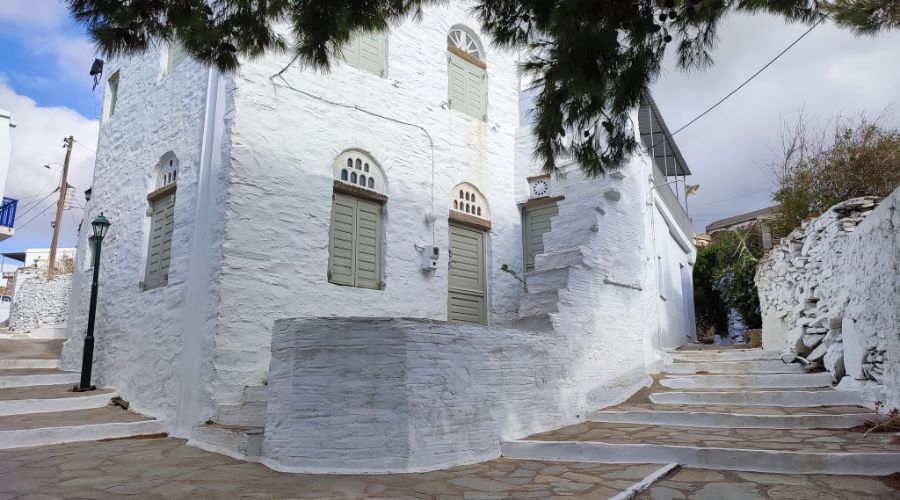
Tinos is a classic Cycladic whitewashed island with some of the most beautiful villages in Greece. It is an important pilgrimage center of Orthodox Greeks and it has 750 chapels and churches, 600 dovecotes, and 34 settlements, both Catholic and Orthodox. It has also the sanctuary of Poseidon, where pilgrims were purified before passing to the important island of Delos in Mykonos .
22. Chios, Northern Aegean Island
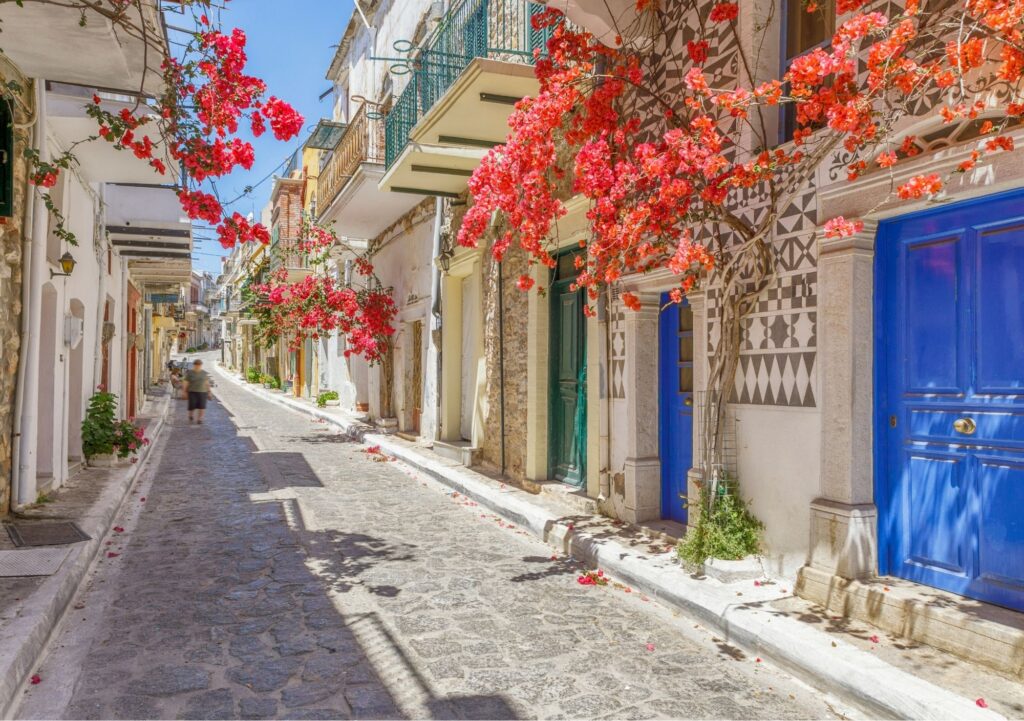
- Chios island is the home of medieval villages producing the famous mastic, of UNESCO Monastery of Nea Moni of Chios, the Castle City hanging over the cliff, and the spectacular nature and beaches from Kardamyla to Diefha.
- From Chios, you can hop to Lesvos island which is 3 hours away by ferry.
- Best medieval property to stay in Chios: St. George Sykoussis Traditional Residence .
23. Patmos Island, Dodecanese
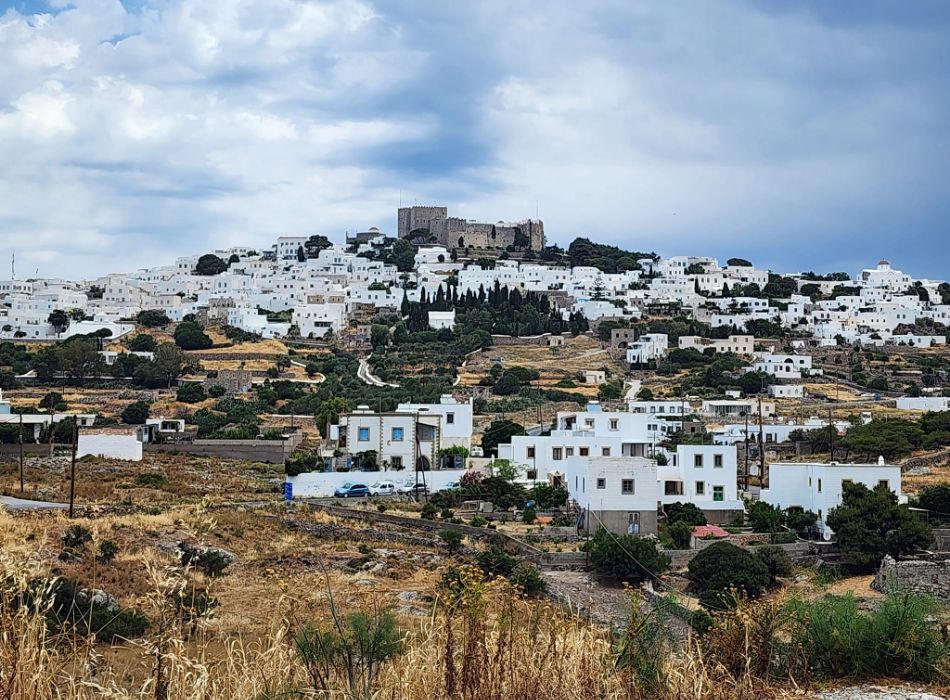
Patmos is a small but remarkable island, also known as the Jerusalem of the Aegean. You can visit the dark Cave where Apostle John wrote the Apocalypse and the UNESCO Mοnastery of John the Evangelist. Stroll the medieval villages of Gothic and neoclassic architecture and swim in the impressive Twin or Ligginou beaches.
The best place to stay is at Skala in Patmos at this gorgeous property: Patmos Eye Traditional Luxury Villas .
24. Astypalaia island, Dodecanese
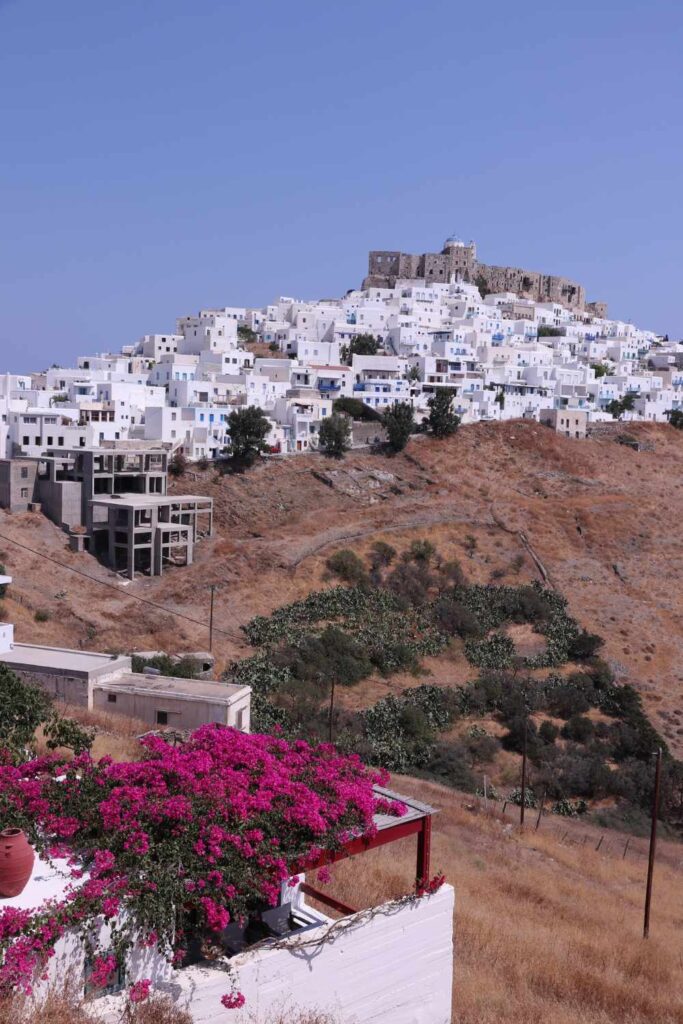
Astypalaia is one of the most authentic islands to visit in Greece. Shaped like a butterfly, it will charm you immediately with its whitewashed villages, its picturesque main town laden with bougainvilleas, its Venetian Castle and the old windmills, the turquoise waters, and the peaceful fishing villages. Best place to stay: Ihthioessa Boutique Hotel .
25. Hydra Island, Argo Saronic
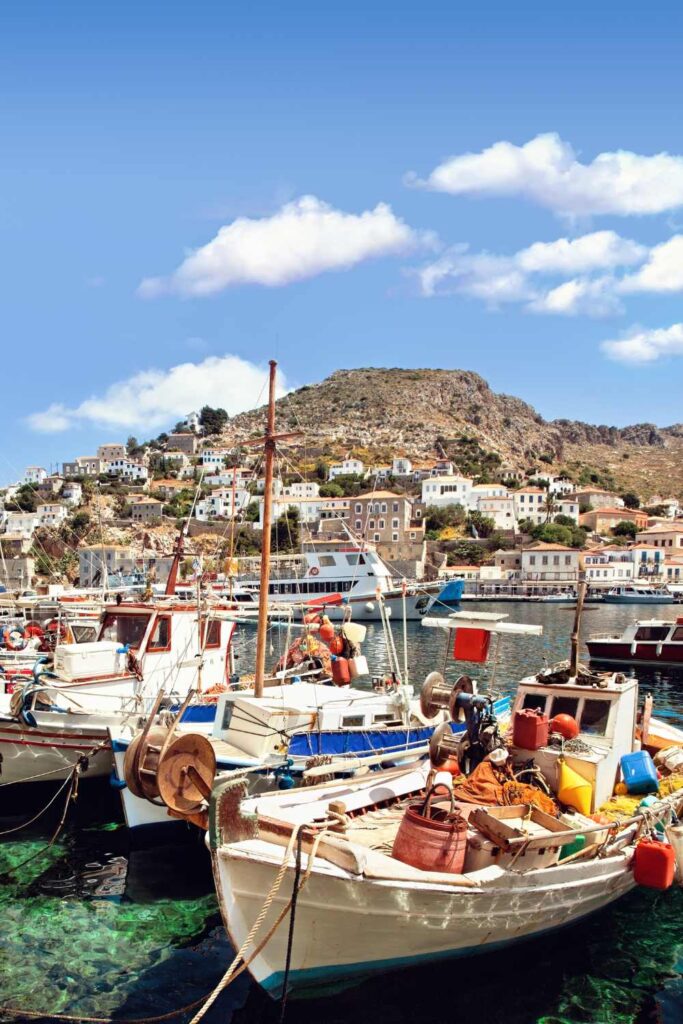
Hydra is a cosmopolitan and classy island and a very popular yachting destination. A completely car-free island, it will stun you with its impressive architecture, the stone mansions, and the bougainvillea alleys. Hydra is one of the most romantic destinations in Greece.
26. Skopelos island, Sporades
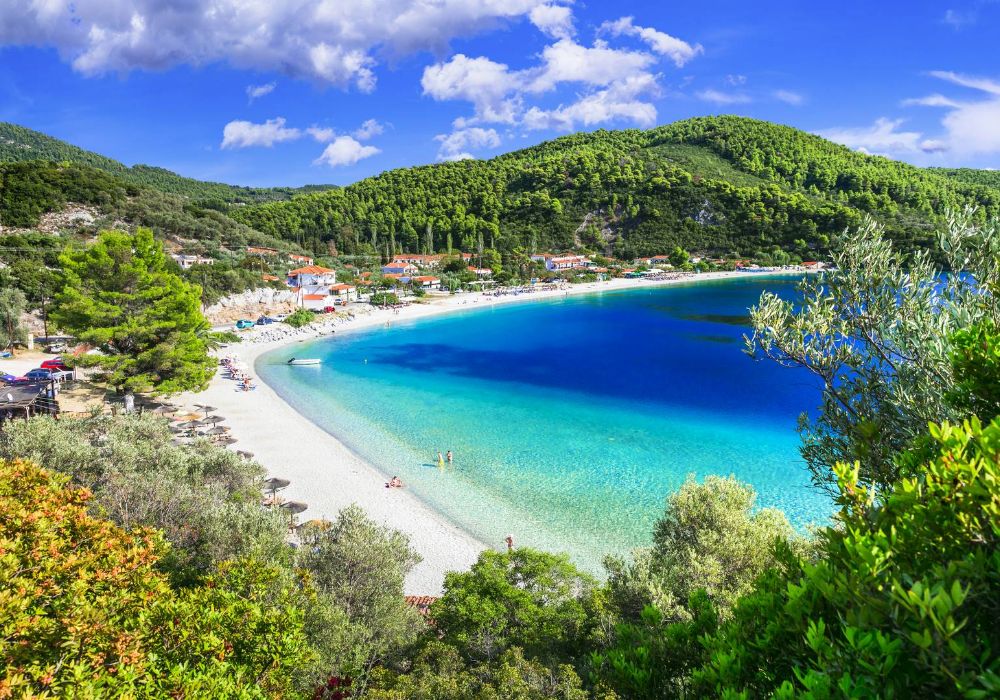
Skopelos is one of the greenest islands as most of it is covered by pine forests. It was the main location of the Mamma Mia film in Greece. If you love wonderful sandy beaches with turquoise clear waters and the green of the pine trees surrounding them, this is your island! Skopelos is also famous for its rich gastronomy.
Best place to stay: Villa Glysteri .
27. Lefkada Island, Ionian
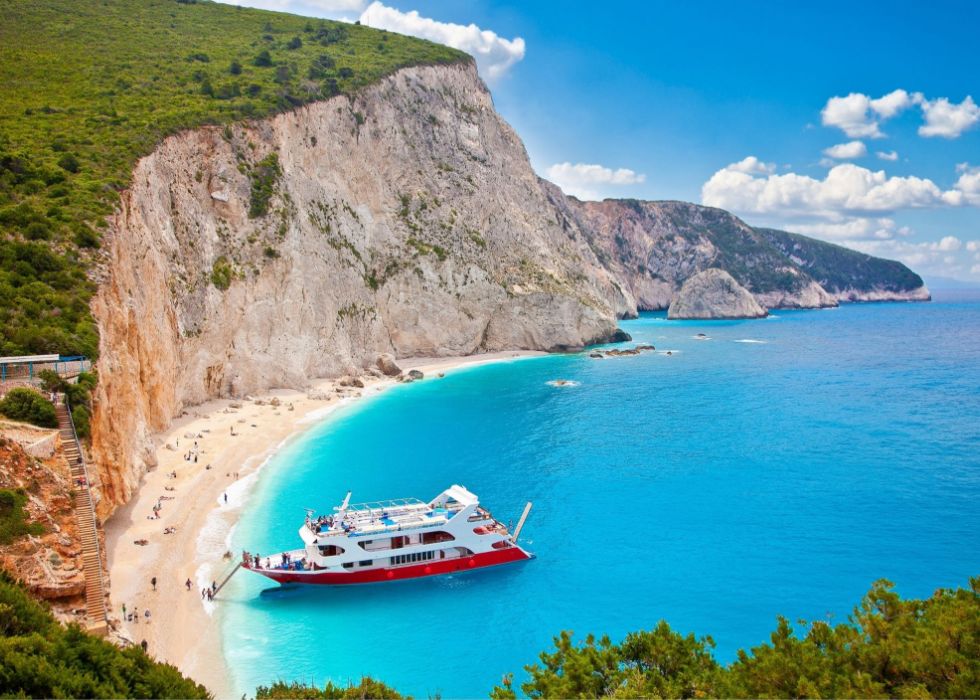
Lefkada is a stunning island famous for its breathtaking beaches like Katsiki Beach (photo on the left) or the Egremni, a long, unyielding wall of cliffs, with bright translucent turquoise waters. It is connected to the mainland with a metallic floating bridge that you can cross by car. Best place to stay: Horizon View Apartment .
Best Places to Visit in Crete
Wherever you go on Crete Island will be stunningly beautiful, and you will have one of the best travel experiences in your life. Crete is the largest island in Greece and even if you spend a month on the island, you would have scratched just the surface.
If I had to choose only three locations in Crete then I would choose spectacular nature such as the Balos beach, the Samaria gorge, and the archaeological site of Knossos Palace.
28. Balos Chania Crete
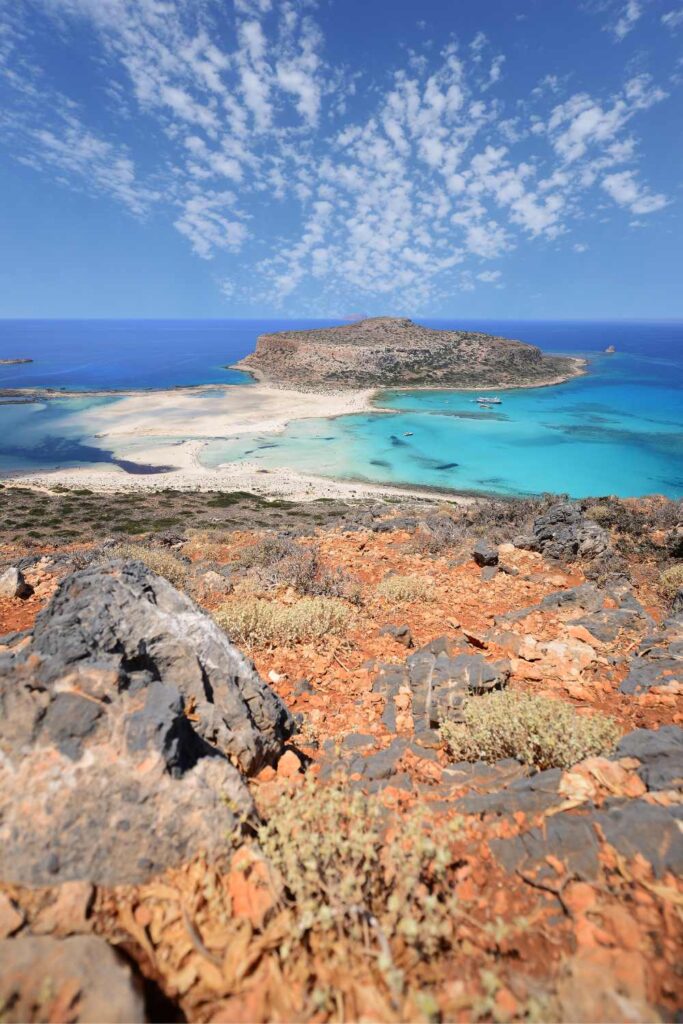
Balos Beach and Lagoon is located in the Chania region, in the northwest of Crete, and is one of the most impressive beaches in the world. It has white soft sand, but in some places, the sand has a special pink color, due to the crushed shells! Balos is an exotic and spectacular place with turquoise waters and a large variety of rare flora and fauna.
- Related Post: What to do in Chania Crete
29. Samaria Gorge, Chania
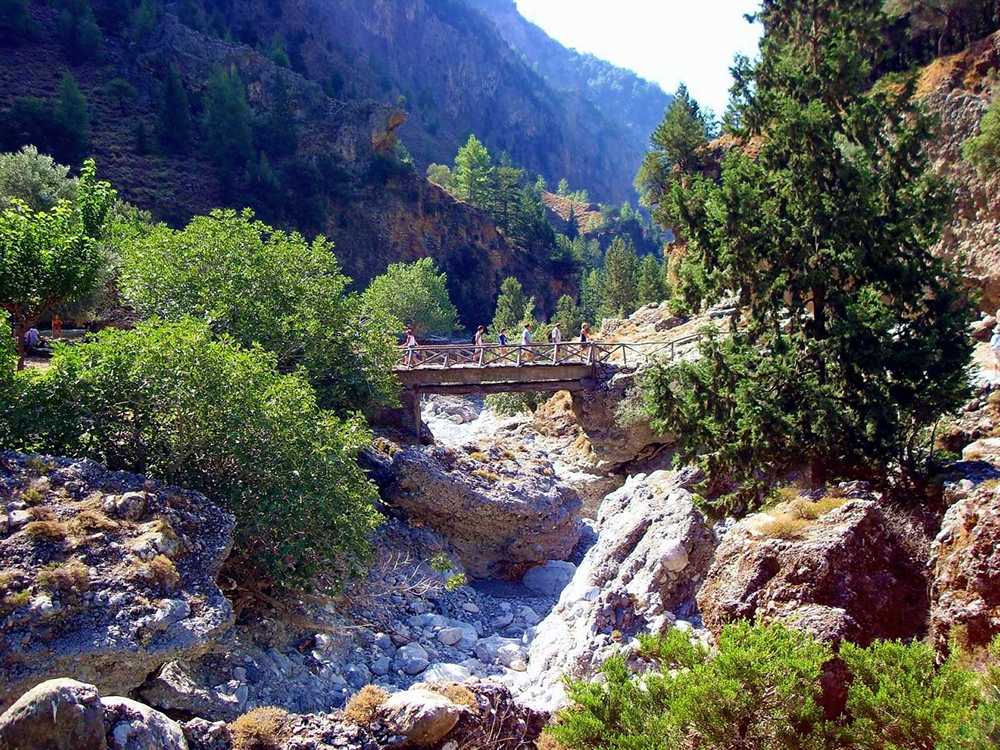
If you love hiking then Samaria Gorge is one of the top destinations to go to in Greece! The 15,9 km Samaria Gorge is a real gem of hiking. It makes a challenging downhill hike of 5-7 hours and at the end is the scenic seaside village of Agia Roumeli . It is open to hiking between May and November.
If you are traveling with a group of up to 8 people you can stay at the beautiful stone Villa Samaria in Omalos.
30. Knossos Palace, Heraklion
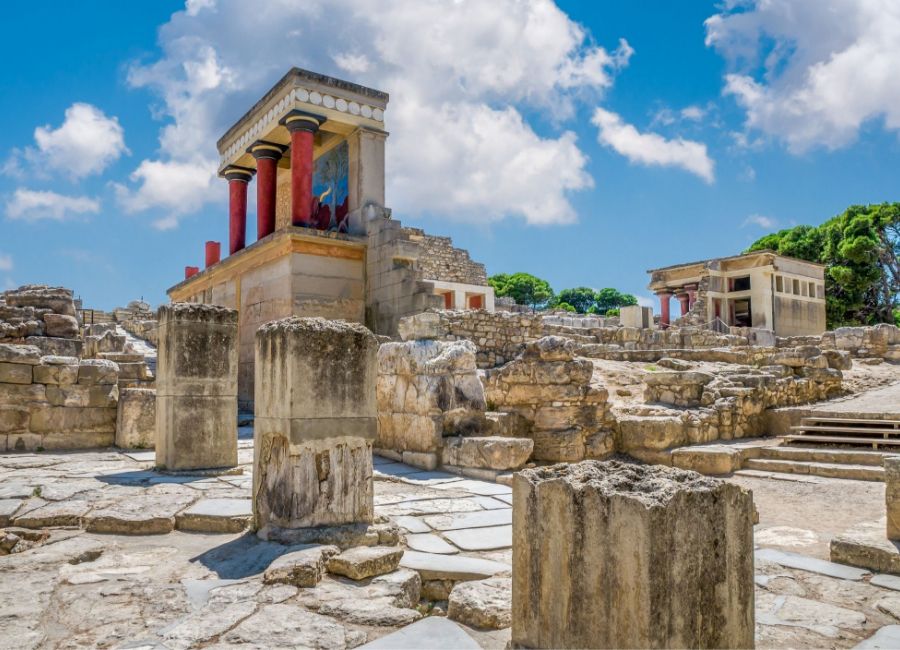
The Palace of King Minos in Knossos in the Heraklion region is the largest of the preserved Minoan (2000-1350 BCE) palatial centers. Minoan four wings are arranged around a central courtyard, containing the royal quarters, workshops, shrines, storerooms, repositories, the throne room, and banquet halls. It is also connected with thrilling legends, such as the myth of the Labyrinth with the Minotaur, and the story of Daidalos and Icaros.
- 12 Best Things to Do in Heraklion
- The Best Hotels and Villages on Crete Island
- The Top Sites to Visit on Crete Island
Plan My Trip to Greece
Do you need a custom travel itinerary or a transfer within Greece ? Are you traveling solo, with your family or friends and need a tailor-made multi-day tour or a transfer?
If yes, please visit my dedicated Plan My Trip Page for a personalized itinerary!
I’d love to hear about where you’re spending your vacation this year, especially if you have any exciting travel plans! There are so many things to do in Greece and I hope that you get the chance to visit as many as possible. Till next time, Evgenia❤️
How to Get to Athens Port (Piraeus) from Athens Airport

- Bus: If you are arriving at Athens International Airport you can travel straight to the port by taking the X96 express bus (€5.5, children <6 yo, free entrance) , which departs every 40 minutes and the average trip lasts 1 hour – runs 24/7.
- Metro : (€9) is easily found across airport arrivals (blue line – M3) going directly to Piraeus port. The average trip to Piraeus lasts 1 hour.
- Taxis are available in front of the airport (around €40 to Athens, €55-60 to Piraeus (depending on the traffic in Kifisos), and take up to 3 or 4 people with small luggage)
- Rent a car with Discover Cars for reliable, new cars at affordable prices
- You don’t like driving but love hassle-free solutions? Book a Private transfer with an English-speaking driver from Athens International Airport to Piraeus Ferries, or anywhere else in Greece
- Are you looking for domestic flights in Greece ? Check out the official Aegean Airlines Website.
Greece Travel Guides
- Greece Packing List – What to pack for a 10-day trip to Greece
- First Time to Greece – Most Important FAQ
- Athens Hotels Near Acropolis
- When is the Best Time to Go to Greece
Travel to Greece Information
- ‘Hello’ and ‘Thank You’ in Greek: “Ya sou” and “Efharisto”
- Booking.com : I use Booking.com mostly for Europe.
- Expedia : I use Expedia for the rest of the world.
- All-Inclusive Resorts in Greece
- FerryScanner to book f erries to the Greek Islands
- Rent an Affordable Car in Greece
- Athens Metro Website (timetables and ticket info)
- Trains (Hellenic Train)
- Public Buses KTEL
- Get Your Guide : For all your day or multi-day tours and city guide needs, I use Get Your Guide
- Emergency Numbers Anywhere in Greece: AMBULANCE 166 – FIRE 199 – POLICE 100 – EMERGENCY NUMBER 112
Evgenia Mataragka
The best hotels in thessaloniki for 2024, 10 best things to do in hydra greece in 2024, leave a comment cancel reply.
Save my name, email, and website in this browser for the next time I comment.
About Evgenia
Privacy Policy
FOLLOW US ON SOCIAL
GEMI: 169951603000
TRAVEL RESOURCES
Hotels in Athens
Guided Tours
© 2024 Travel The Greek Way
Travel Blog for Greece
Greece Means of Transportations
Discover the means of transport in Greece in order to move between the cities, the mainland, and the Greek islands. Transportation is well-organized even if some locations in Greece are hard to access.
In brief, what is the best way to travel to Greece and how can you move around? You can reach the International Airport of Athens and then move around by plane, bus/car, train, or ferry. Some popular locations like Santorini, Mykonos, and Heraklion have an international airport so you can fly directly there and then take a ferry to another island.

The most popular way of reaching Greece is, of course, the plane. The International Airport of Athens "Eleftherios Venizelos" receives most flights from abroad. From there, tourists go via another plane or a ferry to the islands. Many airports lie across Greece, though, especially in large cities and popular islands. In tourist season, charter flights from abroad also land on the islands and some airports on the mainland.

The most preferred way to go from Athens to the Greek islands is by ferry . It is the easiest option even if many flights to the Greek islands are available. Although Piraeus Port is the central port of Athens, many ferries also depart from the ports of Rafina and Lavrion. The majority of ferries in Greece are modern and offer a convenient trip. As for international routes, there are ferries from Italy (Ancona, Bari, Brindisi, and Venice) to the western ports of Greece (Igoumenitsa, Patra, Corfu) and from Turkey to some islands of the Dodecanese and Eastern Aegean (and vice versa). Book your ferry tickets online!

Cars & Car rental
Cars are the best way of transportation when you are in a specific location and want to get around. Car rental agencies are situated in the most popular places in Greece and the Greek islands. The main road networks in Greece are modern and in good condition, but the regional roads need carefulness as many of them are narrow and winding. Book your rental car online!

The most popular train route in Greece is from Athens to Thessaloniki. Northern and central Greece is also served by the rail network. However, trains in Greece are not as popular as suburban KTEL buses , although in many cases, the train fare can be cheaper than the bus ticket. Trains are not the best transportation way as the infrastructure is old and trains are slow.

Buses (KTEL)
KTEL buses connect Athens with many towns on the mainland. Itineraries are regular and tickets can be bought just before the trip, even though that is not recommended. It is the most popular way of transportation between areas of the Greek mainland.

Taxis are easy to find in Athens and most areas of Greece visited by tourists. There are taxi ranks outside airports, train stations, ports, and outside the most popular spots in Athens and the Greek islands. To stop a taxi, just hail. It is a good way of transportation for small distances and fares are quite cheap compared to other European countries. Book your taxi online!
Transportation info by location
Destinations Select a Destination Aegina Agistri Alonissos Amorgos Anafi Andros Antiparos Arachova Astypalea Athens Chania Chios Corfu Delphi Donoussa Elafonissos Epidaurus Ermioni Folegandros Fourni Gythio Halki Halkidiki Heraklion Hydra Ikaria Ios Iraklia Ithaca Kalavryta Kalymnos Karpathos Kea Kefalonia Kimolos Kos Koufonisia Kyparissia Kythira Kythnos Lassithi Lefkada Lemnos Leros Lesvos Lipsi Mathraki Meganisi Mesolongi Meteora Milos Monemvasia Mycenae Mykonos Mystras Nafpaktos Nafplion Naxos Nisyros Olympia Parga Paros Patmos Patra Paxi Pelion Poros Porto Heli Rethymno Rhodes Samos Santorini Schinoussa Serifos Sifnos Sikinos Simi Skiathos Skopelos Skyros Sparti Spetses Syros Thassos Thessaloniki Tilos Tinos Zagorochoria Zakynthos
Move around in popular destinations:
• Santorini • Mykonos • Paros • Skiathos • Rhodes • Kos • Heraklion (Crete) • Zakynthos • Corfu
MORE INFO ABOUT TRAVELLING IN GREECE
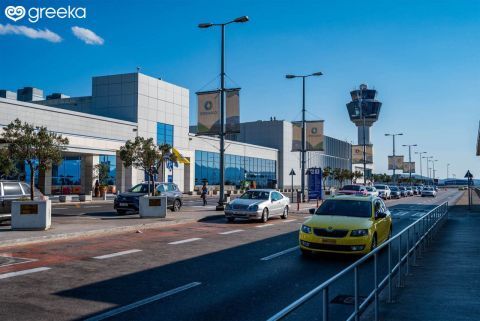
- Share this page on Facebook
- Share this page on Twitter
- Copy the URL of this page
- Search Please fill out this field.
- Manage Your Subscription
- Give a Gift Subscription
- Newsletters
- Sweepstakes
- Destinations
15 Most Beautiful Places to Visit in Greece
From an ancient amphitheater to idyllic islands, this list will help you decide where to visit in Greece
:max_bytes(150000):strip_icc():format(webp)/Stacey-Leasca-2000-631fabdcfe624115bea0ce8e25fdec96.jpg)
master2/Getty Images
No matter where you go in Greece, you’ll have a good time. The Mediterranean nation is filled with spectacular places to explore, from its historically rich cities like Athens and Thessaloniki to its famed islands. Greece has so many stunning places that it can feel impossible to narrow down where to go, but this list will give you more than a dozen ideas.
- Best tourist destination: Mykonos
- Underrated hidden gem: Gythio
- Best for families: Sifnos
- Best for couples: Corfu
- Best for solo travelers: Athens
Whether you're all about ancient historical sites or want to swim through azure waters, here are the 15 best places to visit in Greece.
Jomerci/Getty Images
Mykonos is an ultra-popular island known for always being a good time. It's the place to be during the summer for beachside parties that stretch long into the night (and often into the next day, too). Of course, there’s more to the island than just parties. It's home to its fair share of gorgeous beaches and historical sites, including Kato Mili, a row of four massive windmills built by the Venetians in the 16th century. Mykonos can be reached by a 45-minute direct flight.
Sebastian Condrea/Getty Images
The seaside community of Gythio is admittedly quiet, but it's by far one of the best places to visit when you need to get away from it all. Filled with colorful homes and golden-sand beaches, Gythio is also favored for its sea turtles that come and lay their eggs in early July.
GlobalP/Getty Images
Sifnos, a small island reachable by ferry from Athens in under three hours, is another spot known for its relaxing atmosphere. Plus, it's filled with so many beaches that you can find a large patch of sandy shoreline all for yourself, even at the height of summer. If a party scene is not your thing and somewhere low-key is your priority, Sifnos is one of the nicest Greek islands to visit.
Irjaliina Paavonpera/Travel + Leisure
Want to get a taste of Italy and Greece all in one go? Make your way to the stunning, romantic island of Corfu. Thanks to its proximity to its neighboring European nation, the island comes with plenty of Italian influence, reflected in its architecture, food, and way of life.
Gautier Houba/Travel + Leisure
As both Greece’s capital and largest city, Athens deserves at least a day or two of exploration — especially if it's your first time in Greece. Visitors can head to popular attractions like the Acropolis and Parthenon, but more modern neighborhoods like Exarcheia, known for its bohemian flair, are worth checking out, too.
happytrip/Getty Images
There are hundreds of Greek islands to choose from, but one gaining more attention by the minute is the positively quaint Milos. Accessible via a 40-minute direct flight from Athens, this island is the place to go for total rest and relaxation. Come to explore delightfully empty beaches tucked in between craggy cliffs, dine on octopus in restaurants sprinkled across the island, and enjoy quiet evenings sipping local wine while watching the sun dip into the azure waters.
Stefan Cristian Cioata/Getty Images
History buffs will love the town of Delphi, located about a 2.5-hour drive northwest of Athens. The community was home to the Oracle of Delphi , which people from all over the Mediterranean traveled to see. Here, visitors can still explore the Temple of Apollo's remains, along with several ancient theaters and stadiums preserved through the millennia.
Kirsty Nadine/Getty Images
To find even more historical delights, visit Epidaurus at the northeastern end of the Peloponnese. It’s beloved by archeology buffs for its Ancient Theatre , built in the fourth century B.C.E. to honor the god of medicine, Asclepius. Plan your trip around the Athens Epidaurus Festival , held each June through September, to catch musical performances, plays, and children's events in this historic amphitheater.
Posnov/Getty Images
Also in the eastern Peloponnese is the beautiful city of Nafplio, a 35-minute drive from Epidaurus. As Visit Greece explains, the myth behind the town is that it was founded by Nafplios, the son of Poseidon. Today, it's filled with ancient sites, including monuments and castles galore.
Admire waters a shade of blue you never knew existed in Halkidiki, a region in northern Greece 55 minutes from Athens by direct flight. This area is best known for its gorgeous beaches, which come with equally alluring soft sand, so you can lounge about all day.
Lara_Uhryn/Getty Images
For unbelievable views, pay a visit to Meteora, located in Thessaly, three hours' drive from Thessaloniki. The area is made up of massive rock formations reaching toward the sky. Inside the gorgeous formations sit several monasteries , and the whole site is UNESCO-listed.
Igor Tichonow/Getty Images
On Kefalonia, mix island time with a quick geology lesson at the Drogarati Cave , which comes with awe-inspiring stalactites and stalagmites hanging off the ceiling and jutting out from the sea floor, respectively.
Thessaloniki
Vladislav Zolotov/Getty Images
Find an urban escape in northern Greece with a visit to Thessaloniki. This port city is filled with historic sites like the White Tower of Thessaloniki and the Arch of Galerius, along with world-class restaurants and contemporary art museums, including the excellent Macedonian Museum of Contemporary Art, that will leave you inspired.
Messolonghi
Stamatios Manousis/Getty Images
Get a different sea view in Messolonghi, located on the western coast of Greece two hours and 45 minutes' drive from Athens. This town sits on a serene sea lake, with many who live here still making a living off fishing in the area. And though the town has great historical significance (especially around the Greek Revolution), it’s still an under-the-radar gem for international tourists.
Make one more historic stop at Olympia , this time for a lesson in sports history. Located on the western side of the Peloponnese, Olympia was the site of the very first Olympic Games, way back in 776 B.C.E. — more than 2,700 years ago. Visitors can see the ancient stadium and the temples of Zeus and Hera all in one trip.
Related Articles
13 things to know before you go to Greece and the Greek Islands

Mar 6, 2024 • 8 min read

These top planning tips can help you prep for a trip to Greece, from health and safety to local etiquette © EMS-FORSTER-PRODUCTIONS / Getty Images
Get out your bucket list; it’s time to cross off a major line item: Greece .
The fabled land remains tops for culture , food, outdoor travel, art and, of course, beaches and islands . As part of the border-free Schengen Area, it’s also incredibly easy to visit for many travelers worldwide. From advance booking to local etiquette – and health and safety issues when you're there – here's everything you need to know to plan a memorable trip to Greece.
1. Choose your season wisely
Your experience in Greece will be wildly different depending on when you visit . Summer is tops for action, family fun, and swimming in the Mediterranean Sea, but prices are at their highest and pre-booking is necessary for everything since it’s all so popular.
The shoulder seasons (spring and autumn) are a delight – prices are lower, and rooms and resources are more readily available. Winter offers a moody and budget-friendly retreat, great for walking, hiking and sedate travels where you will often be the only visitor around. Bear in mind that some businesses will shut down completely during the low season.
2. Prioritize your wishlist and make a plan
Do you want a grand tour, taking in the not-to-be-missed highlights all over Greece, or would you prefer to focus your time on exploring your favorite islands or regions, like the Peloponnese ?
The best way to choose from the dizzying array of options on offer is to focus on what is important to you – relaxing on beautiful beaches, learning more about Greece's fascinating history and culture , museums and archaeology, off-the-beaten-track wildlife, or partying until dawn – and plan accordingly.

3. Find the perfect island or region for you
Greece merits multiple trips as every island offers something different , and each of its regions is equally dazzling – you're never going to see everything on your first visit, and you'll ruin your trip if you pressure yourself to do just that. Also, don’t be fooled that the biggies are the only islands worthy of your attention. Though Mykonos , Santorini and the major names have plenty to offer, lesser-known islands (there are hundreds!) like Amorgos or Kythira are also a delight. They've also got the added bonus of smaller crowds and lower prices if that's a key consideration for you.
4. Athens isn't the only gateway to Greece
In many cases, you will find it useful to transit in or out of Greece via Athens , as its airport has connections with numerous international destinations, and the city itself is a gem . However, there are other international airports around the Greek mainland (such as in Thessaloniki ) and on some major islands (such as Mykonos , Santorini and Corfu ).
If you need any internal flights to get to your destination of choice, it's worth checking the price of these individually. Due to government subsidies, it can work out significantly cheaper to book each part of your Greek itinerary separately from your international flights.
5. Book everything in advance during peak season
In peak season , prices are high, and demand for car hire, accommodations and ferry tickets is even higher – this is not the time for ad hoc bookings on the fly. Greece is an incredibly popular summer destination, and the best options get snapped up well in advance.

6. Roads in Greece are for confident drivers
No one who has traveled on Greece’s roads will be surprised to hear that the country’s road fatality rate is one of the highest in Europe. Overtaking is listed as the greatest cause of accidents. Heart-stopping moments aside, your own car is a great way to explore off the beaten track if you are confident in your driving and keep a few key points in mind.
- The road network has improved enormously in recent years; many roads marked as dirt tracks on older maps have now been sealed, and a lot of the islands have very little traffic.
- There are regular (if costly) car-ferry services to almost all islands.
- Greece is not the best place to initiate yourself into motorcycling. If you're not confident on a motorbike, it may be best to park this option until you have more experience.
- All the big multinational car-rental companies are represented in Athens, and most have branches in major towns and popular tourist destinations. The majority of islands have at least one outlet.
7. Greece is not very wheelchair-friendly beyond Athens
Access for travelers with disabilities has improved somewhat in recent years, but the majority of accessible sights, hotels and restaurants tend to be located in Athens. While improvements are on the horizon for beach access, much of the rest of Greece remains inaccessible to wheelchairs, and the abundance of stones, marble, slippery cobbles and stepped alleys create frustrating barriers for those with mobility issues. People who have visual or hearing impairments are also rarely catered for.
Careful planning before you go can make a world of difference. There are specific resources online that provide links to local articles, resorts and tour groups catering to tourists with physical disabilities.
8. Pack the right kinds of clothing
Athenians are well-dressed, and the younger crowd is trendy, so keep your smart clothes for the urban catwalk of clubs and bars. Nevertheless, in Athens and other metropolises such as Rhodes , Thessaloniki and Iraklio , everyday attire such as shorts or jeans and casual tops are just fine.
Bars or fashionable restaurants require more effort – the scene is stylish rather than dressy. Think tops and trousers rather than T-shirts and cut-offs. In out-of-the-way places, you can wear casual clothing, and in summer, the heat will make you want to wear the least amount of fabric you can get away with – bring quick-drying tank tops and cool dresses.
Sturdy walking shoes are a must for the cobbled roads, and proper hiking boots are key if you're exploring the countryside on foot . It's respectful to cover up before entering churches.
9. Learn some basic Greek phrases
Greek is a tough language to learn thoroughly, but mastering a few basic greetings and niceties will make a world of difference in how Greek speakers receive you. In touristed areas, many people speak English, so rest assured that you can get by as long as you know some key phrases.

10. Carry cash and don't rely on cards or ATMs
As part of the EU, Greece uses the euro. In restaurants, a service charge is normally included in the bill, and while a tip is not expected (as it is in North America), it is always appreciated. Taxi drivers normally expect you to round up the fare, while bellhops who help you carry your luggage to your hotel room or stewards on ferries who take you to your cabin normally expect a small gratuity of between €1 and €3.
ATMs are found in every town large enough to support a bank and in almost all the tourist areas. Be aware that ATMs on the islands can lose their connection for a day or two at a time, making it impossible for anyone (locals included) to withdraw money. It’s useful to keep some backup cash just in case this happens during your visit.
Credit cards are now an accepted part of the commercial scene in Greece, although they’re often not accepted on many of the smaller islands or in small villages. Don't rely on your cards alone, and check in advance when dining or drinking if it's your only option.
11. Make sure you have good travel insurance
Although medical training is of a high standard in Greece, the public health service is underfunded. Hospitals can be overcrowded, and relatives are expected to bring in food for the patient – often a problem for solo travelers. Conditions and treatment are much better in private hospitals, which are expensive. All this means that a comprehensive travel insurance policy is essential.
There is at least one doctor on every island, and larger islands have hospitals. Pharmacies can dispense medicines that are available only on prescription in most European countries. If the situation isn't critical, it's often best to consult a pharmacist first for minor ailments.

12. Stay hydrated and remember how powerful the sun can be
Tap water isn't safe to drink on many islands – if in doubt, ask. Keeping a supply of bottled water to hand is essential for hydration as well as safety; many tourists underestimate how hot it can get in Greece, and heatstroke and serious sunburn are common on beaches with little shade.
Break up your sun-drenched siestas with time in the shade getting hydrated, and pack plenty of high-factor sunscreen. Mosquitos are an irritant rather than a danger – packing insect repellant is recommended.
13. Pickpocketing and other petty crime is common in busy places
The major risks of theft in Greece are pickpockets in the large cities and theft of belongings when lounging on busy, popular beaches (leave passports behind in hotel safes). Never leave your belongings unattended, and don't leave your bags hanging from the back of your seat where you can't keep an eye on them.
The tourist police work in cooperation with the regular Greek police. Each tourist police office has at least one member of staff who speaks English. If you need to report a theft or loss of passport, go to the tourist police first, and they will act as interpreters between you and the regular police.
Some unscrupulous taxi drivers will try to charge you extortionate rates from the airports to the city centers. Always make sure the meter is running or pre-negotiate and agree on the price before you get in.
This article was first published Mar 1, 2022 and updated Mar 6, 2024.
Explore related stories

Sep 11, 2024 • 7 min read
These 10 sunny destinations in Europe’s southern reaches provide a welcome respite from long nights and biting cold.

Sep 5, 2024 • 10 min read

Aug 21, 2024 • 10 min read

Jul 22, 2024 • 9 min read

Jul 18, 2024 • 2 min read

Jul 17, 2024 • 8 min read

Jul 9, 2024 • 7 min read

Jun 30, 2024 • 6 min read

Jun 21, 2024 • 8 min read

Jun 12, 2024 • 7 min read

Travel Guide
- Things to Do
- Regions in Brief
- Suggested Itineraries
- Entry Requirements & Customs
- Getting Around
- Visitor Information
- Tips on Accommodations
- Special-Interest Vacations
- Calendar of Events
- Sustainable Travel & Ecotourism
- Getting There
- Health & Safety
- Tips for Families
- Tips for Gay and Lesbian Travelers
- Tips for Senior Travelers
- Tips for Single Travelers
- Tips for Student Travelers
- Tips for Travelers with Disabilities
- Tips for Women Travelers
- Tips for Black Travelers
- Staying Connected
- Organized Tours
- Active Pursuits
Getting Around in Greece
Compared to the cheaper fare classes on ships and ferries, air travel within Greece can be expensive, but we recommend it for those pressed for time and/or heading for more distant destinations (even if the planes don't always hold strictly to their schedules). Until the late 1990s, Olympic Air maintained a monopoly on domestic air travel and had little incentive to improve service. Eventually it declared bankruptcy, and it was not until 2009 that it was purchased by the Greek-based Marfin Investment Group, which is proceeding with a major overhaul and improvement of services -- better computerized booking, reducing delays, and more hospitable flight attendants. It should be said that Olympic has had one of the best safety records of any major airline.
Book as far ahead of time as possible (especially in summer), reconfirm your booking before leaving for the airport, and arrive at the airport at least an hour before departure; the scene at a check-in counter can be quite hectic.
Olympic Air has offices in Athens, though most travel agents sell tickets. (For online booking, www.olympicair.com ) It offers mainland service to Aktaion Preveza, Alexandroupolis, Ioannina, Kalamata, Kavala, Kastoria, Kozani, and Thessaloniki. As for islands, Olympic services Astipalea; Corfu (aka Kerkira); Iraklion, Chania, and Sitia, Crete; Hios (aka Chios); Ikaria; Karpathos; Kassos; Kastellorizo; Kefalonia; Kos; Kithira; Leros; Limnos; Milos; Mykonos; Mitilini (aka Lesvos); Naxos; Paros; Rhodes; Samos; Santorini (aka Thira); Skiathos; Skyros; Siros; and Zakinthos.
Olympic's domestic flights leave from the new international airport at Spata. Most flights are to or from Athens, although during the summer there may be some interisland service. The baggage allowance is 15 kilos (33 lb.) per passenger, except with a connecting international flight; even the domestic flights generally ignore the weight limit unless you are way over. Smoking is prohibited on all domestic flights.
A round-trip ticket costs double the one-way fare. To most destinations within Greece from Athens, round-trip fares (including taxes) at this writing have been about 180€. From Athens to the nearer destinations, fares drop to about 130€. As you can see, such fares are not especially cheap, but there's no denying that for those with limited time, air travel is the best way to go. Ask, too, if Olympic still offers reduced fares for trips Monday through Thursday and trips that include a Saturday-night stay.
Only one other airline provides a real alternative to Olympic: Aegean Airlines. Check www.aegeanair.com , which allows you to order e-tickets. Its prices now pretty much match those of Olympic but are sometimes significantly cheaper. Their service is limited, but includes Alexandroupolis, Chania, Chios, Corfu, Ioannina, Iraklion, Kavala, Kos Mitilini, Mykonos, Patras, Rhodes, Samos, Santorini, and Thessaloniki. They also offer direct flights to London, Paris, Rome, Brussels, Barcelona, Madrid, Milan, Moscow, Bologna, Cyprus, and several major German cities. Foreign travel agents and travel booking websites may not be aware of Aegean Airlines, so visit the airline's actual website. People who have been flying Aegean for several years now find the airline reliable, safe, and hospitable.
In recent years, two other airlines have started up: Athens Airways (www.athensairways.com) and Sky Express (www.skyexpress.gr). Both offer limited service between Athens and various major cites and islands. Sky Express actually seems to be more like a charter airline. You are invited to look into their respective websites, but we must state that we cannot yet recommend these airlines based on either our own or friends' personal experience.
Note: Most Greek domestic tickets are nonrefundable, and changing your flight can cost you up to 30% within 24 hours of departure and 50% within 12 hours.
Driving in Greece is a bit of an adventure, but there's no denying that it's the best way to see the country at your own pace. By and large, the public transportation system outside of the main cities simply doesn't arrange its schedules for the convenience of tourists. Note: Greece has one of the highest accident rates in Europe, probably due somewhat to treacherous roads, mountain terrain, and poor maintenance of older cars as much as to reckless driving -- although Greeks are certainly aggressive drivers. Athens is a particularly intimidating place in which to drive at first, and parking spaces are practically nonexistent in the center of town. (Main routes in and out of cities are sometimes signed by white arrows on blue markers.) A few of the major cities are linked to Athens by modern expressways with tolls; as these highways are currently being upgraded -- and sections are to be privatized -- it is difficult to tell the exact toll charges, but the toll for Athens to Thessaloniki, for instance, has been about 5€ and may well go up. Accidents must be reported to the police for insurance claims.
If you intend to do a fair amount of driving, acquire a good, up-to-date map before you set off. The best source is a British shop that allows for online ordering, www.themapstore.com .
The Greek Automobile Touring Club (ELPA), 395 Mesoyion, 11343 Athens (tel. 210/606-8800 ), with offices in most cities, can help you with all matters relating to your car, issue International Driver's Licenses, and provide maps and information (tel. 174, 24 hr. daily). ELPA's emergency road service number is tel. 104. Though the service provided by the able ELPA mechanics is free for light repairs, definitely give a generous tip.
The price of gasoline fluctuates considerably from week to week and from service station to service station, but as of the time this guide went to press it was about 1.75€ per liter -- which works out to about US$9.75 for an American gallon. There is no shortage of gasoline stations in all cities, good-size towns, and major tourist centers, but if you are setting off for an excursion into one of the more remote mountain areas or to an isolated beach, fill up on gas before setting out.
Car Rentals -- You will find no end of car-rental agencies throughout Greece, both the familiar international ones and many Greek firms. There is considerable variation in prices, although rates in high season are shockingly high. But we'd be wary of renting from some local agency just because it seems a bit cheaper: if anything goes wrong with your car while out in the countryside, they will probably not be able to do much to help you.
Many cars have a standard shift; if you must have an automatic, make sure in advance that one is available (and be prepared to pay extra). In high season you are strongly advised to make your reservation before leaving home and well in advance. Always ask if the quoted price includes insurance; many credit cards make the collision-damage waiver unnecessary, but you will find that most rental agencies automatically include this in their rates. You can sometimes save by booking at home before you leave; this is especially advisable in summer. If you are shopping around, let the agents see the number of competitors' brochures you're carrying.
Most companies require that the renter be at least 21 years old (25 for some car models). There are occasional reports that some car-rental agencies will not rent to drivers 75 or over -- or even 70 -- but this does not seem to be an issue in Greece. If in doubt, inquire beforehand of the rental company. Technically you should possess an International Driver's License, but many car-rental agencies do accept a valid Australian, Canadian, E.U. nation, or U.S. driver's license. You must also have a major credit card (or be prepared to leave a very large cash deposit).
The major car-rental companies in Athens are Avis (tel. 210/322-4951), Budget (tel. 210/349-8700), Hertz (tel. 210/922-0102), National (tel. 210/349-3400), and AutoEurope (tel. 00800/11574-0300); all have offices in major cities, at most airports, and on most islands. Smaller local companies usually have lower rates, but their vehicles are often older and not as well maintained. If you prefer to combine your car rental with your other travel arrangements, we recommend Galaxy Travel, 35 Voulis, near Syntagma Square (tel. 210/322-2091; www.galaxytravel.gr). It's open Monday through Saturday during the tourist season.
Rental rates vary widely -- definitely ask around. In high season, daily rates with unlimited mileage will be about 65€ for a compact and 135€ for a full-size car; weekly rates with unlimited mileage might run 240€ for a compact and 300€ for a full size. In low season, rates are often negotiable in Greece when you show up in person. The prices quoted should include the various taxes (although there may be a surcharge for pickup and drop-off at airports in high season.)
Note: If you intend to take your car on a ferry or into a foreign country, you must have written permission from the car-rental agency.
Warning on Car Rentals & Licenses -- Legally, all non-E.U. drivers in Greece are required to carry an International Driver's License. In practice, most car-rental agencies will rent to Americans and other non-E.U. drivers with their national driver's licenses, although they usually have to have been licensed for at least 1 year. (One major exception is on the island of Hios, where the International Driver's License is usually required.) This is fine as long as you don't get involved in an accident -- especially one involving personal injury. Then you could discover that your insurance is voided on a technicality. Meanwhile, you run the risk of an individual policeman insisting that you must have the international license. Best, then, is to obtain one before leaving home (from your national automobile association) or from the Greek Automobile Touring Club (EPLA).
Driving Rules -- In Greece, you drive on the right, pass on the left, and yield right of way to vehicles approaching from the right except where otherwise posted. Greece has adopted international road signs, although many Greeks apparently haven't learned what they mean yet. The maximum speed limit is 100kmph (62 mph) on open roads, and 50kmph (30 mph) in town, unless otherwise posted. Seat belts are required. The police have become stricter in recent years, especially with foreigners in rental cars; alcohol tests can be given and fines imposed on the spot. (If you feel you have been stopped or treated unfairly, get the officer's name and report him at the nearest tourist police station.) Honking is illegal in Athens, but you can hear that law broken at any odd moment.
Parking -- Parking a car has become a serious challenge in the cities and towns of Greece. The better hotels provide parking, either on their premises or by arrangement with a nearby lot (our hotel reviews include information on where to park). Greece has few public parking garages or lots; follow the blue signs with the white P and you may be lucky enough to find a space. Most city streets have restricted parking of one kind or another. In some cities, signs -- usually yellow, and with the directions in English as well as in Greek -- will indicate that you can park along the street but must purchase a ticket from the nearest kiosk. Otherwise, be prepared to park fairly far from your base or destination. If you lock the car and remove valuables from sight, you should not have to worry about a break-in.
Taxi Tips: Fares, Zones & Surcharges
Certainly in Athens and several other large cities, travelers may prefer a taxi to driving themselves. Here are some tips that will help you understand and navigate the taxi system as you travel in Greece:
- Taxi rates are in constant (upward) flux, so the rates you see here are the ones in effect as we go to press. First, (if it's before midnight), check to see that the number next to the Euro display on the meter is "1" and not "2" -- the latter is the setting for rates for midnight to 5am or outside the city limits (about double the regular rate). If that's not the case, indicate that you notice.
- All fares are subject to change (by law, that is), but at the time this guide went to press, the meter is allowed to start at the basic 1.20€ as you set off -- check to see if this is the case. Drivers have been known to start with a higher number already registered; or they leave the meter off, then try to extort a larger fare from you. Even if you don't speak a word of Greek besides "taxi," point at the meter and say "meter." The basic rate is higher between midnight and 5am.
- The fare from and to the airport in Athens has been fixed at 35€ except between midnight and 5am when it is 50€. (The fare depends on the arrival time at the destination.) The minimum fare for any trip in and around Athens and Piraeus is 3.10€ and 4€ for the rest of the country. But you shouldn't pay much more than 15€ for a trip within Athens itself.
- At least in the major cities you should be able to ask for receipt from the meter -- if not printed, you can ask the driver to write one out. By the way, the taxi should also have the A/C on when the weather calls for it -- and do not let the driver charge you extra for it.
- For a group, a driver may insist that each person pay the full metered fare. Pay only your proportion of the fare if all of you have the same destination. Pairs or groups of tourists should have a designated arguer; the others can write down names and numbers, stick with the luggage, or look for help -- from a policeman, maitre d', or desk clerk.
- Late at night, especially at airports, ferry stops, and bus and railroad stations, a driver may refuse to use his meter and demand an exorbitant fare. Smile, shake your head, and look for another cab; if none are available, start writing down the driver's license number and he will probably relent.
- Again, these may change, but at press time, legal surcharges include: 2.80€ for the Thessaloniki airport, and 2.30€ for other major airports; .95€ pickup at ports, bus terminals, or train terminals; .35€ per piece of luggage over 10 kilos (22 lb.). (Road tolls are charged to the passengers -- for example, you will pay 2€ for the new road from the airport to Athens.) Radio taxis (called from hotels, for instance) get a 2.50€ surcharge, 5€ for a fixed appointment.
- A driver may say that your hotel is full, but that he knows a better and cheaper one. Laugh, and insist you'll take your chances at your hotel.
- A driver may want to let you off where it's most convenient for him. Be cooperative if it's easier and quicker for you to cross a busy avenue than for him to get you to the other side, but you don't have to get out until you're ready.
If things are obviously not going well for you, conspicuously write down the driver's name and number and report him to the tourist police (tel. 171 ) if he has the nerve to call your bluff. One of the best countertactics is to simply open the door slightly; he won't want to risk damaging it. (Two passengers can each open a door.)
Our final advice: Don't sweat the small change. So the driver is charging you 12€ for a ride you have been told should be about 10€; are you prepared to go to court for 2€? Any difference above 5€ probably should be questioned -- but it may have to do with traffic delays when the meter ticks at the rate of 9.60€ per hour. Most cabbies are honest -- just be aware of the possibilities. And be sure to reward good service with a tip.
Ferries are the most common, cheapest, and generally most "authentic" way to visit the islands, though the slow roll of a ferry can be stomach-churning. A wide variety of vessels sail Greek waters -- some huge, sleek, and new, with TV lounges, discos, and good restaurants; some old and ill kept, but pleasant enough if you stay on deck.
Ferry service (often accommodating vehicles) is available between Athens (Piraeus) and several other Greek ports. There's regular service from Piraeus to Aegina and to Poros in the Saronic Gulf; most of the Cyclades; Chania and Iraklion on Crete; Hios; Kos; Lesvos; Rhodes; and Samos. For the Cyclades, crossing is shorter and less expensive from Rafina, an hour east of Athens. From Patras, there's daily service to Corfu, Ithaka, and Kefalonia. The Sporades have service from Ayios Konstandinos, Kimi, and Volos (and then among the several islands). There's also service between many of the islands, even between Crete and Rhodes, as well as car-crossing to and from Turkey between Hios and Çesme; Lesvos and Dikeli; and Samos and Kusadasi.
There is also frequent ferry service (often also for cars) between several Italian ports (Ancona, Bari, Brindisi, Venice) and Patras (with stops at several major islands en route) But if you intend to continue on with your vehicle into Turkey or Italy or plan to enter Greece from Turkey, or Italy, you should inquire long before setting off for either country, and make sure that you have all the necessary paperwork.)
So-called "Flying Catamarans" and hydrofoils dubbed "Flying Dolphins" also serve many of the major islands. Undoubtedly faster, they cost almost twice as much as regular ferries, and their schedules are often interrupted by weather conditions. (Never rely on a tight connection between a hydrofoil and, say, an airplane flight.) Ferries, too, often don't hold exactly to their schedules, but they can be fun if you enjoy opportunities to meet people. Drinks and snacks are almost always sold, but the prices and selection are not that good, so you may want to bring along your own.
The map of Greece offered by the Greek National Tourism Organization (EOT), which indicates the common boat routes, is useful in planning your sea travels. Once you've learned what is possible, you can turn your attention to what is available. Remember that the summer schedule is the fullest, spring and fall bring reduced service, and winter schedules are skeletal.
There are dozens of shipping companies, each with its own schedule -- which, by the way, are regulated by the government. Your travel agent might have a copy of the monthly schedule Greek Travel Pages, or you can search online at www.gtp.gr or www.ferries.gr . When in Greece, it's best to go straight to an official information office, a travel agency, or the port authority as soon as you arrive at the place that you intend to leave via ferry.
Photos can give you some idea of the ships, but remember that any photo displayed was probably taken when the ship was new, and it is unlikely that anyone will be able (or willing) to tell you its actual age. The bigger ferries offer greater stability during rough weather. Except in summer, you can usually depend on getting aboard a ferry by showing up about an hour before scheduled departure -- interisland boats sometimes depart before their scheduled times -- and purchasing a ticket from a dockside agent or aboard the ship itself, though this is often more expensive.
Your best bet is to buy a ticket from an agent ahead of time. In Athens, we recommend Galaxy Travel, 35 Voulis, near Syntagma Square (tel. 210/322-2091; www.galaxytravel.gr); and Alkyon Travel, 97 Akademias, near Kanigos Square (tel. 210/383-2545 ). During the high season, both agencies keep long hours Monday through Saturday.
Note: Different travel agencies sell tickets to different lines -- this is usually the policy of the line itself -- and one agent might not know or bother to find out what else is offered. However, if you press reputable agencies, they will at least tell you the options. The port authority is the most reliable source of information, and the shipping company itself or its agents usually offer better prices and may have tickets when other agents have exhausted their allotment. It often pays to compare vessels and prices.
First class usually means roomy air-conditioned cabins and its own lounge; on some routes it costs almost as much as flying. However, on longer overnight hauls, you're on a comfortable floating hotel and thus save the cost of lodging. Second class means smaller cabins (which you will probably have to share with strangers) and its own lounge. The tourist-class fare entitles you to a seat on the deck or in a lounge. (Tourists usually head for the deck, while Greeks stay inside and watch TV.) Hold onto your ticket; crews conduct ticket-control sweeps.
Note: Those taking a ferry to Turkey from one of the Dodecanese islands must submit passport (or E.U. citizens, an ID) and payment to an agent the day before departure.
To give you some sense of the fares, here are examples for standard accommodations from Piraeus at press time (compare with airfares during this same time): to Crete (Iraklion), 80€-110€; Kos, 60€; Mitilini (Lesvos), 68€; Mykonos, 60€; Rhodes, 100€; Santorini, 60€. And don't be surprised if small taxes get added at the very end.
Early & Late-Season Ferries -- In the early and late weeks of the tourist season -- from April to early May, and September to November -- boat service can be unpredictable. Boat schedules, at the best of times, are tentative -- but during this time, they are wish lists, little more. Our best advice is that you wait until you get to Greece, then go to a major travel agency and ask for help.
By Hydrofoil
Hydrofoils (often referred to as Flying Dolphins, or by Greeks as to flying ) are faster than ferries and their stops are much shorter. They have comfortable airline-style seats and are less likely to cause seasickness (but they are noisy) but at least smoking is prohibited. Although they cost somewhat more than ferries, are frequently fully booked in summer, can be quite bumpy during rough weather, and give little or no view of the passing scenery, they're the best choice if your time is limited. Everyone should ride one of these sleek little crafts at least once.
There is regular hydrofoil service to many of the major islands; new routes and new schedules appear often. Longer trips over open sea, such as between Santorini and Iraklion, Crete, may make them well worth the extra expense. (A one-way fare from Heraklion to Santorini in high season, for instance, is 40€-50€.) The forward compartment offers better views but is also bumpy.
The Flying Dolphins are operated by Hellenic Seaways, 6 Astiggos, Karaiskaki Square, 18531 Piraeus (tel. 210/419-9000; www.hellenicseaways.gr). The service from Zea Marina in Piraeus to the Saronic Gulf islands and throughout the Sporades is recommended for its speed and regularity. There is also service from Rafina, on the east coast of Attika, to several of the Cyclades islands.
By Sailboat & Yacht
Many more tourists are choosing to explore Greece by sailboat or yacht. There are numerous facilities and options for both. Experienced sailors interested in renting a boat in Greece can contact the Hellenic Professional and Bareboat Yacht Owners' Association, A8-A9 Zea Marina, 18536 Piraeus (tel. 210/452-6335 ). Less experienced sailors should consider signing up for one of the flotillas -- a group of 12 or more boats sailing as a group led by a boat crewed by experienced sailors; the largest of such organizations is Sunsail USA, 93 North Park Place Boulevard, Clearwater FL 33759 (tel. 888/350-3568; www.sunsail.com). However, travel agencies should be able to put you in touch with other such outfits.
At the other extreme, those who want to charter a yacht with anything from a basic skipper to a full crew should first contact the Hellenic Professional and Bareboat Yacht Owners' Association or Ghiolman Yachts, 8 Propileon, 11742 Athens (tel. 210/325-5000; www.ghiolman.com). If you feel competent enough to make your own arrangements, contact Valef Yachts Ltd. (tel. 800/223-3845 in the U.S.; www.valefyachts.com). In Greece, you can contact one of these organizations or try a private agency such as Alpha Yachting, 67 Leoforos Possidonos, 16674 Glyfada (tel. 210/968-0486; www.alphayachting.com).
Greek trains are generally slow but are inexpensive and fairly pleasant. The Hellenic State Railway (OSE) also offers bus service from stations adjacent to major train terminals. (Bus service is faster, but second-class train fare is nearly 50% cheaper, and trains offer more comfortable and scenic rides.) If you are interested in special arrangements involving rail passes for Greece (sometimes in combination with Olympic Air flights within Greece), check out www.raileurope.com or call tel. 800/622-8600 in the U.S. or 800/361-7245 in Canada.
For information and tickets in Athens, visit the OSE office at 1-3 Karolou (tel. 210/522-4563 ), or at 6 Sina (tel. 210/362-4402 ), both near Omonia Square. From abroad, visit www.ose.gr.
Purchase your ticket and reserve a seat ahead of time, as a 50% surcharge is added to tickets purchased on the train, and some lines are packed, especially in summer. A first-class ticket may be worth the extra cost, as seats are more comfortable and less crowded. There is sleeper service on the Athens-Thessaloniki run. Though the costly sleepers are a good value, you must be prepared to share a compartment with three to five others. Express service (6 hr.) runs twice a day, at 7am and 1pm.
Trains to northern Greece (Alexandropolis, Florina, Kalambaka, Lamia, Larissa, Thessaloniki, Volos, and other towns) leave from the Larissa station (Stathmos Larissis). Trains to the Peloponnese (Argos, Corinth, Patras) leave from the Peloponnese station (Stathmos Peloponnisou). Take trolley no. 1 or 5 from Syntagma Square to either station.
The Peloponnese circuit from Corinth to Patras, Pirgos (near Olympia), Tripolis, and Argos is one way to experience this scenic region, though the Athens-Patras stretch is often crowded. The spectacular spur between Diakofto and Kalavrita is particularly recommended for train enthusiasts.
Public buses are inexpensive but often overcrowded. Local bus lines vary from place to place, but on most islands the bus stop is in a central location with a posted schedule. Destinations are usually displayed on the front of the bus, but you might have to ask. The conductor will collect your fare after departure.
Note that in Athens and other large cities, a bus ticket must be purchased before and validated after boarding. Kiosks usually offer bus tickets as well as schedules. The Athens metro ticket's cost is based on the destination, but usually costs about .70€
Note: Save your ticket in case an "inspector" comes aboard. If you don't have a ticket, the fine can be at least 30 times the price of the ticket!
Greece has an extensive long-distance bus service (KTEL), an association of regional operators with green-and-yellow buses that leave from convenient central stations. For information about the long-distance-bus offices, contact the KTEL office in Athens (tel. 210/512-4910 ).
In Athens, most buses heading to destinations within Attica leave from the Mavromate terminal, north of the National Archaeological Museum. Most buses to Central Greece leave from 260 Liossion, 5km (3 miles) north of Omonia Square (take local bus no. 024 from Leoforos Amalias in front of the entrance to the National Garden and tell the driver your destination). Most buses to the Peloponnese, and to western and northern Greece leave from the long-distance bus terminal at 100 Kifissou, 4km (2 1/2 miles) northeast of Omonia Square. To get to the long-distance bus terminal, take local bus no. 051 from the stop located 2 blocks west of Omonia, near the big church of Ayios Konstandinos, at Zinonos and Menandrou.
Express buses between major cities, usually air-conditioned, can be booked through travel agencies. Make sure that your destination is understood -- you wouldn't be the first to see a bit more of Greece than bargained for -- and determine the bus's schedule and comforts before purchasing your ticket. Many buses are not air-conditioned, take torturous routes, and make frequent stops. (NO SMOKING signs are generally disregarded by drivers and conductors, as well as by many older male passengers.)
Organized and guided bus tours are widely available. Some of them will pick you up at your hotel; ask the hotel staff or any travel agent in Athens. We especially recommend CHAT Tours, the oldest and probably most experienced provider of a wide selection of bus tours led by highly articulate guides. Almost any travel agent can book a CHAT tour, but if you want to deal with the company directly, contact them through their website, www.chatours.gr; in Athens, the CHAT office is at 9 Xenofontos, 10557 Athens (tel. 210/323-0827 ). Then there is the longtime favorite, American Express, with offices all over North America and Europe; the Athens office (tel. 210/325-4690 ) is located at 31 Panepistimiou, right on the corner of Syntagma Square.
Note: Readers have complained that some bus groups are so large they feel removed from the leader; inquire about group size if this concerns you.
Note : This information was accurate when it was published, but can change without notice. Please be sure to confirm all rates and details directly with the companies in question before planning your trip.

- All Regions
- Australia & South Pacific
- Caribbean & Atlantic
- Central & South America
- Middle East & Africa
- North America
- Washington, D.C.
- San Francisco
- New York City
- Los Angeles
- Arts & Culture
- Beach & Water Sports
- Local Experiences
- Food & Drink
- Outdoor & Adventure
- National Parks
- Winter Sports
- Travelers with Disabilities
- Family & Kids
- All Slideshows
- Hotel Deals
- Car Rentals
- Flight Alerts
- Credit Cards & Loyalty Points
- Cruise News
- Entry Requirements & Customs
- Car, Bus, Rail News
- Money & Fees
- Health, Insurance, Security
- Packing & Luggage
- -Arthur Frommer Online
- -Passportable
- Road Trip Guides
- Alaska Made Easy
- Great Vacation Ideas in the U.S.A.
- Best of the Caribbean
- Best of Mexico
- Cruise Inspiration
- Best Places to Go 2024

IMAGES
VIDEO
COMMENTS
Ferries are the classic way to traverse Greece's 227 islands, with myriad connections linking islands and the mainland during the summer months. The Greek ferry network is comprehensive, so it's easy to island-hop almost at will. The boats going between the islands include fast car ferries, slower traditional boats, sleek catamarans and spidery ...
When to Travel to Greece. Many people associate Greece with being a summer travel destination. However, the country is a wonderful year-round destination. The best time for you to travel will vary depending on your specific interests. Spring (March to May) Spring and Autumn are the shoulder seasons for travelling in Greece. The temperatures are ...
Considering that Greece has nearly 3,000 islands (227 inhabited) and more than 8,500 miles of coastline, it should come as no surprise that boats are one of the most common ways to get around.
5. Explore the islands. The Greek islands are some of the best and most popular in the world. Soak in the sun, admire the white sand and blue-roofed houses, see the windmills (an iconic feature of the Cyclades) and just relax. Some highlights are Milos, Santorini, Ios, Mykonos, Naxos, Zakynthos, Rhodes, and Kos.
Day 7: get lost in Greece's best palace at Knossos. ... 10 amazing hotels around the world you can book with points in 2024. Aug 1, 2024 • 11 min read. Beaches. The best places to travel in your 20s. Jul 23, 2024 • 9 min read. Archaeology. A first-time guide to the Acropolis.
The largest of the Ionian Islands in size, Kefalonia is one of the most beautiful places to visit in Greece and has semi-wild horses running around Mount Ainos in its center. Zakynthos is home to ...
A lot depends on where you want to travel within Greece. if you want to go to an island, you normally have to take a ferry, although sometimes you can fly. On an island, or the mainland, you can drive, take a KTEL bus, a train, or hire another vehicle. You can even cycle around Greece if you're fit enough!
Visitors in Greece usually travel by public transportation. In Athens, the metro system is easy and affordable, and the best way to move around the capital city. If you wish to travel to different cities, both the bus and train services are easily accessible and affordable.
How to travel around the Greek islands ... Mix and match our best Greece itineraries to build the one-week, two-week or even three-week trip of your dreams. Beaches. Discover 25 of the world's best beaches. Aug 26, 2024 • 19 min read. Tips & Advice. 10 of the best places to go in Europe in autumn.
Days 7-9. The Portara, an ancient gate above Naxos Harbor. Matteo Colombo/Getty Images. You'll need a morning for the four-hour ferry ride to Naxos, an island offering a solid combo of ...
Day 8 - Ios. If you're lucky enough to be continuing on for a 10 days in Greece itinerary beyond the Athens-Mykonos-Santorini route, then today it's only a short 40-minute ferry ride to the nearby island of Ios. A relatively unknown option compared to the likes of Mykonos and Santorini, Ios is famous in its own right.
1. Avoid peak season. Unless you absolutely have to travel to Greece during high summer because of school holidays, try to visit outside the peak season (late July to the end of August). At this time, the weather is scorching, prices soar, and you'll struggle to escape the crowds - this is when the Greeks take their holidays too.
Once in Greece, the best way to get around is with a rental car. This lets you get to all the destinations you want to get to on your own schedule. A manual rental car can go for €15 a day in the low season up to €35 a day in the higher seasons and will ensure you get to all the best places in Greece.
Inter-island travel means taking ferries, catamarans or hydrofoils, which will eventually get you to any of the sixty-plus inhabited isles. Internal flights are relatively expensive, but can save literally days of travel: Athens-Rhodes is just two hours return, versus 28 hours by boat. By bus. By train. By sea.
The best way to travel among these islands is by boarding a fast ferry. The ferry travel times between these Greek islands vary from 2 hours to 45 minutes (Paros-Naxos). The three islands can also make an excellent escape from the bustle of Santorini and are the perfect destination for a one-day trip or a weekend away.
There are a few ways to travel the islands - you can hire a private yacht, take the ferries, go with a tour boat or fly. Ensure you research which islands have airports and which you'll need to travel by boat. If there are both options, I would jump on a plane from the mainland and then opt for a ferry in between islands for a very ...
5. Epiros. In Greece's west lies Epiros, a remote region of soaring mountain peaks, fast-flowing rivers and hidden rock canyons. Hike to the alpine heights of Mt Tymfi's Dragon Lake, which freezes over in winter, or traverse the thick forests, inclines and descents of spectacular Vikos Gorge.
The longest journey time is around 4 ½ hours making driving the easiest, most convenient, and most cost-efficient way to travel around the Greek mainland. You can browse Rentalcars.com to compare options for hiring a car. A mainland Greece road trip is one of the best ways to experience this relatively undiscovered part of the country by tourists.
Key Takeaways. One of the most useful Greece travel tips is to plan your itinerary in advance, especially during peak tourist seasons, to ensure you can visit the places you're interested in and secure accommodations.; The peak tourist season is from June to August, when temperatures are high, while spring (April to June) and fall (September to October) offer milder weather and fewer crowds.
17. Voidokilia Beach. Voidokilia beach, set on the southwestern Peloponnese on the Ionian Sea is one of the most beautiful beaches in the Mediterranean. Shaped like the Greek letter Omega (Ω) and surrounded by gold, soft sand, and a Natura-2000 lagoon, this is one of the best destinations in Greece.
Greece transportation: Discover the best ways to travel there and how to move around: Flights, airports, greek ferries, cars, trains, buses and taxis and more. (+30) 211 85 03 006. ... what is the best way to travel to Greece and how can you move around? You can reach the International Airport of Athens and then move around by plane, bus/car ...
Greece has so many stunning places that it can feel impossible to narrow down where to go, but this list will give you more than a dozen ideas. Best tourist destination: Mykonos. Underrated hidden ...
5. Book everything in advance during peak season. In peak season, prices are high, and demand for car hire, accommodations and ferry tickets is even higher - this is not the time for ad hoc bookings on the fly. Greece is an incredibly popular summer destination, and the best options get snapped up well in advance.
Your best bet is to buy a ticket from an agent ahead of time. In Athens, we recommend Galaxy Travel, 35 Voulis, near Syntagma Square (tel. 210/322-2091; www.galaxytravel.gr); and Alkyon Travel, 97 Akademias, near Kanigos Square (tel. 210/383-2545). During the high season, both agencies keep long hours Monday through Saturday.
There are more than 6,000 Greek islands, but only 227 are inhabited.Island hopping - whether aboard a sturdy ferry or a sleek yacht - is the best way to experience them. Whisk across seas home ...